Could you pass the U.S. citizenship test?
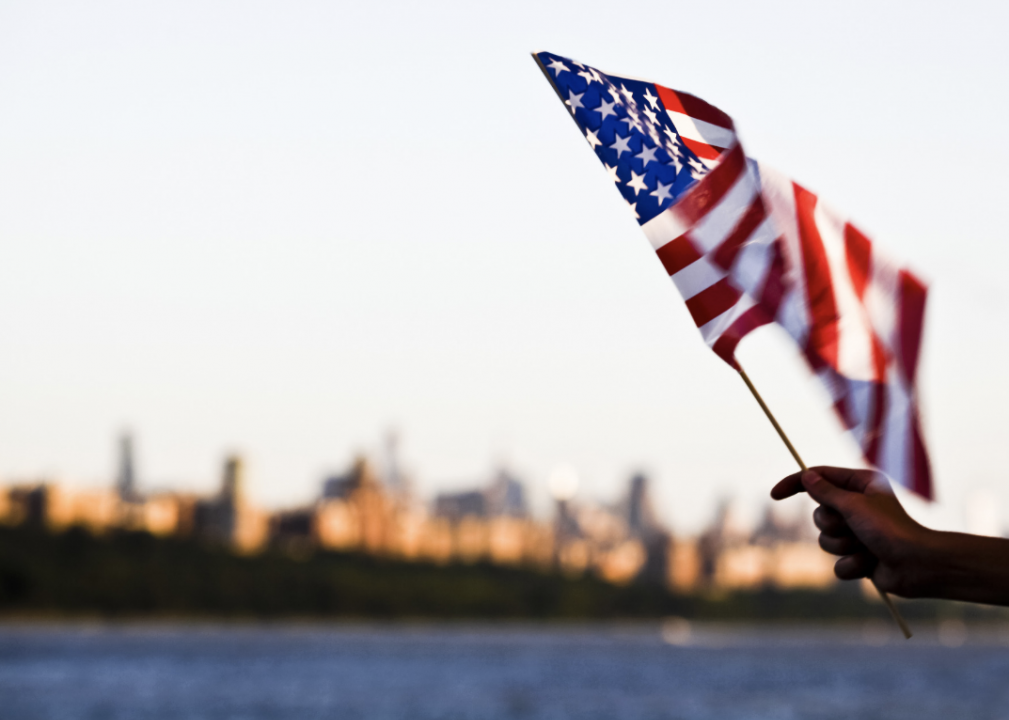
Jan Willem van Hofwege // Shutterstock
Could you pass the U.S. citizenship test?
Passing the U.S. citizenship test is a vital step toward becoming an American citizen. To pass the civics portion of the test, an applicant must correctly answer six of up to 10 oral U.S. history and government-related questions administered by a U.S. citizen immigration services officer. The questions come from a pool of 100 possible questions.
The questions tell the story of how the 13 colonies fought against Great Britain in the American Revolutionary War; how the U.S. Constitution came to be; and how the federal government was formed by the founding fathers including Benjamin Franklin, George Washington, John Adams, and James Madison.
They also cover U.S. history through World Wars I and II, the Great Depression, the Vietnam War, the Cold War, and 9/11. Some questions require knowledge of the Democratic and Republican parties and the workings of the U.S. Congress.
After passing the test, paying a fee, and completing all other necessary steps and paperwork, applicants who were once considered foreigners become full-fledged American citizens under the U.S. Constitution. Once naturalized, new citizens are entitled to the full rights of a person born in the United States.
Stacker has compiled a list of the 100 questions and answers on the civics test and formatted them like a quiz in the following gallery. Think you can pass the test with flying colors? Read on to see just how tough the questions are—and how solid your high school history class recall is. Kicking things off, here’s the first question:
#1: What is the supreme law of the land?
You may also like: Your guide to the Cabinet of the United States
![]()
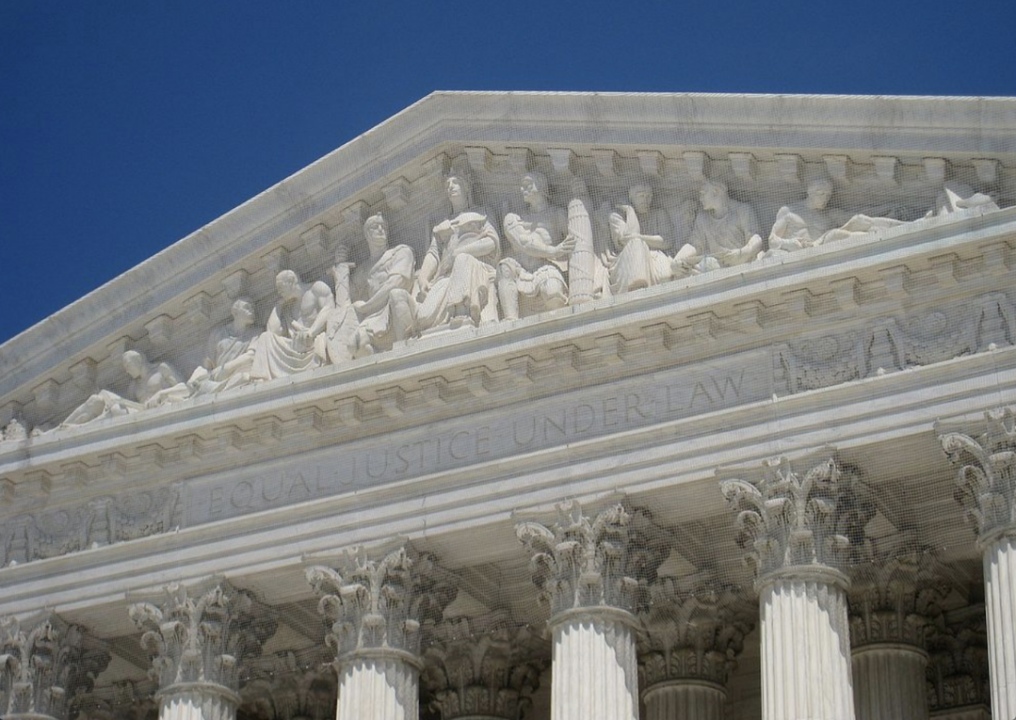
Daderot // Wikimedia Commons
Question #1: What is the supreme law of the land?
Answer #1: The Constitution.
The U.S. Constitution, written in 1787 in the Pennsylvania State House, was ratified by the original 13 colonies in 1788 and went into full effect in 1789 when 38 delegates from each state signed the document. The master copy of the constitution, comprised of seven articles, is on display at the National Archives in Washington D.C.
Question #2: What does the Constitution do?
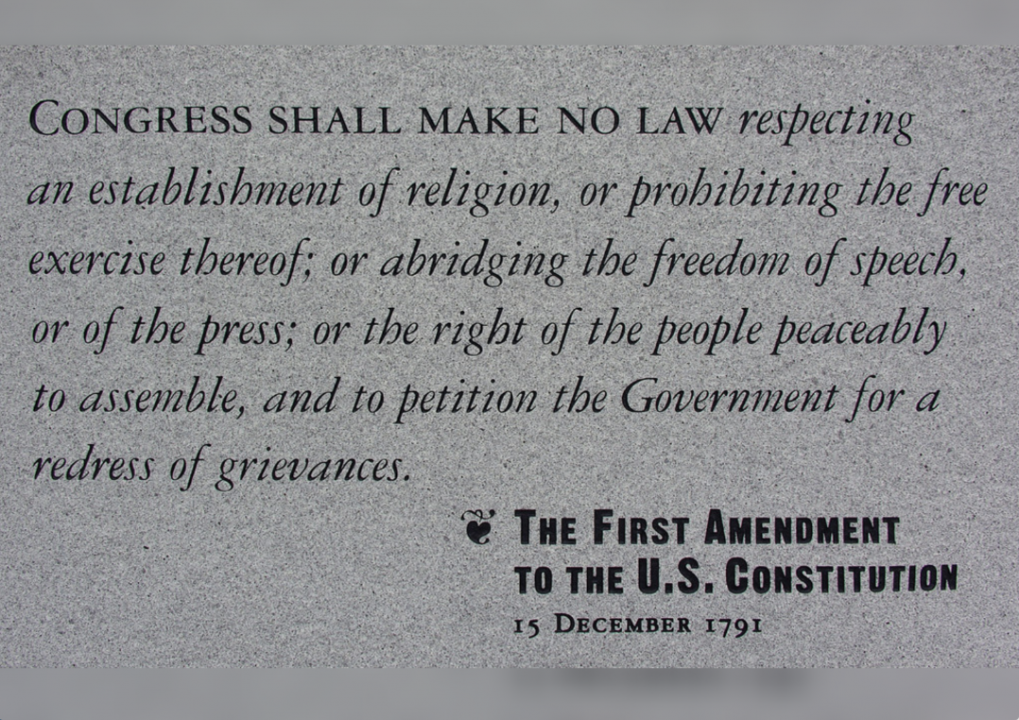
Ed Uthman // Flickr
Question #2: What does the Constitution do?
Answer #2: Sets up the government; defines the government; protects basic rights of Americans.
The U.S. Constitution sets up the government into three branches—executive, legislative, and judicial. The executive branch consists of the U.S. president, the vice president, the Cabinet, and members of all federal agencies, departments, committees, and commissions. The legislative branch includes the U.S. Congress, which is made up of the Senate and House of Representatives. The judicial branch is the U.S. Supreme Court and other federal courts. The rights of American citizens are protected under government laws and by elected members, who must be of a certain age to serve.
Question #3: The idea of self-government is in the first three words of the Constitution. What are these words?
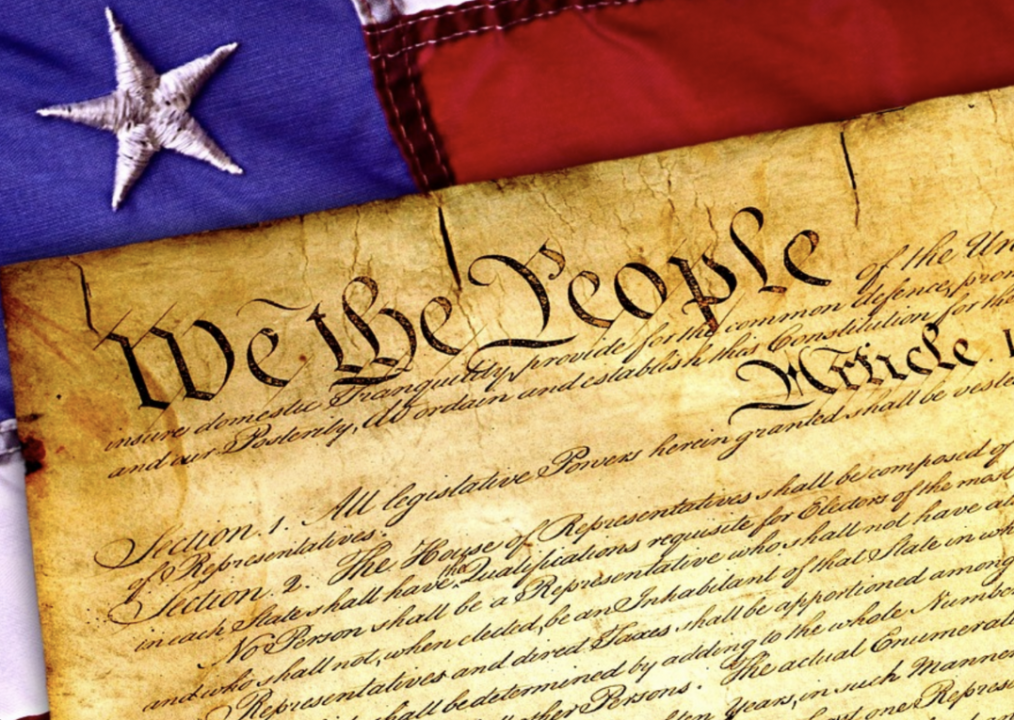
Pixabay
Question #3: The idea of self-government is in the first three words of the Constitution. What are these words?
Answer #3: “We the people…”
All citizens of the U.S. are included in the first three words, “We the people,” of the U.S. Constitution’s preamble.
Question #4: What is an amendment?
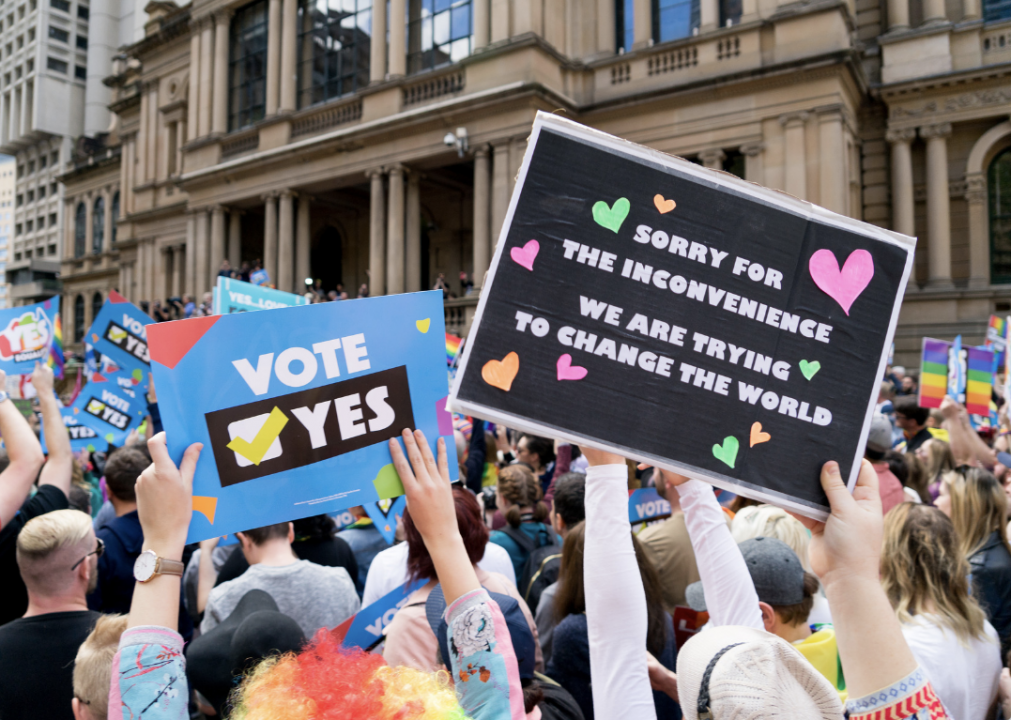
Felman // Shutterstock
Question #4: What is an amendment?
Answer #4: A change (to the Constitution); an addition (to the Constitution).
The U.S. Constitution has more than two dozen amendments, changes or additions to clarify its meaning and include provisions not included in the first draft. The changes to the original draft range widely. Notable amendments to the U.S. Constitution include the freedom of religion and speech, the right to bear arms, the abolition of slavery, and allowing African American men and all women to vote.
Question #5: What do we call the first 10 amendments to the Constitution?
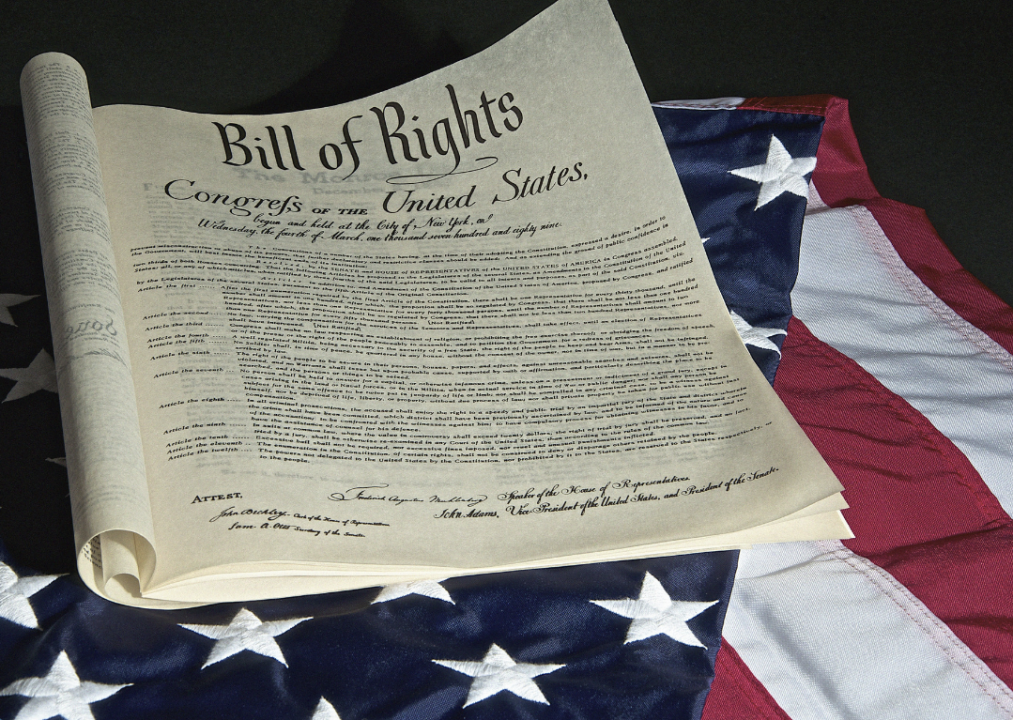
Charles Haire // Shutterstock
Question #5: What do we call the first 10 amendments to the Constitution?
Answer #5: The Bill of Rights.
The first 10 amendments to the U.S. Constitution, written by James Madison in 1791, are known as the Bill of Rights. The amendments were added to protect citizens, expand freedoms, and to limit government power. After several representatives objected to the 10 changes, a decision was made to place the Bill of Rights at the end of the document under Article VII, rather than directly editing the original text.
Question #6: What is one right or freedom from the First Amendment?
You may also like: Political Cartoons From The Last 100 Years
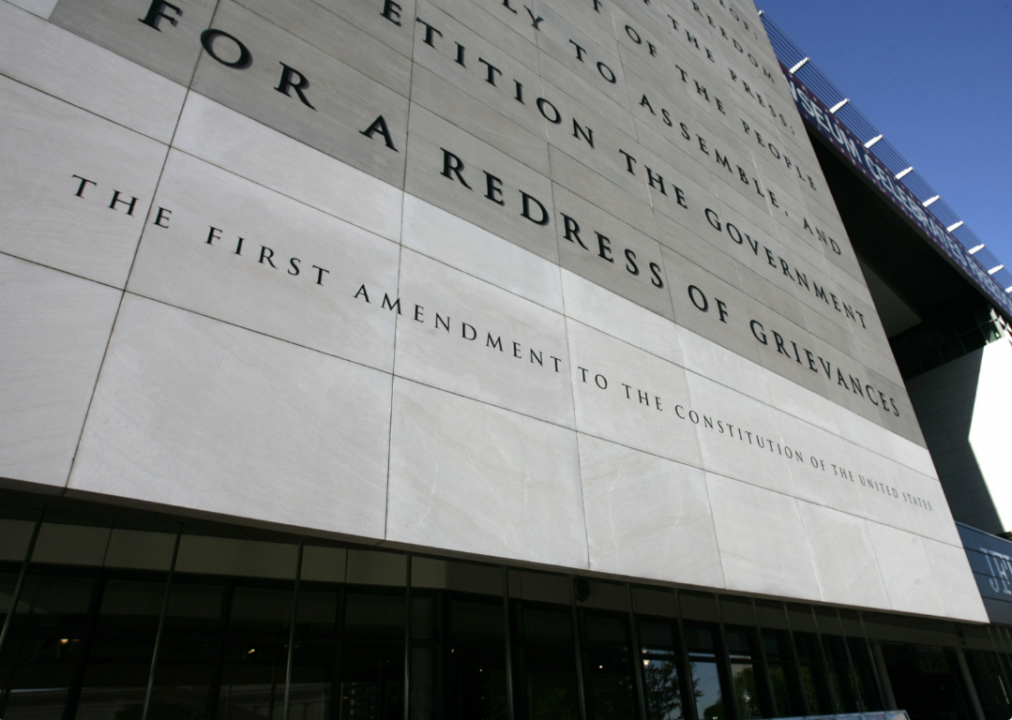
Anthony Correia // Shutterstock
Question #6: What is one right or freedom from the First Amendment?
Answer #6: Speech; religion; assembly; press; petition the government.
There are five fundamental rights in the First Amendment. The first two allow people the right to say and believe whatever they want; the third allows people to assemble peacefully; the fourth allows people the right to report the news without government censorship; and the fifth allows people the right not to be witnesses against themselves in a criminal case.
Question #7: How many amendments does the Constitution have?
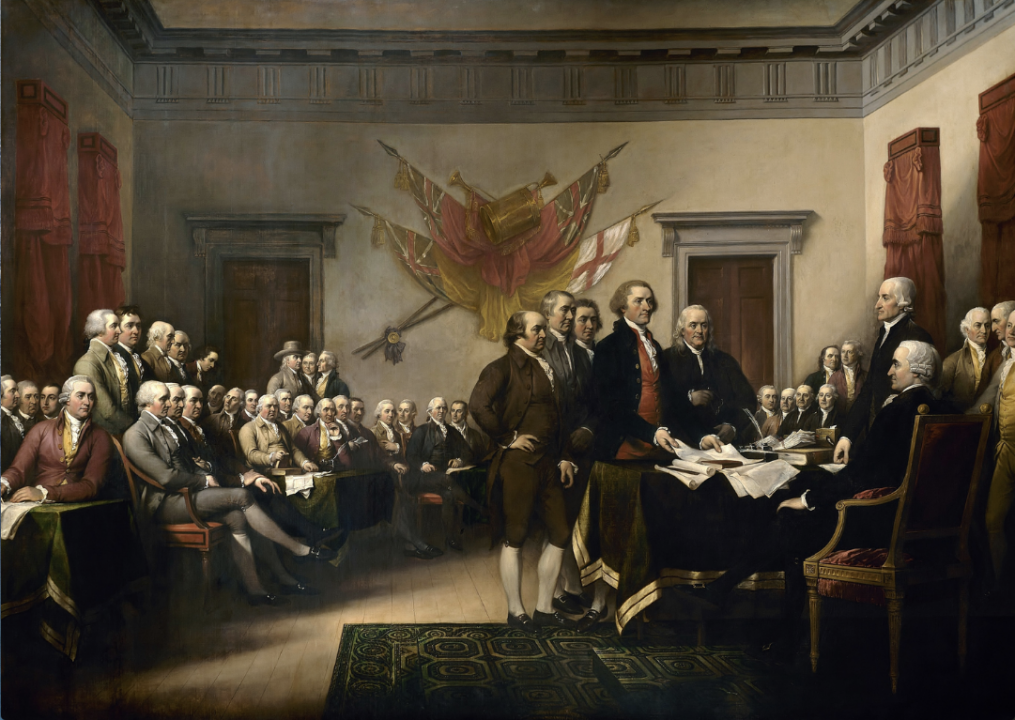
Public Domain // goodfreephotos
Question #7: How many amendments does the Constitution have?
Answer #7: 27
The 27 amendments to the U.S. Constitution, including the first 10 in the Bill of Rights, vary widely. The changes made to the original 1787 draft include the direct election of U.S. senators; limiting a president to two terms; the establishment of the federal income tax; allowing women and African Americans to vote; and the abolition of slavery. The only amendment to be repealed was the Eighteenth, which barred the sale and consumption of alcohol in 1919. Alcohol was made legal in 1933 with the creation of the Twenty-First Amendment.
Question #8: What did the Declaration of Independence do?
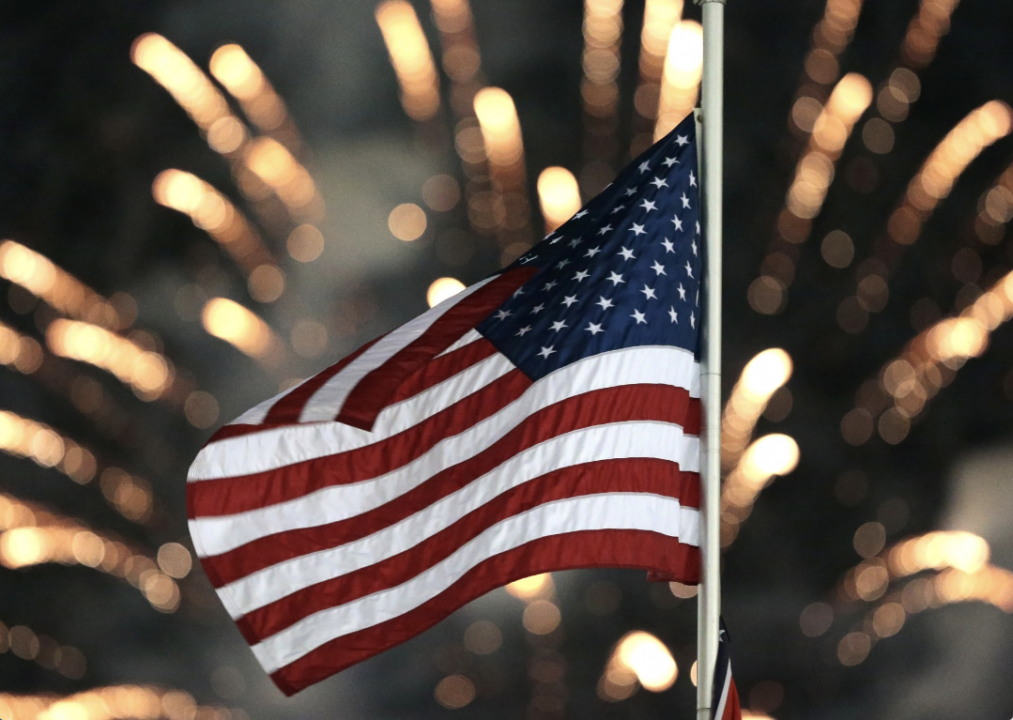
Action Sports Photography // Shutterstock
Question #8: What did the Declaration of Independence do?
Answer #8: Announced independence (from Great Britain); declared independence (from Great Britain); said that the United States is free (from Great Britain).
The Declaration of Independence, written on July 4, 1776, was the first document that declared 13 colonies in America would become sovereign and separate from the Kingdom of Great Britain. Members of the Continental Congress, including Thomas Jefferson, Benjamin Franklin, John Adams, Roger Livingston, and Roger Sherman, created the document together. The Declaration of Independence is the first of three founding documents of the United States government, including the U.S. Constitution and the Bill of Rights.
Question #9: What are two rights in the Declaration of Independence?
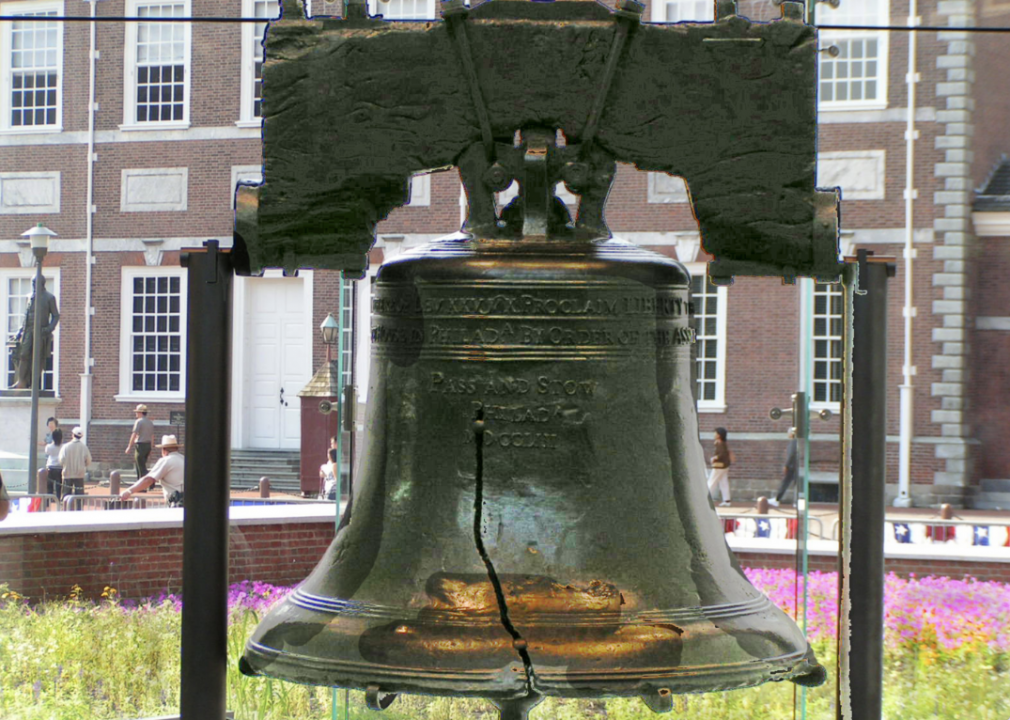
Bev Sykes // Wikimedia Commons
Question #9: What are two rights in the Declaration of Independence?
Answer #9: Life; liberty; pursuit of happiness.
The first two rights of the Declaration of Independence guarantee the rights of citizens to exist frequently. The third right, the pursuit of happiness, is commonly understood to refer to the right to one’s own wealth and property.
Question #10: What is freedom of religion?
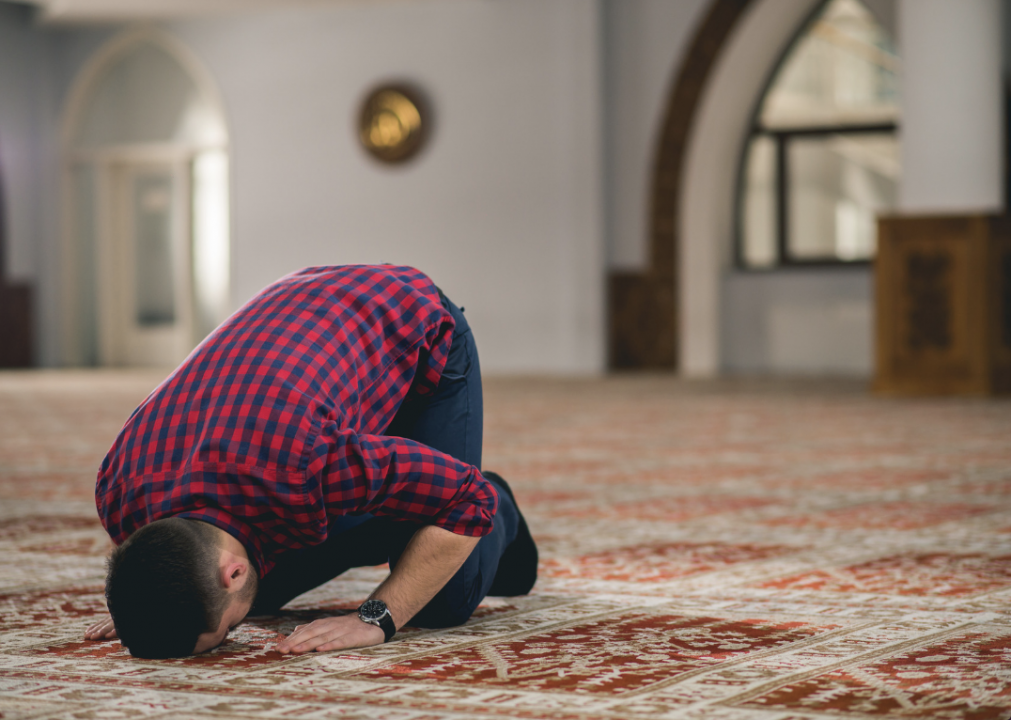
ildintorlak // Shutterstock
Question #10: What is freedom of religion?
Answer #10: You can practice any religion, or not practice a religion.
The freedom of religion is also known as the separation of church and state. This amendment prohibits the government from making citizens practice a particular set of moral beliefs. There are two accurately named sections in the First Amendment that concern religion. The Establishment Clause forbids the government from setting up a system of faith or favoring one religion, and the Free Exercise Clause prohibits the government from barring the exercise of faith or lack thereof.
Question #11: What is the economic system in the United States?
You may also like: Defining historical moments from the year you were born
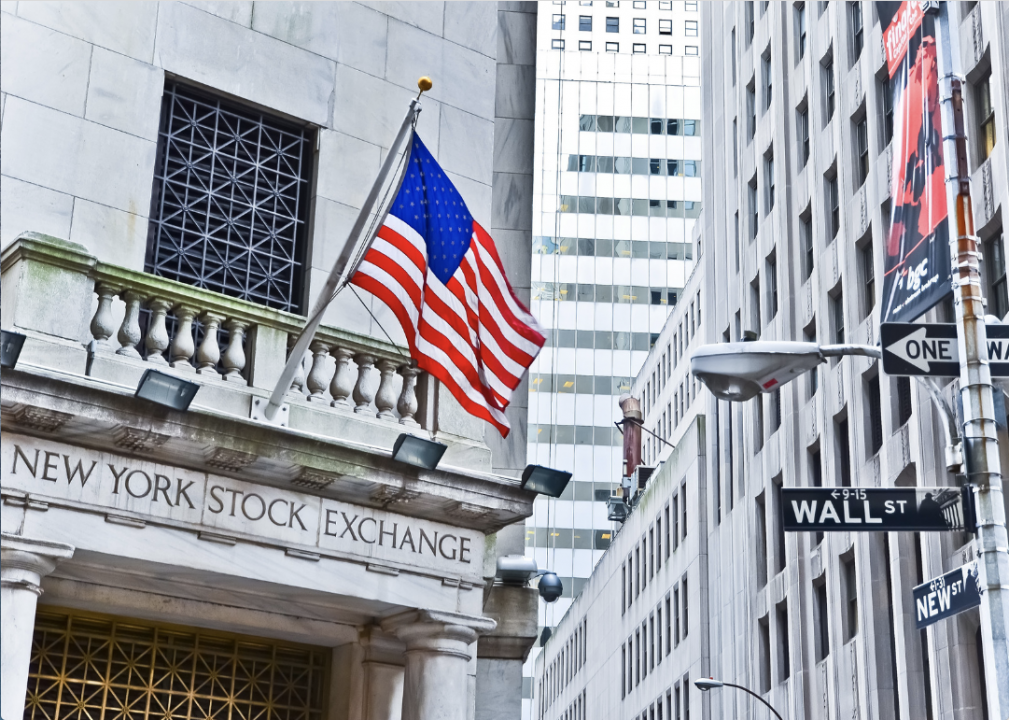
javen // Shutterstock
Question #11: What is the economic system in the United States?
Answer #11: Capitalist economy; market economy.
Capitalist and market economies make up the U.S. financial system. A capitalist economy consists of private owners and corporations manufacturing goods with minimal government involvement. A market economy is the supply and demand system operated by individual owners and corporations, who produce and price products, and compete to be leaders in their respective industries.
Question #12: What is the “rule of law”?
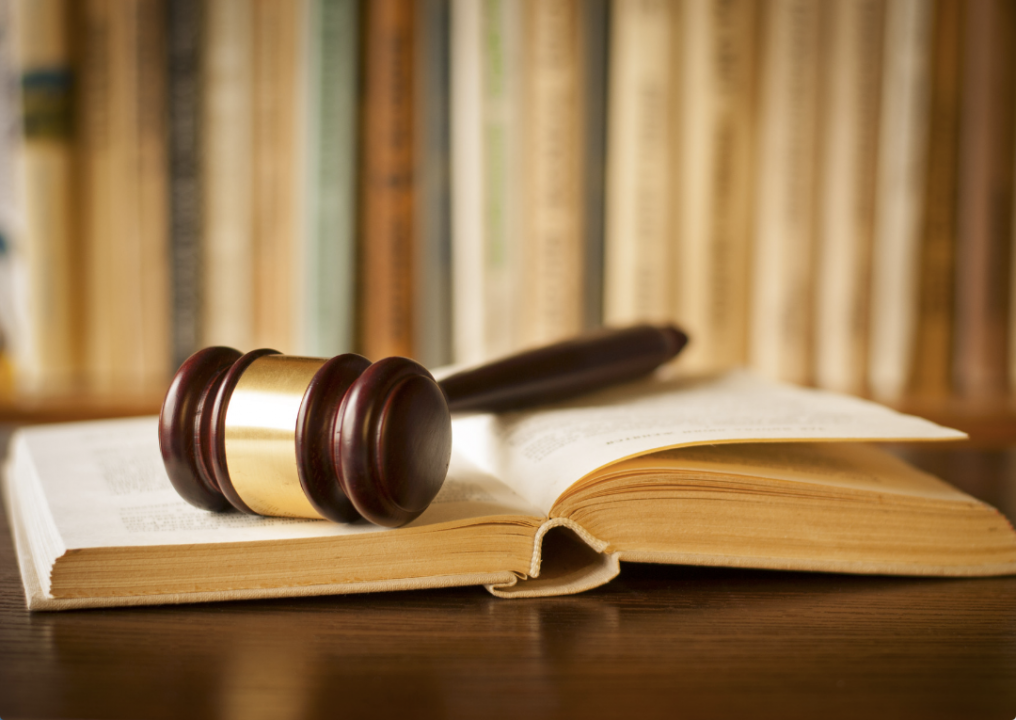
sergign // Shutterstock
Question #12: What is the “rule of law”?
Answer #12: Everyone must follow the law; Leaders must obey the law; Government must obey the law; No one is above the law.
No man, woman, or child, regardless of his or her economic, education, or societal status, is removed from the regulations set forth by the three branches of government. Even the president, who is commander-in-chief of the U.S. Armed Forces, must follow specific laws to remain the leader of the country.
Question #13: Name one branch or part of the government.
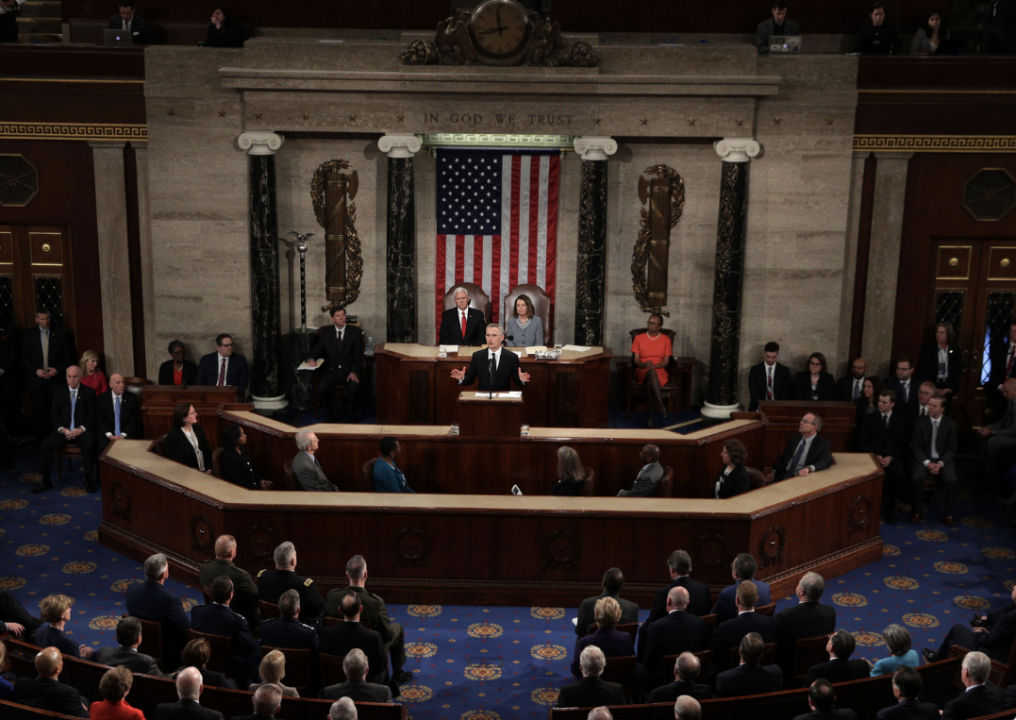
Alex Wong // Getty Images
Question #13: Name one branch or part of the government.
Answer #13: Congress; legislative; president; executive; the courts; judicial.
One branch of the government is the U.S. Congress, which is made up of two chambers including the Senate and the House of Representatives. The Senate is considered the more powerful committee, which is made up of fewer members who collectively hold different rights from those of the House, including the sole authority to conduct an impeachment trial or to reject a presidential appointee to either the executive or judicial branch.
Question #14: What stops one branch of government from becoming too powerful?
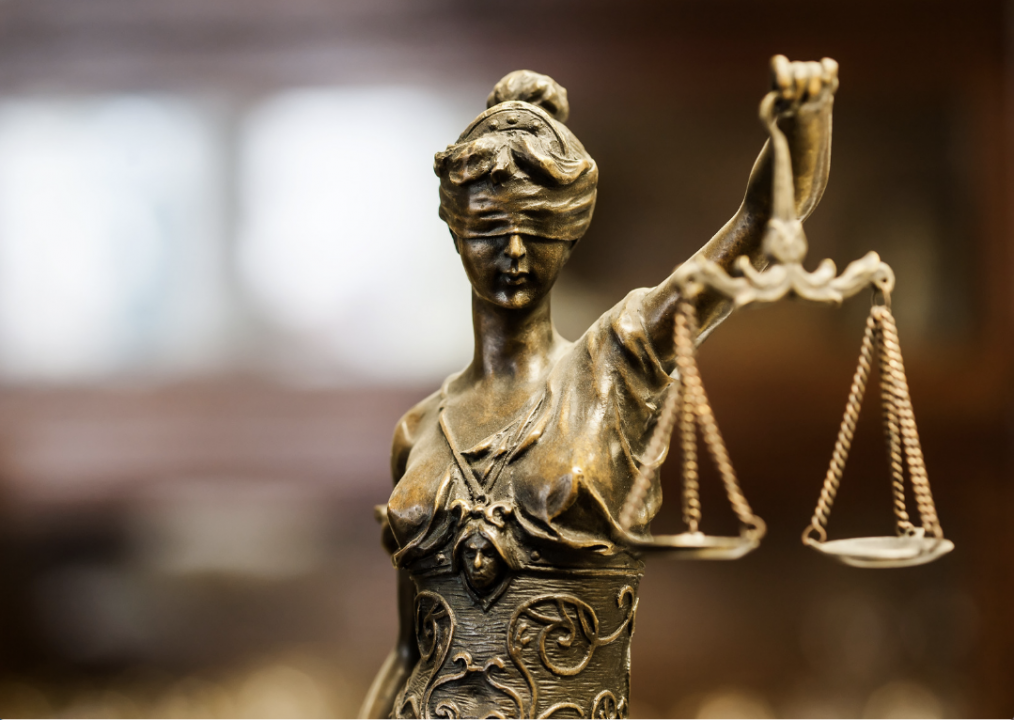
Michal Kalasek // SHutterstock
Question #14: What stops one branch of government from becoming too powerful?
Answer #14: Checks and balances; separation of powers.
There must be a check and balance system between the three branches—legislative, executive, and judicial—of government to assure each entity only exercises its specific responsibilities. Each branch has the capacity to affect the decisions of other branches in specific ways. This separation of powers prevents any one branch of government from dominating its counterparts, keeping the federal system fair and equal.
Question #15: Who is in charge of the executive branch?
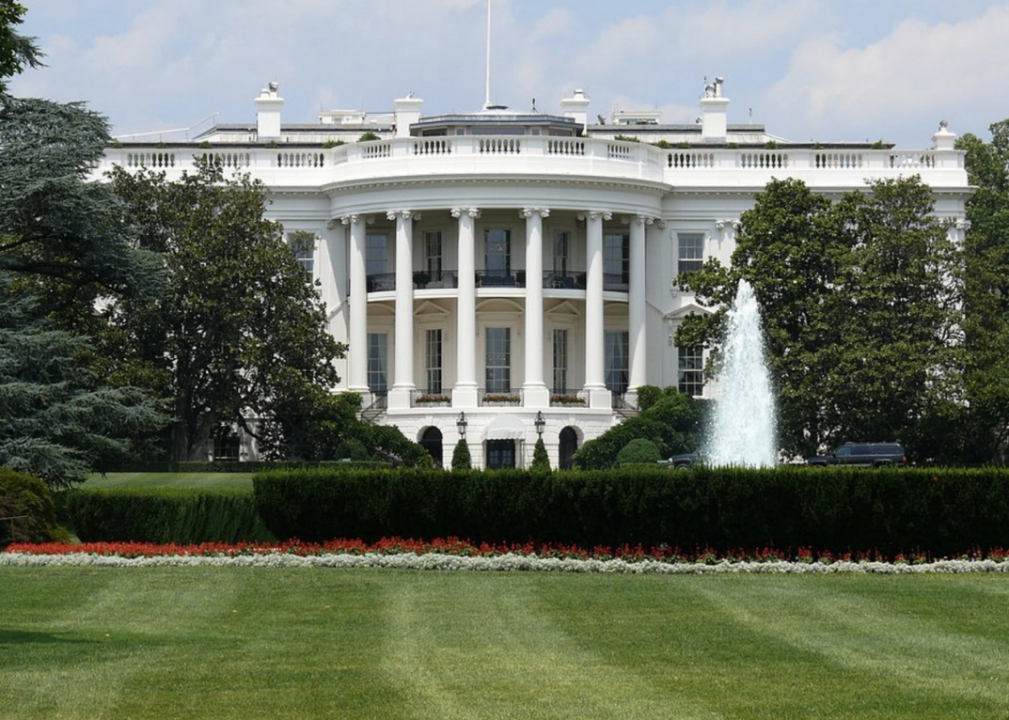
Ad Meskens // Wikimedia Commons
Question #15: Who is in charge of the executive branch?
Answer #15: The president.
The executive branch is made up of the president, vice president, and Cabinet, and the president is in charge as the head of government and the commander-in-chief of the armed forces. The Twenty-Second Amendment forbids any person elected to the office of the president from serving more than two consecutive four-year terms. There have been 13 presidents who have served two terms, including Grover Cleveland, who served in nonconsecutive periods.
Question #16: Who makes federal laws?
You may also like: Oldest national parks in America
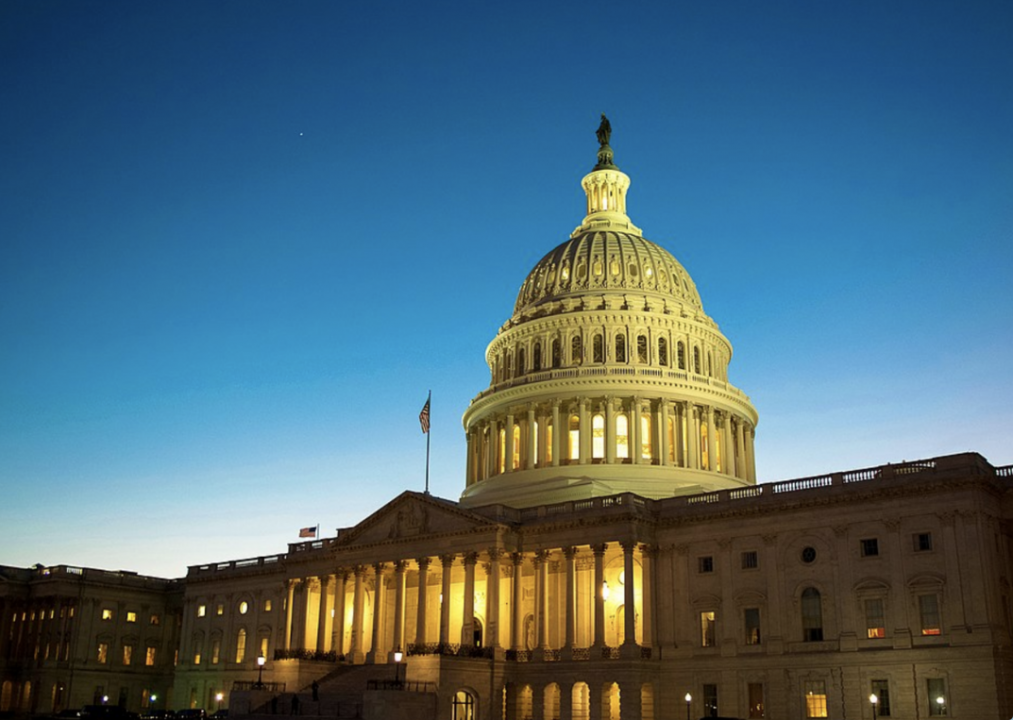
Jesse Collins // Wikimedia Commons
Question #16: Who makes federal laws?
Answer #16: Congress; Senate and House (of Representatives); (U.S. or national) legislature.
Federal laws are created when the U.S. Congress passes legislation, the president signs an executive order, and/or a federal court decision is reached based on the U.S. Constitution. When the U.S. Congress creates and passes bills, the proposed legislation must be approved and signed by the president to become federal law.
Question #17: What are the two parts of the U.S. Congress?
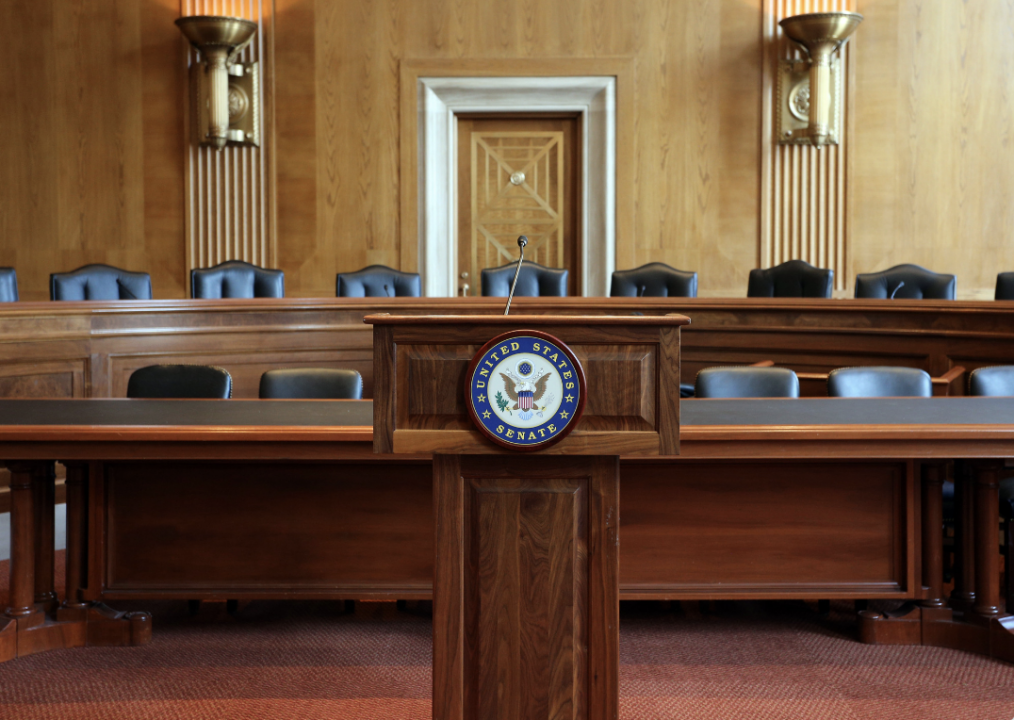
Katherine Welles // Shutterstock
Question #17: What are the two parts of the US Congress?
Answer #17: Senate and House (of Representatives).
The two chambers of the U.S. Congress include the Senate and the House of Representatives. The upper chamber is the Senate, which is made up of two senators from each of the 50 states. The lower chamber is the House of Representatives, which is made up of a variable number of representatives from each state and the District of Columbia based on that state’s population. Since 1911, there have been 435 representatives in the House at any given time.
Question #18: How many U.S. Senators are there?
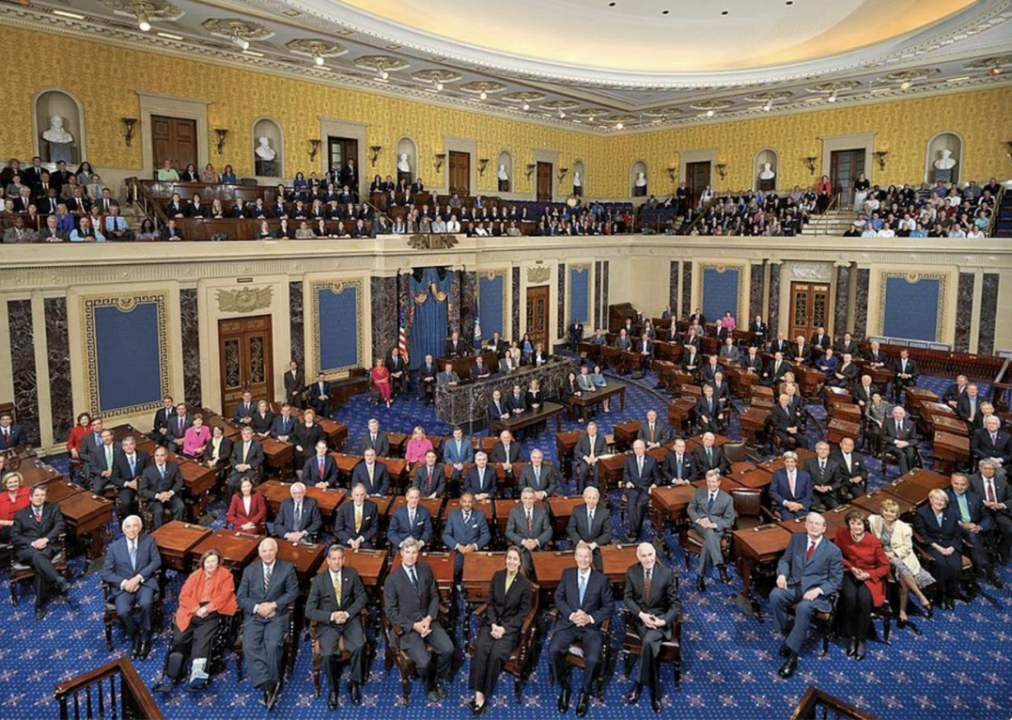
Public Domain // Wikimedia Commons
Question #18: How many US Senators are there?
Answer #18: 100
There are always 100 U.S. Senators serving in Congress, two for each of the 50 states. The specific qualifications and terms of service for a U.S. senator include being at least 30 years old, a citizen for at least nine years, and a resident of the state they want to represent. In January of every odd-numbered year, one-third of the Senate takes the Oath of Office, a procedure that dates back to 1789.
Question #19: We elect a U.S. Senator for how many years?
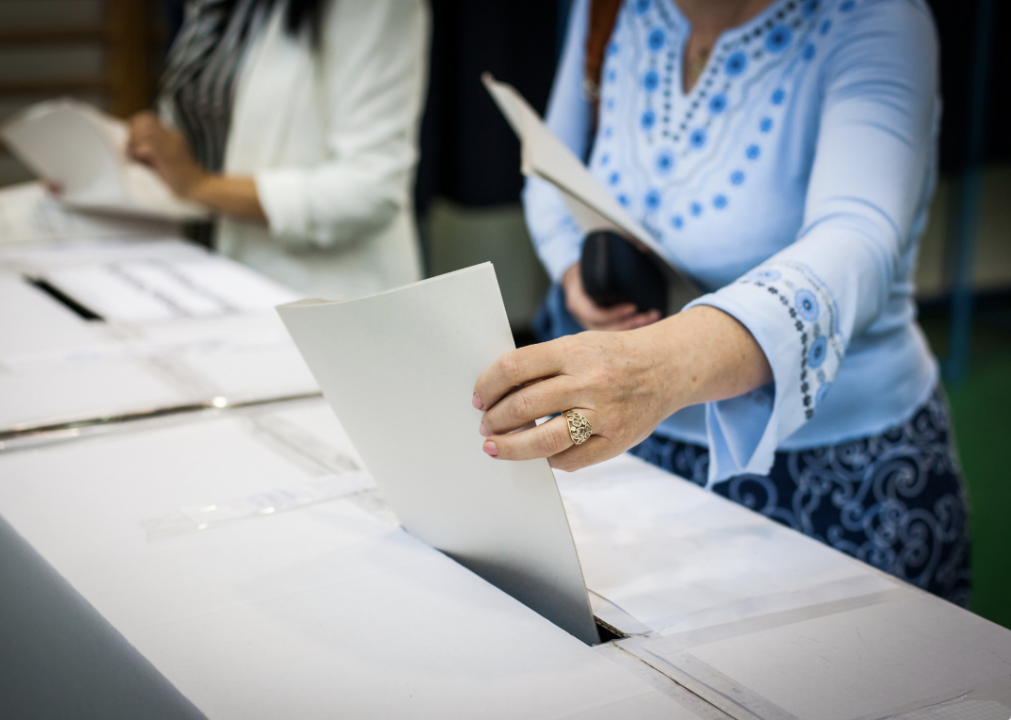
Alexandru Nika // Shutterstock
Question #19: We elect a US Senator for how many years?
Answer #19: six
A U.S. Senator is elected every six years, but it was not always this way. It took the 1913 ratification of the Seventeenth Amendment to elect two senators from every state to U.S. Congress. From 1789, senators were appointed by the state legislatures.
Question #20: Who is one of your state’s U.S. Senators now?
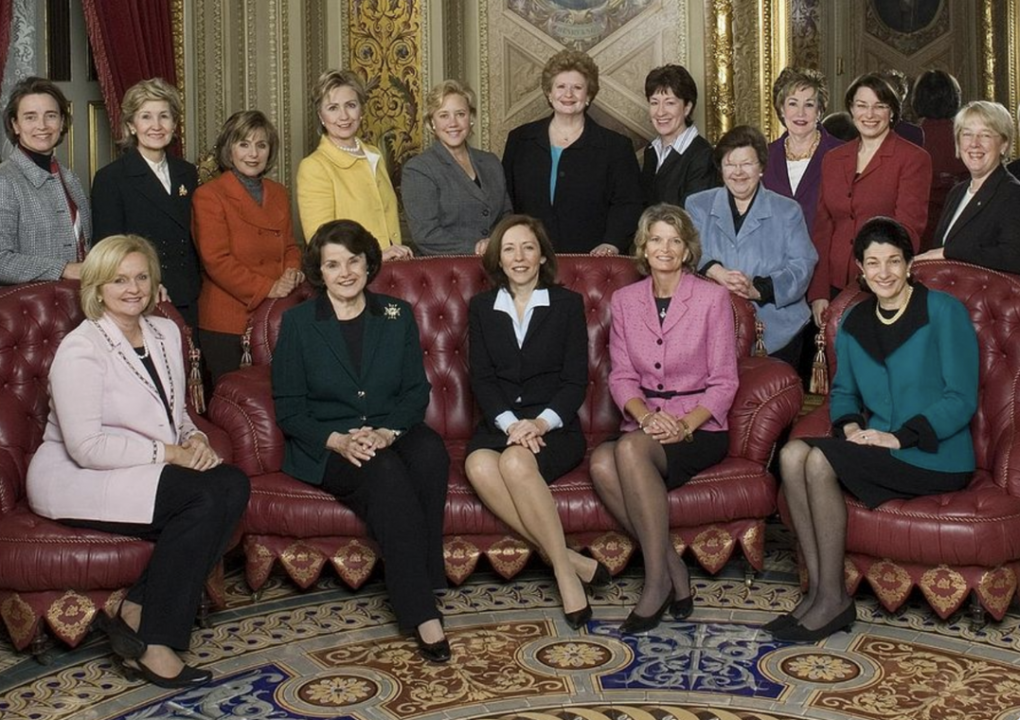
U.S. Senate // Wikimedia Commons
Question #20: Who is one of your state’s US Senators now?
Answer #20: Answers will vary. District of Columbia residents and residents of U.S. territories should answer that D.C. (or the territory where the applicant lives) has no U.S. Senators.
A U.S. Senator has both enumerated and implied powers to perform various tasks on behalf of their constituents. Some powers include the ability to borrow and coin money, regulate interstate commerce, declare war, and create rules for the naturalization of immigrants. The U.S. Constitution creates a system of checks and balances between the U.S. Senate and the other branches of government.
Question #21: The House of Representatives has how many voting members?
You may also like: Former jobs of the governor of every state
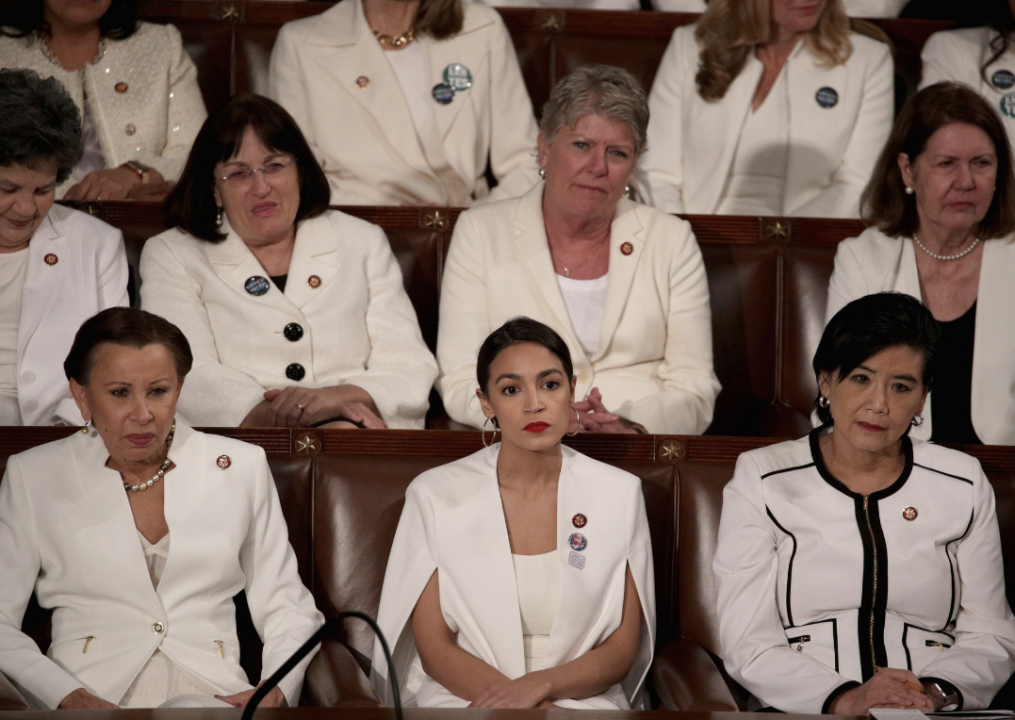
Alex Wong // Getty Images
Question #21: The House of Representatives has how many voting members?
Answer #21: 435
There are 435 voting members in the lower chamber of the House of Representatives, who are all directly elected in their respective congressional districts. With the approval of the U.S. Senate, representatives of the House can pass bills directly related to constituent concerns. Together, the Senate and the House have the power to veto a governor’s budget if they deem it fiscally irresponsible.
Question #22: We elect a U.S. representative for how many years?
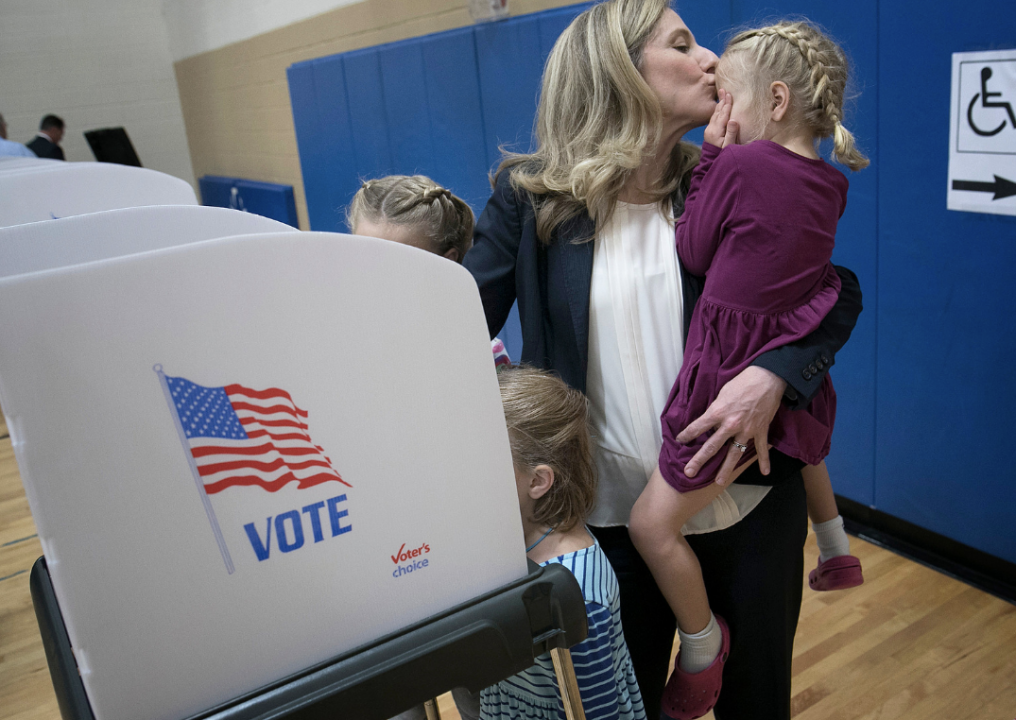
Win McNamee // Getty Images
Question #22: We elect a US representative for how many years?
Answer #22: two
Unlike a Senate member, who serves six-year terms, a House member, also directly elected, serves for only two years. The Apportionment Act of 1911 set the number of House members to 433, but allowed for future states Arizona and New Mexico to be added, placing the total at 435. California has the largest delegation of House representatives with 53 members.
Question #23: Name your U.S. representative.
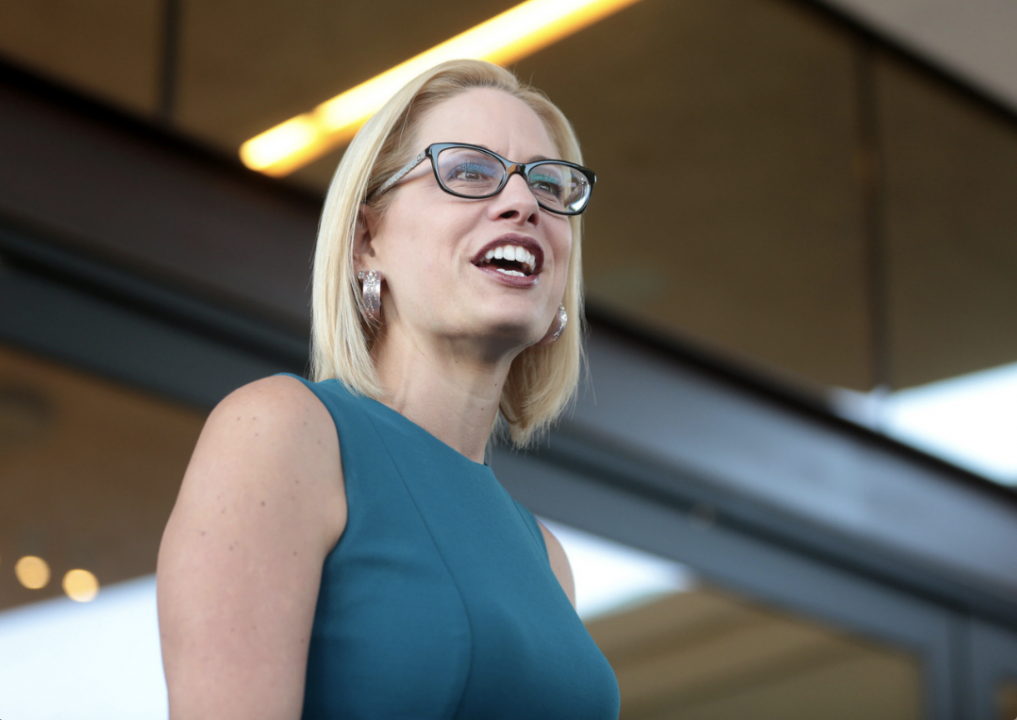
Gage Skidmore // Flickr
Question #23: Name your US representative.
Answer #23: Answers will vary. Residents of territories with nonvoting delegates or resident commissioners may provide the name of that delegate or commissioner. Also acceptable is any statement that the territory has no (voting) representatives in Congress.
House members in the lower chamber spend much of their time on their statehouse floor debating bills and trying to pass proposed legislation. For representing their constituents during each two-year term, House members get an annual salary, pension, health benefits, travel allowance, and a tax deduction. When a House seat becomes vacant, the U.S. Constitution mandates that a special election be held to fill the position.
Question #24: Who does a U.S. senator represent?
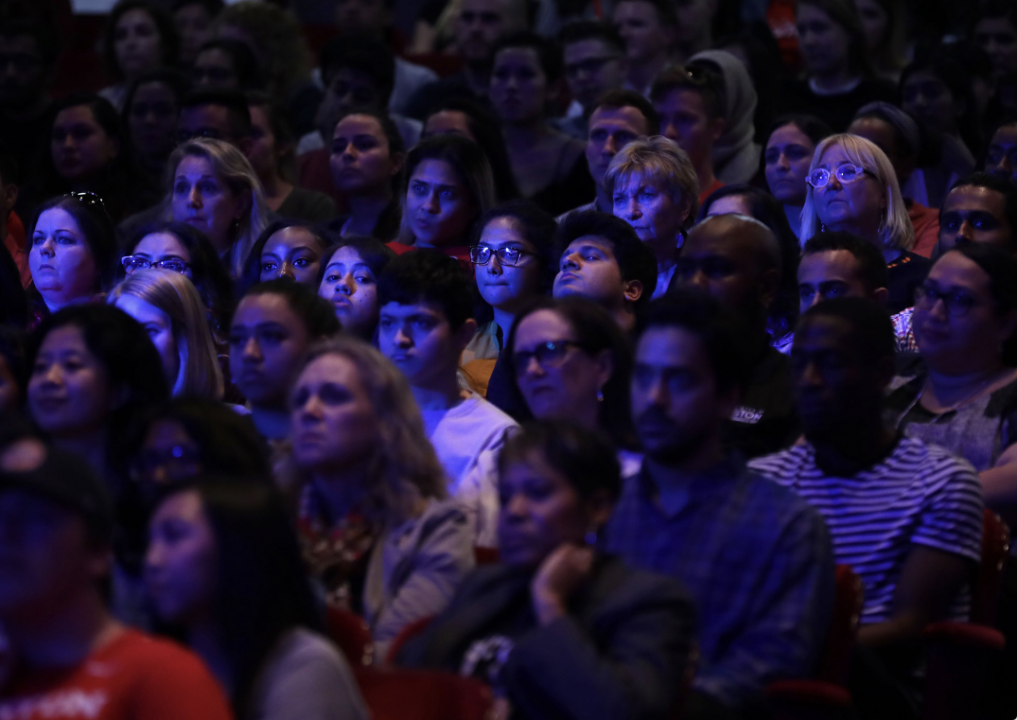
Chip Somodevilla // Getty Images
Question #24: Who does a US senator represent?
Answer #24: All people of the state.
A U.S. senator protects every man, woman, and child in the state they represent. Two U.S. senators, who serve six-year terms, represent each state regardless of the population. The structure that allows for only two U.S. senators per state was created at the Constitutional Convention and was initially called the Connecticut Compromise, also known as the Great Compromise of 1787.
Question #25: Why do some states have more representatives than other states?
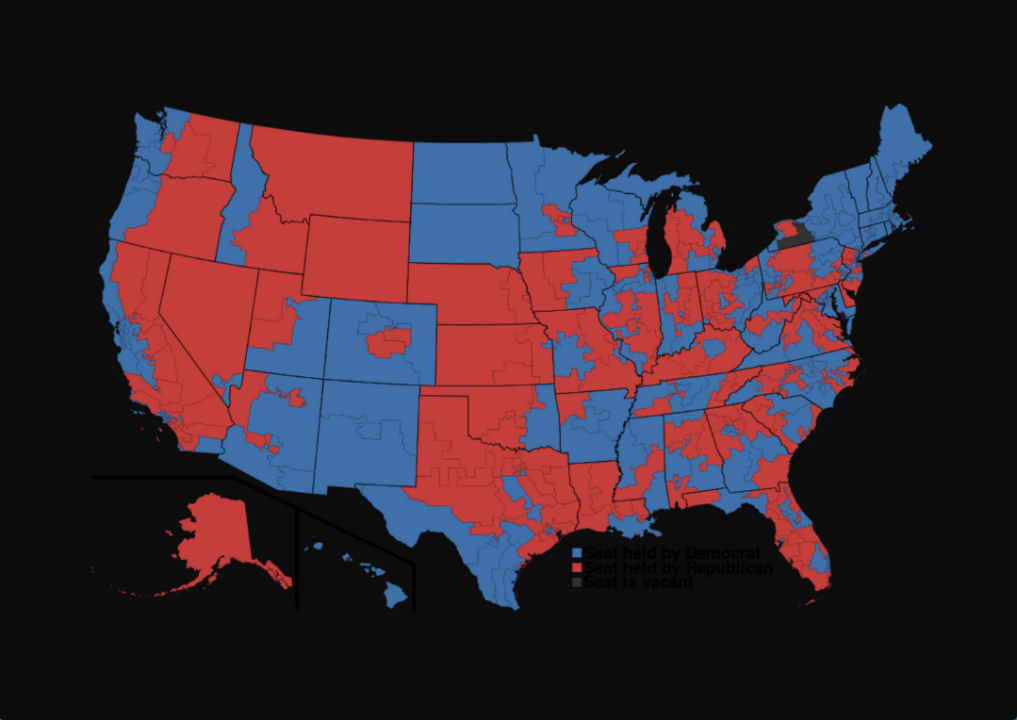
Mr. Matté // Wikimedia Commons
Question #25: Why do some states have more representatives than other states?
Answer #25: (Because of) the state’s population; (because) they have more people; (because) some states have more people.
The number of House members for each congressional district directly depends on how many citizens live in the state. The decision to establish directly elected House members based on population was settled at the 1787 Constitutional Convention after much debate due to population disparity among large and small states. James Madison of Virginia, William Paterson of New Jersey, Charles Pinckney of South Carolina, and Robert Sherman of Connecticut receive credit for the compromise.
Question #26: We elect a president for how many years?
You may also like: Youngest and oldest presidents in U.S. history
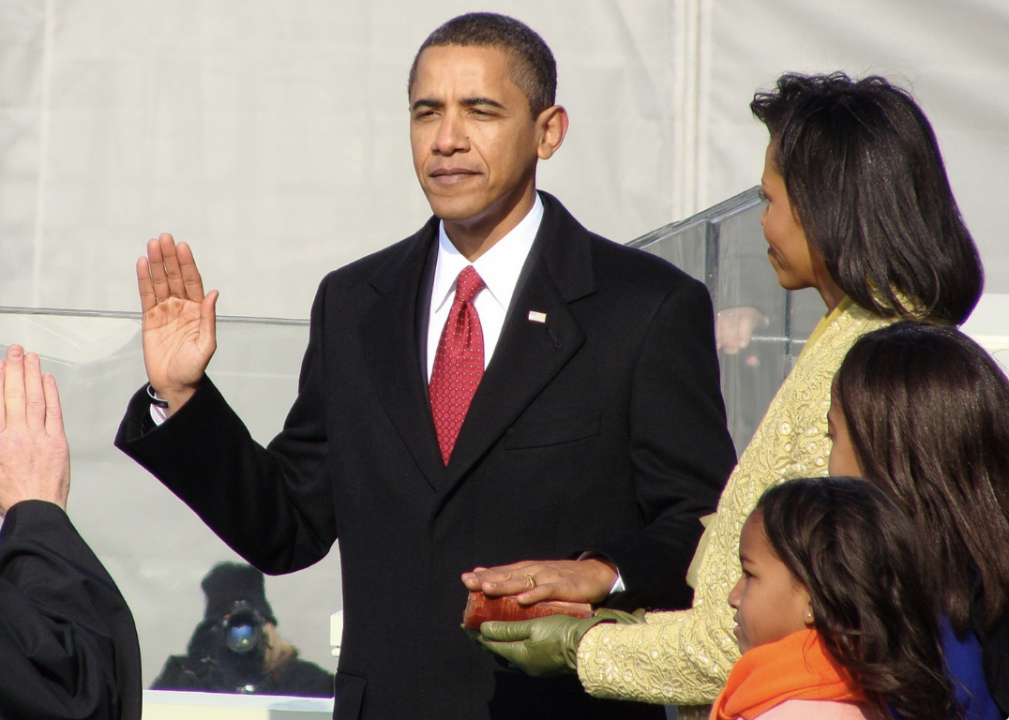
Bart Stupak // Wikimedia Commons
Question #26: We elect a president for how many years?
Answer #26: four
The president of the United States (POTUS) is directly elected every four years based on the number of electoral votes in that given year. The election of the president is the only one in the federal government not based on popular vote. All U.S. registered voters indirectly elect the president through the Electoral College, a body of enfranchised people. The U.S. Constitution established the Electoral College.
Question #27: In what month do we vote for president?
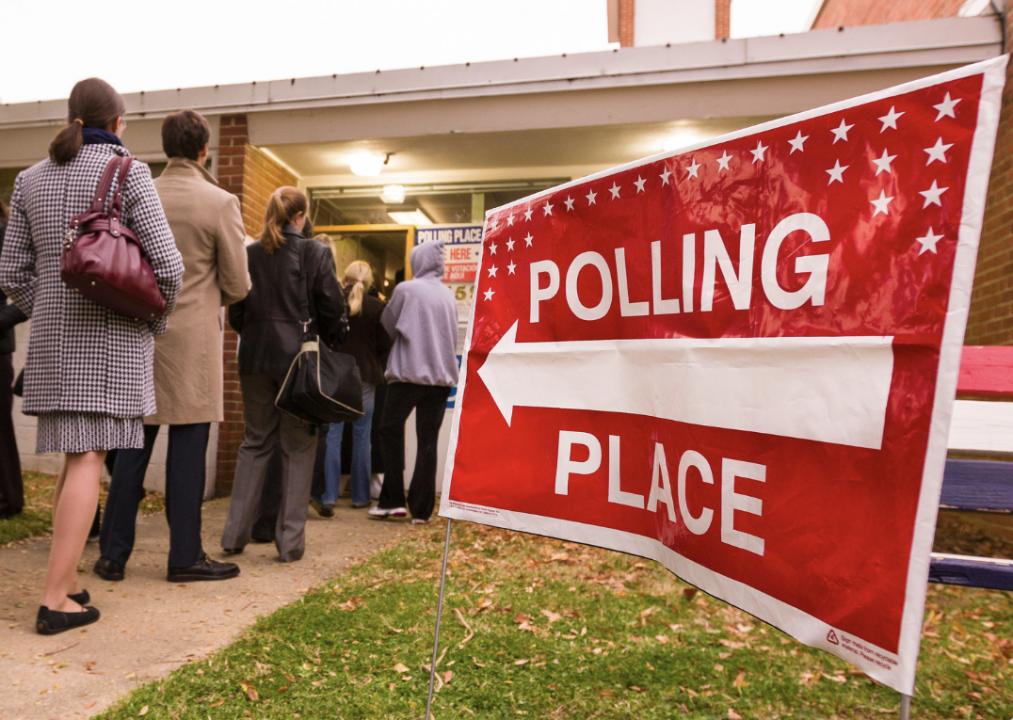
Rob Crandall // Shutterstock
Question #27: In what month do we vote for president?
Answer #27: November
The U.S. presidential election takes place every four years in November. At the beginning of U.S. history, a national leader was elected by a member of the Electoral College, who cast a vote for the president and vice president. The candidate with the majority of votes won the race, and the runner up became vice president. However, the system for electing a president changed in 1804 with the Twelfth Amendment, which gave electors only one vote for president and one vote for vice president.
Question #28: What is the name of the president of the United States now?
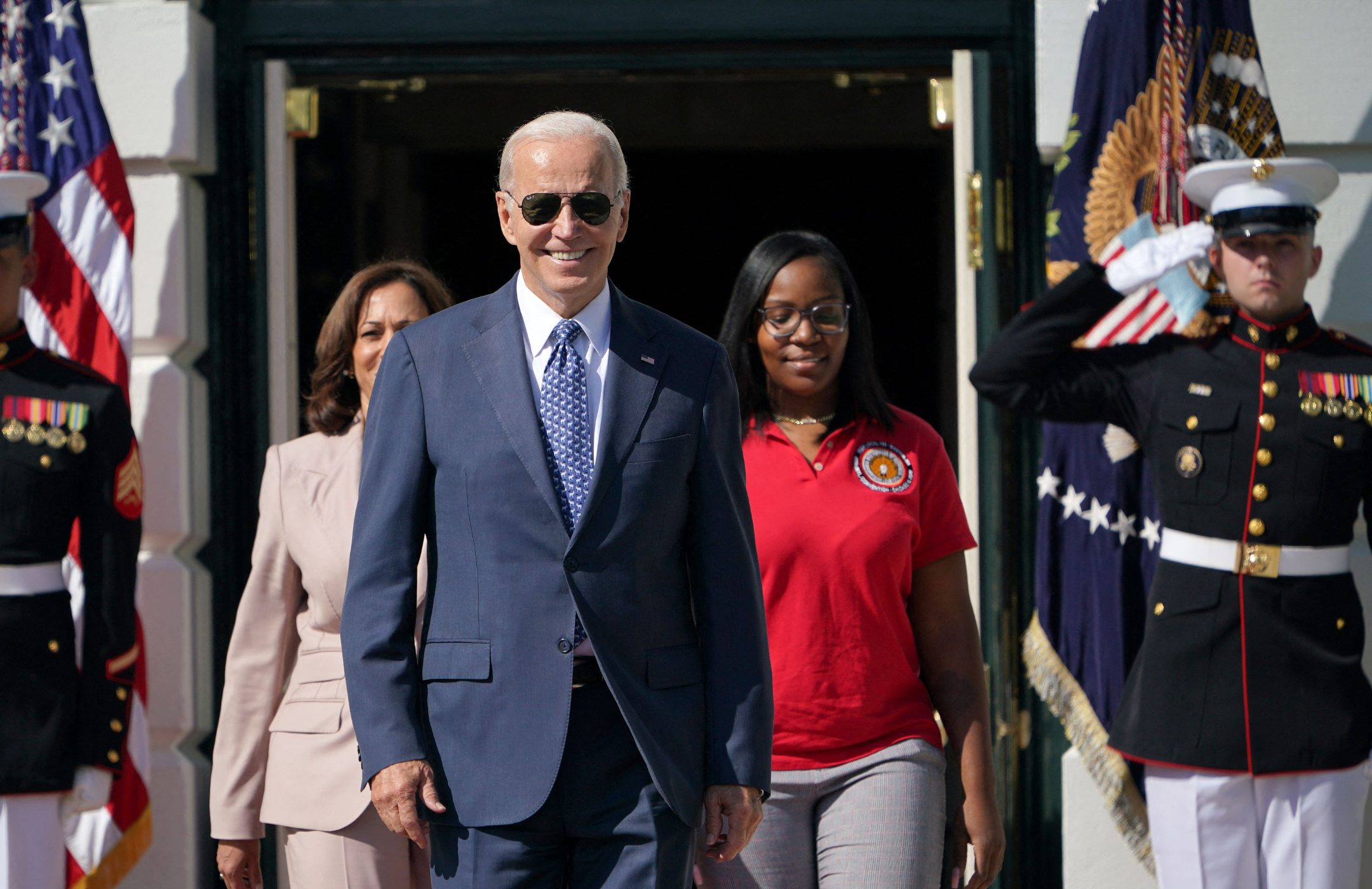
Getty
Question #28: What is the name of the president of the United States now?
Answer #28: Joe Biden
The 46th and current president is Joe Biden, a Democrat. He succeeded Republican President Donald Trump after winning the 2020 presidential election. President Biden will serve a four-year term, after which he can run for a second four-year term if he chooses.
Question #29: What is the name of the vice president of the United States now?
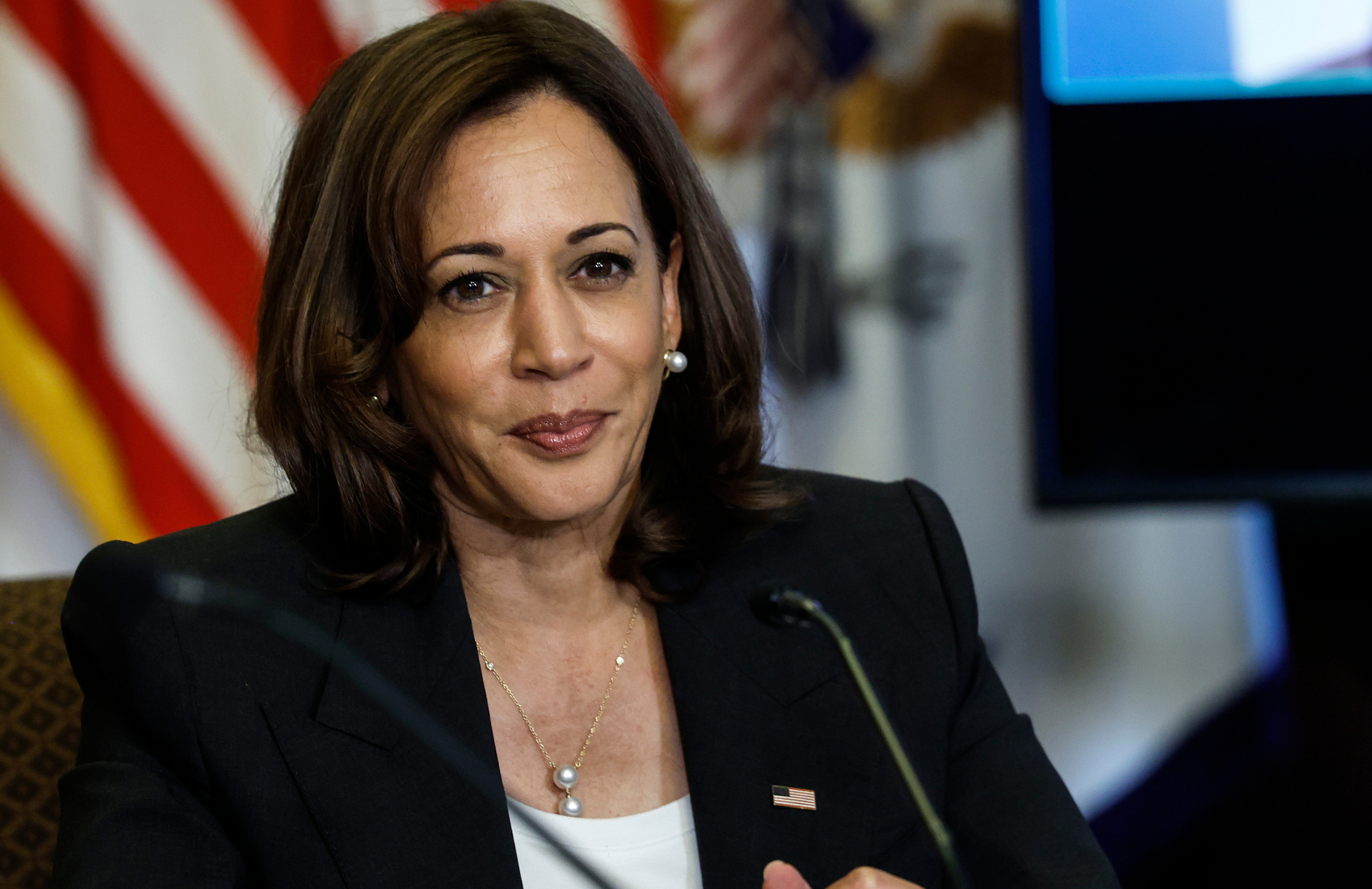
Getty
Question #29: What is the name of the vice president of the United States now?
Answer #29: Kamala Harris
Kamala Harris, a former U.S. senator and California attorney general, is the first woman to hold the role of Vice President; Harris is also the first Black American and the first South Asian American to hold the office.
Question #30: If the president can no longer serve, who becomes president?
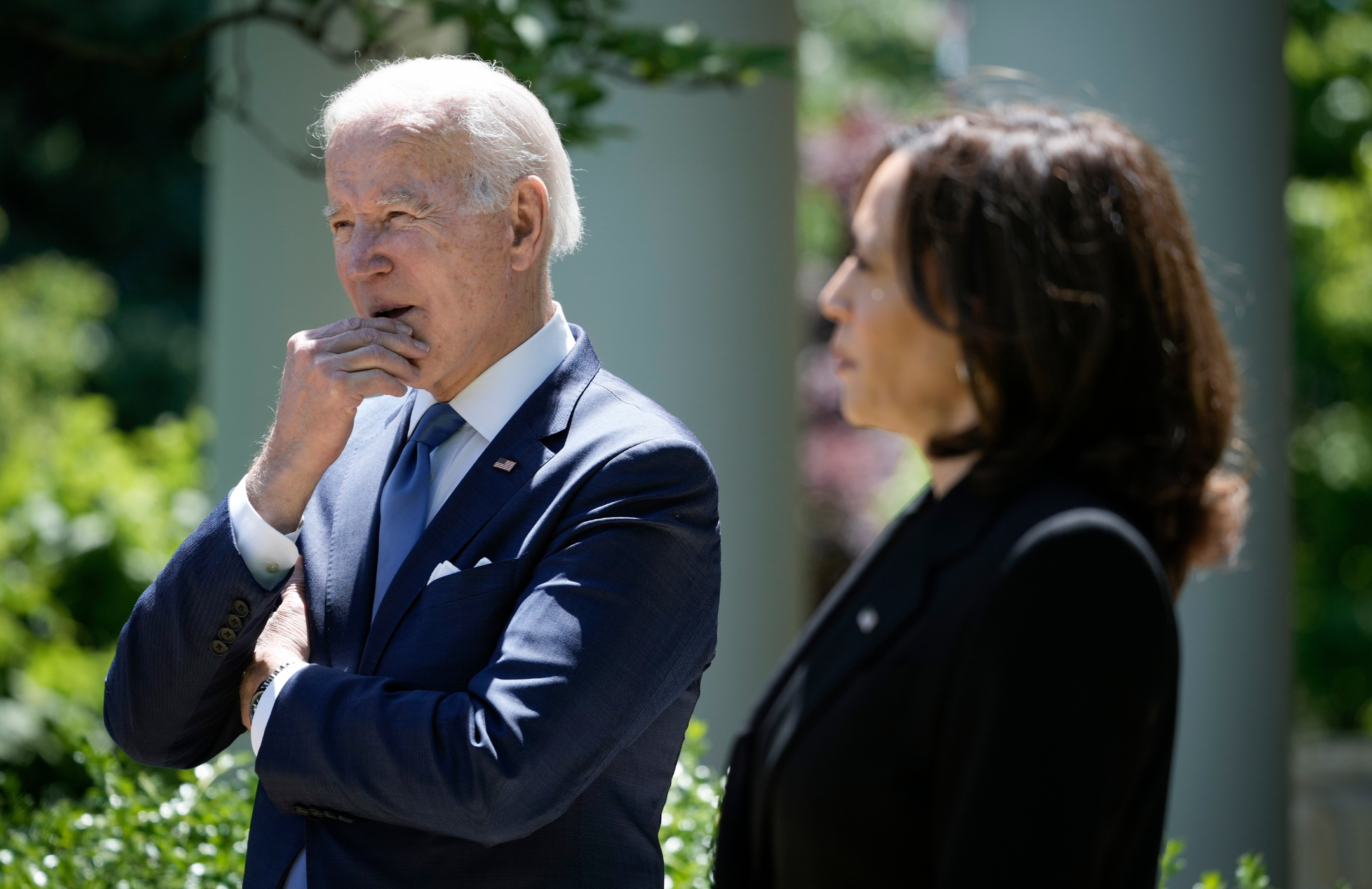
Getty
Question #30: If the president can no longer serve, who becomes president?
Answer #30: The vice president.
The Twentieth Amendment assures that the vice president, who is elected along with the president, immediately takes over the presidency if the elected president can no longer serve, whether due to removal, death, resignation, or inability. Only four vice presidents, including John Adams, Thomas Jefferson, Martin Van Buren, and George H.W. Bush, ever became the president after serving as the vice president.
Question #31: If both the president and the vice president can no longer serve, who becomes president?
You may also like: 25 terms you should know to understand the gun control debate
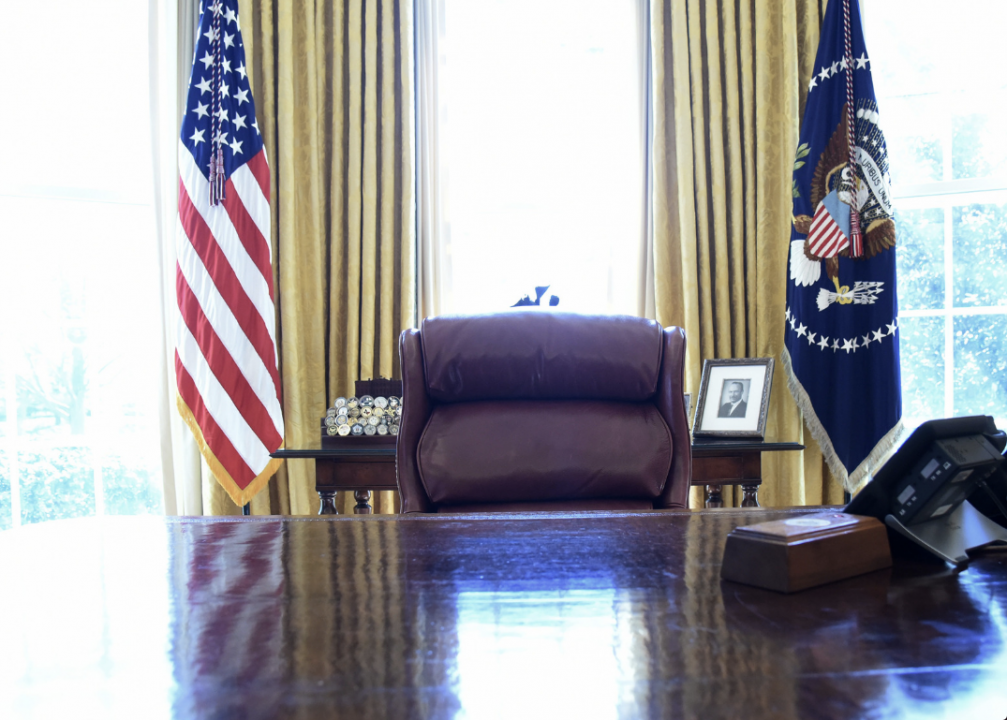
Pool // Getty Images
Question #31: If both the president and the vice president can no longer serve, who becomes president?
Answer #31: The speaker of the House.
In the rare case that both the president and vice president cannot serve, the speaker of the House, the political and legislative leader of the House of Representatives,
becomes the U.S. leader. To date, no speaker of the House has ever had to become the nation’s leader due to the simultaneous loss of both the president and vice president.
Question #32: Who is the commander-in-chief of the military?
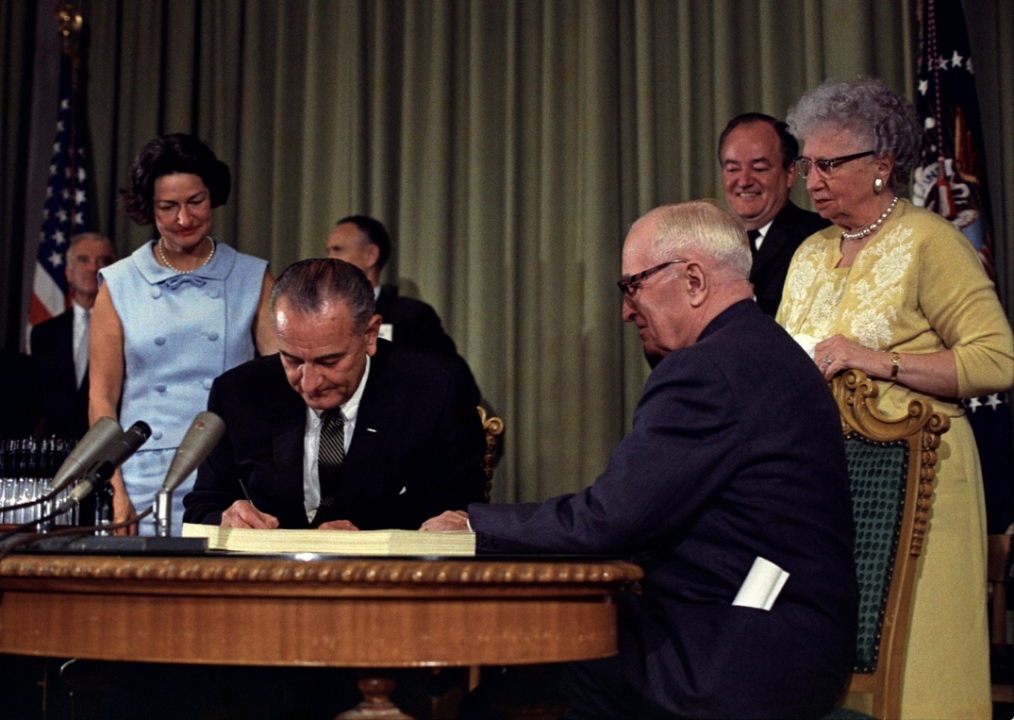
White House Press Office // Wikimedia Commons
Question #32: Who is the commander-in-chief of the military?
Answer #32: The president.
The president is also the commander-in-chief of all military forces including the Army, Navy, Air Force, Marines, and Coast Guard. The president works alongside the Department of Defense and Department of Homeland Security to assure national safety. Though the president is the head of the military, the U.S. Congress is the only entity that can declare war, based on Article One, Section Eight of the U.S. Constitution.
Question #33: Who signs bills to become laws?
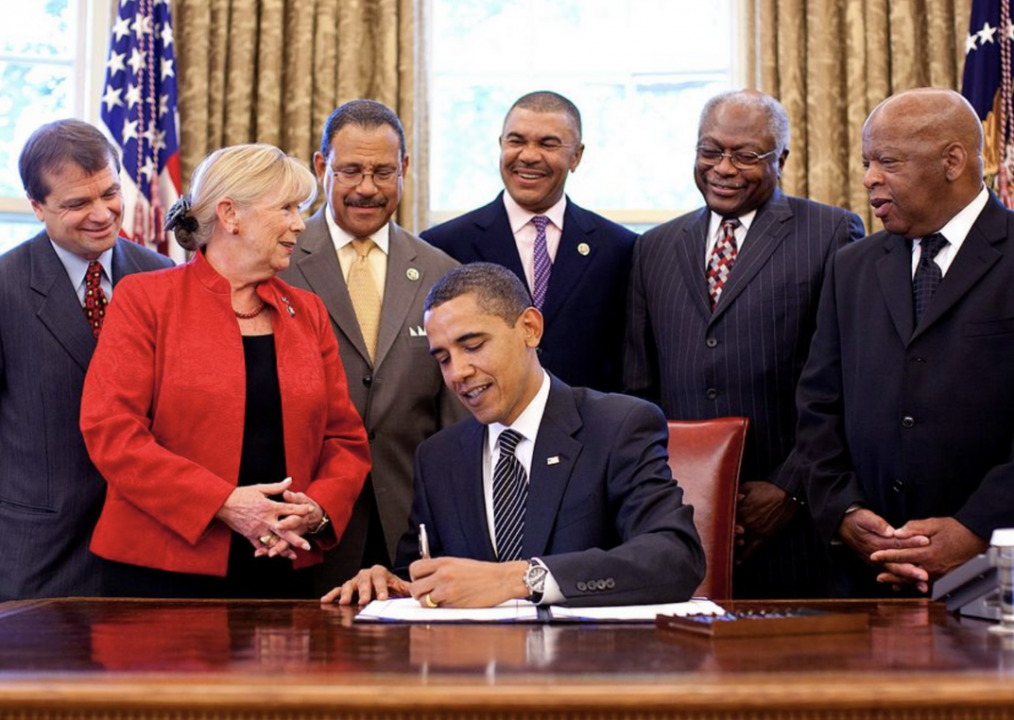
The White House // Wikimedia Commons
Question #33: Who signs bills to become laws?
Answer #33: The president.
The president signs bills into law after a long process of approval. First, a bill must be introduced by a primary sponsor, a senator or representative. The bill goes to a committee, where changes to the proposed law can be discussed and made. Next, the bill goes before U.S. Congress for debate, when additional modifications to the original proposal take place. After both the upper and lower chamber agrees on all revisions, the bill is passed on to the president to either veto or sign into law.
Question #34: Who vetoes bills?
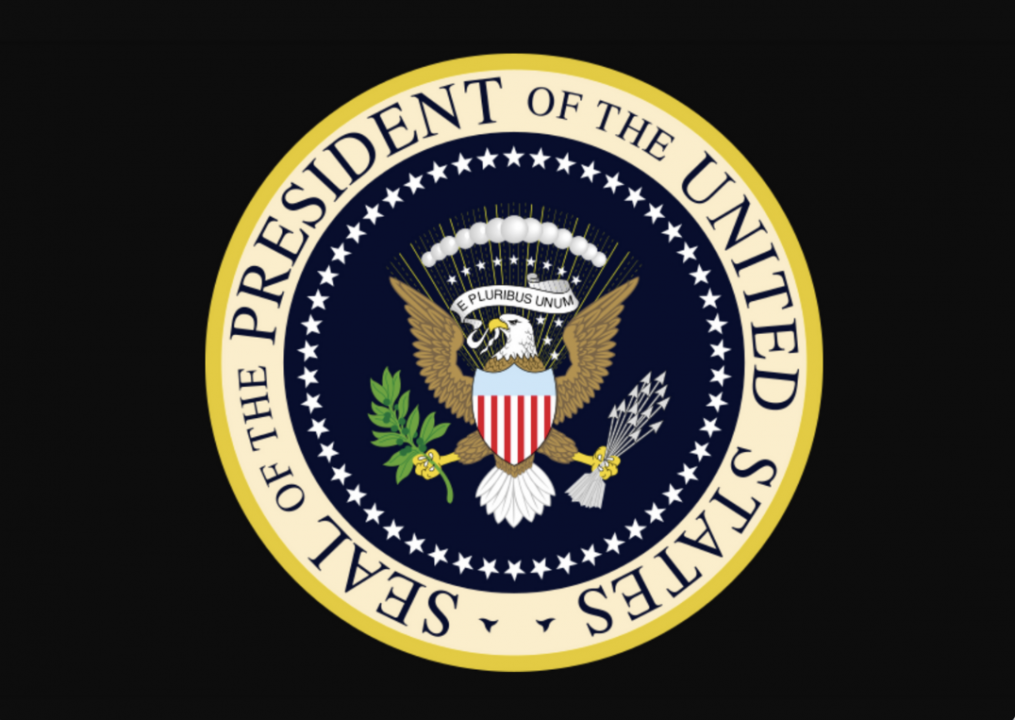
Public Domain // Wikimedia Commons
Question #34: Who vetoes bills?
Answer #34: The president.
Instead of signing a bill into law, the president can veto a bill. A veto bars any specific proposal from becoming law unless Congress overrides the veto by two-thirds of a majority. The president can also choose not to act at all, but after 10 days the bill becomes law. The bill will not become law if Congress adjourns during the 10 days the president does not sign the bill, which is called a pocket veto.
Question #35: What does the president’s Cabinet do?
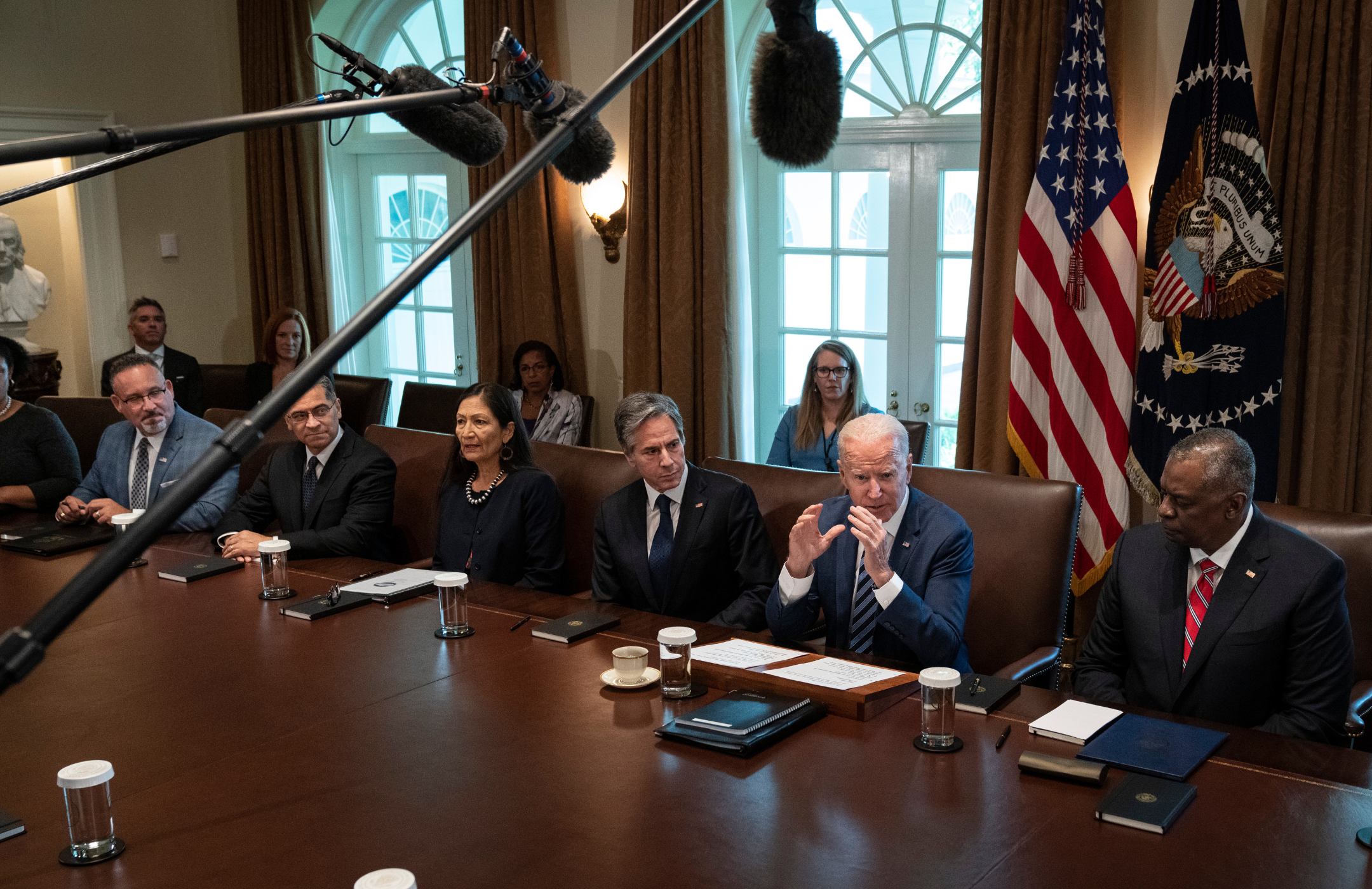
Getty
Question #35: What does the president’s Cabinet do?
Answer #35: Advises the president.
Established in Article Two, Section Two of the U.S. Constitution at the 1767 Constitutional Convention, the Cabinet, which includes 15 federal department heads and the vice president, advises the president on how to run each respective department. Considered part of the executive branch of the government, the Cabinet can also decide if a sitting president is unable to perform the duties of the office, according to the Twenty-Fifth Amendment.
Question #36: What are two Cabinet-level positions?
You may also like: The original Woodstock, by the numbers
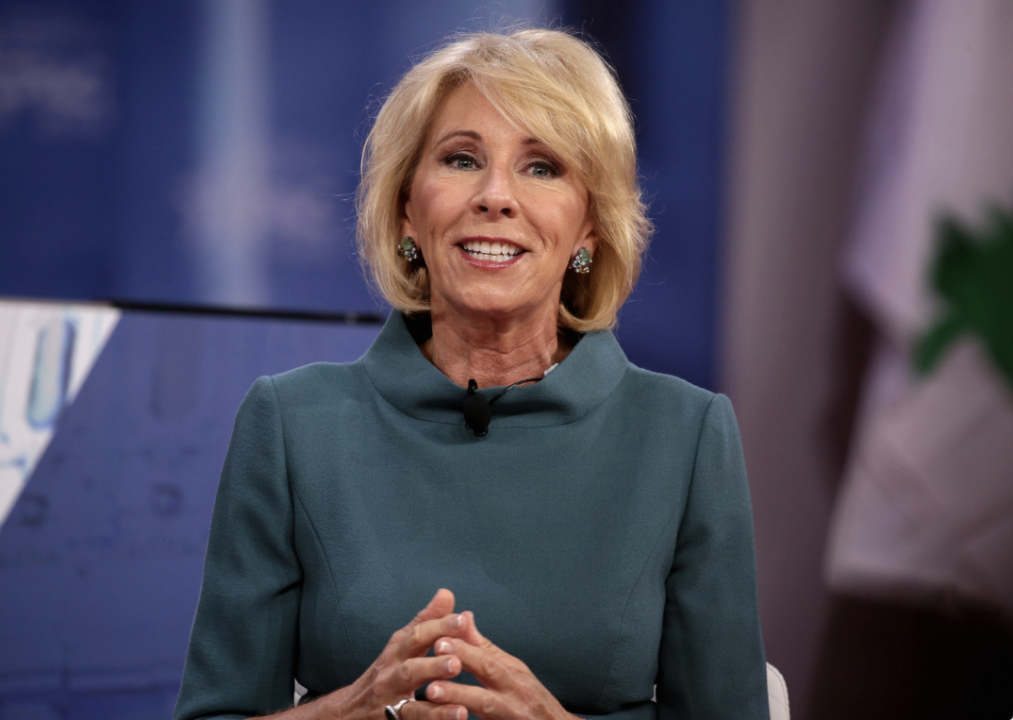
Gage Skimore // Flickr
Question #36: What are two Cabinet-level positions?
Answer #36: Secretary of agriculture; secretary of commerce; secretary of defense; secretary of education; secretary of energy; secretary of health and human services; secretary of homeland security; secretary of housing and urban development; secretary of the interior; secretary of labor; secretary of state; secretary of transportation; secretary of the treasury; secretary of veterans affairs; attorney general; vice president.
Two powerful Cabinet-level positions are the secretary of defense and the secretary of state. As the lead advisor for all military issues, the secretary of defense, who is also a statutory member of the National Security Council, is vital to national security. As the leading adviser of foreign policy and affairs, the secretary of state role is critical to global peace through the interpretation and negotiation of international treaties.
Question #37: What does the judicial branch do?
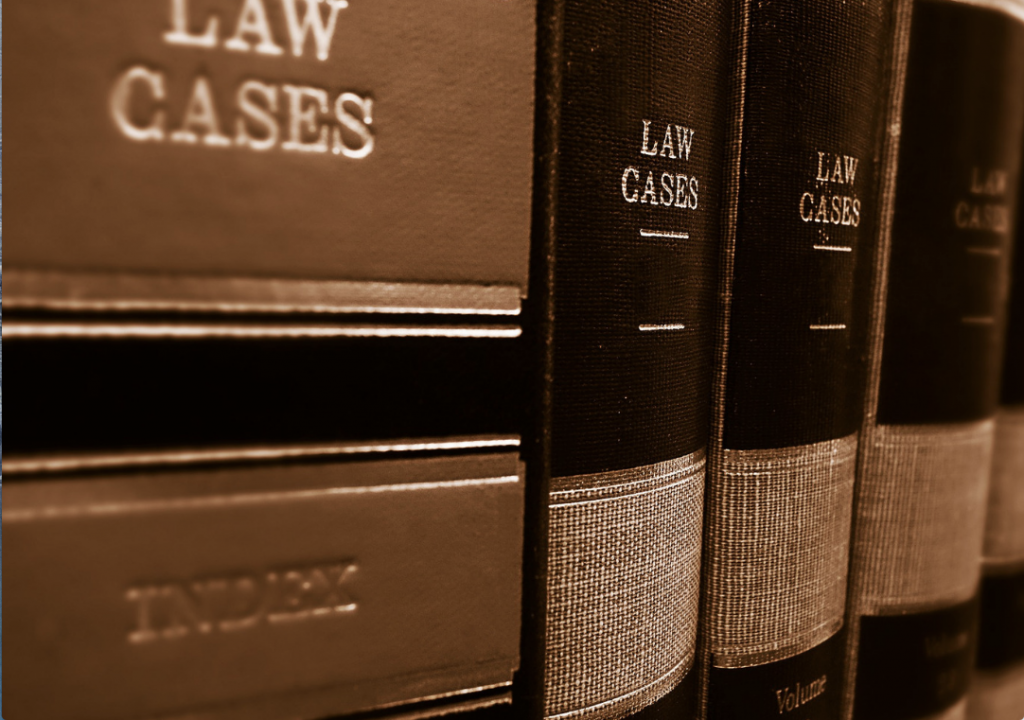
Pixabay
Question #37: What does the judicial branch do?
Answer #37: Reviews laws; explains laws; resolves disputes (disagreements); decides if a law goes against the Constitution.
Unlike the legislative and executive branches of the government, where the people directly elect members, judicial branch judges are appointed by the president and confirmed by the Senate. The federal courts in the judicial branch interpret and determine the constitutionality of the law.
Congress can only decide on the boundaries of federal court jurisdiction and on whether to impeach a federal judge.
Question #38: What is the highest court in the United States?
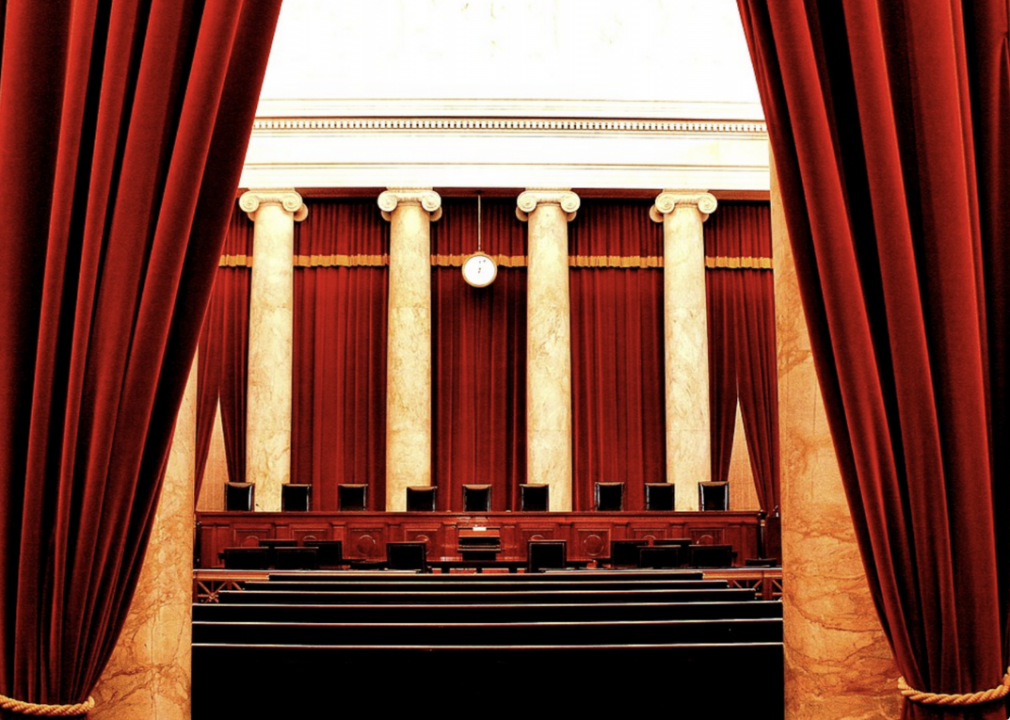
Phil Roeder // Wikimedia Commons
Question #38: What is the highest court in the United States?
Answer #38: Supreme Court.
The U.S. Supreme Court is the highest level in the judicial branch of government. The Supreme Court was incorporated after the Judiciary Act of 1789, when President George Washington included a national judiciary system into the U.S. Constitution Article Three, Section One. The Supreme Court, led by the chief justice of the United States, is the only court established in the U.S. Constitution.
Question #39: How many justices are on the Supreme Court?
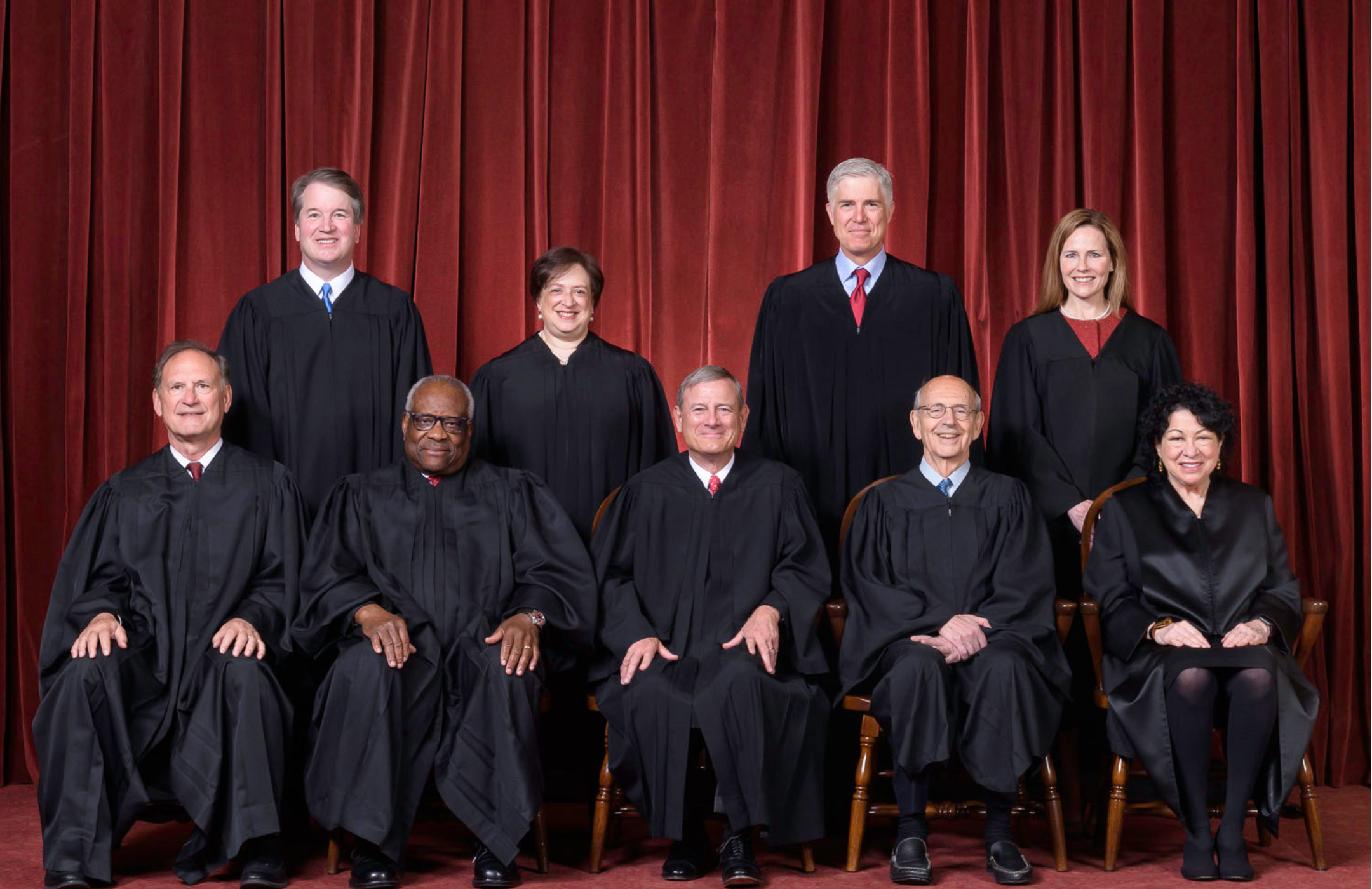
Wikimedia Commons
Question #39: How many justices are on the Supreme Court?
Answer #39: nine
There are nine justices are on the Supreme Court, including the chief justice of the United States. All nine justices on the Supreme Court are nominated by the president and confirmed by the Senate. The number of justices in the Supreme Court has changed since the original six in 1769. After several adjustments, in 1869 the Circuit Judges Act solidified the number at nine.
Question #40: Who is the chief justice of the United States now?
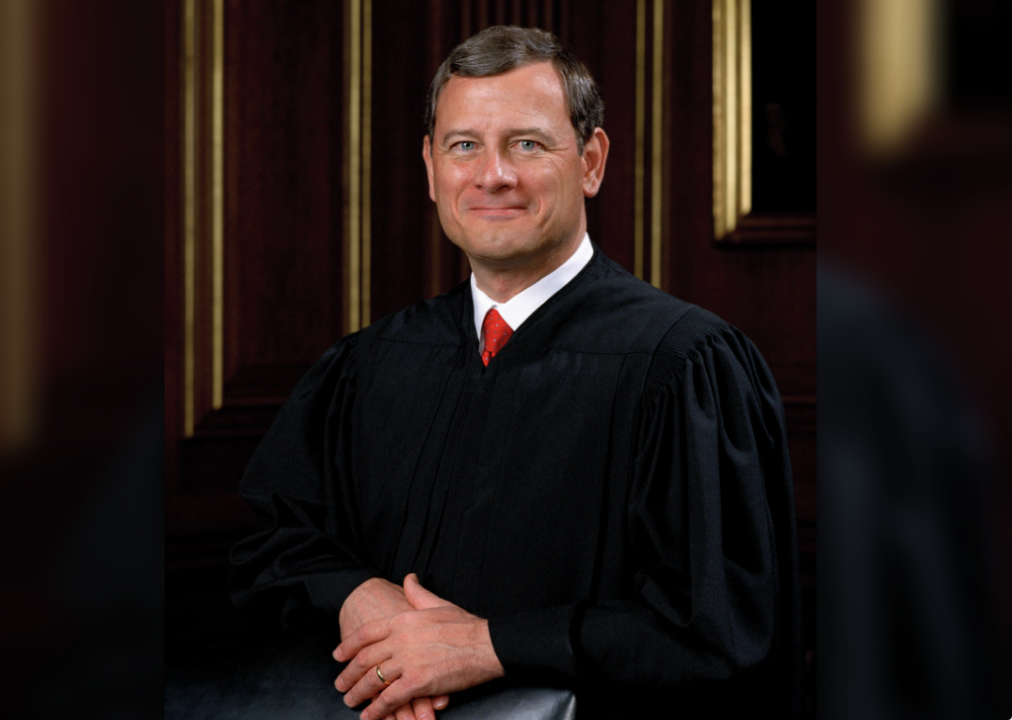
Public Domain // Wikimedia Commons
Question #40: Who is the chief justice of the United States now?
Answer #40: John G. Roberts
John G. Roberts is the chief justice of the United States and has been the highest ranking federal judicial magistrate since 2005. The Chief Justice of the United States, who serves until death, retirement, or impeachment, is always directly selected by the president and confirmed by the Senate. As the head of the Supreme Court, the chief justice of the United States presides over a presidential impeachment trial.
Question #41: Under our Constitution, some powers belong to the federal government. What is one power of the federal government?
You may also like: 50 ways the news industry has changed in the last 50 years
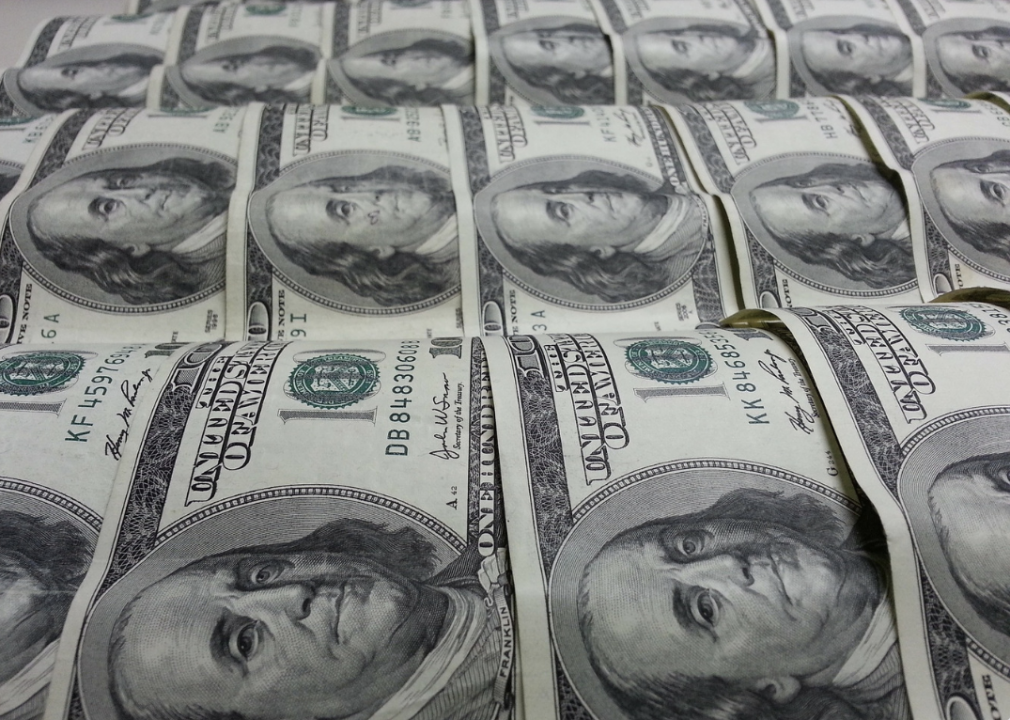
Pixabay
Question #41: Under our Constitution, some powers belong to the federal government. What is one power of the federal government?
Answer #41: To print money; to declare war; to create an army; to make treaties.
The U.S. government has the power to print money, declare war, create an army, and make treaties, among many other powers. The U.S. Department of Treasury Bureau of Engraving and Printing creates all currency, either in paper or coin form. State of the art technology is used to inspect all currency produced by the federal government. After making money in the Bureau, officials transfer it to the Federal Reserve, the central bank of the U.S.
Question #42: Under our Constitution, some powers belong to the states. What is one power of the states?
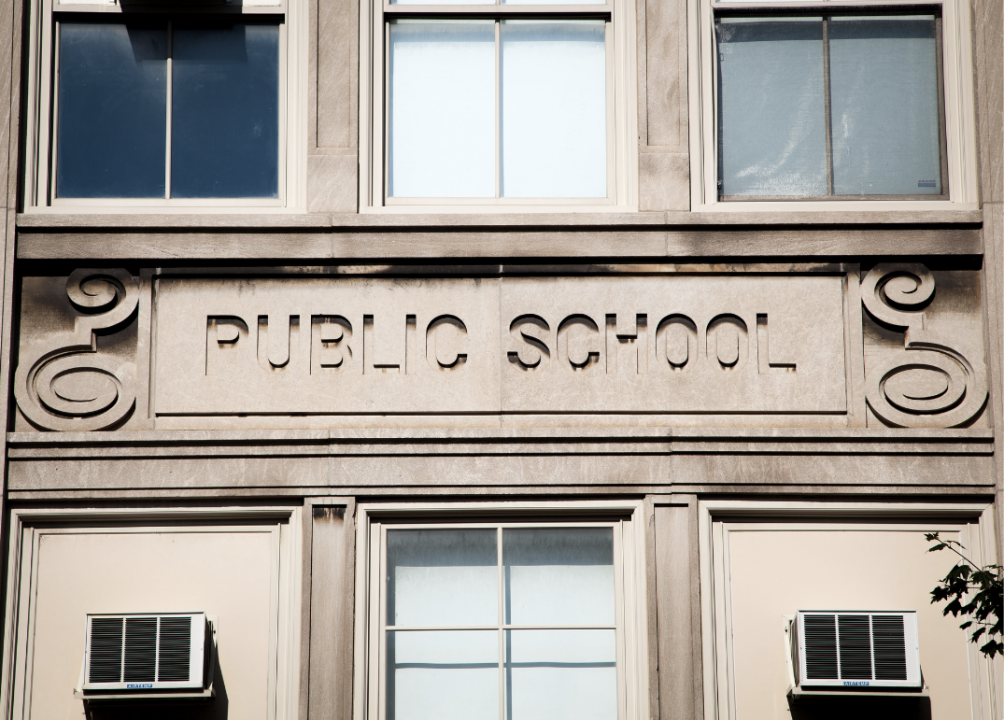
JL Jahn // Shutterstock
Question #42: Under our Constitution, some powers belong to the states. What is one power of the states?
Answer #42: Provide schooling and education; provide protection (police); provide safety (fire departments); give a driver’s license; approve zoning and land use.
Each of the 50 states in the U.S. has the individual power to govern its own territory. Some of the most vital state powers include providing protection, education, and housing to citizens throughout the state. Each states’ demographics differ due to its location and history. For example, a highly populated state may have more school districts, larger police forces, and more housing throughout than a state with fewer people.
Question #43: Who is the governor of your state now?
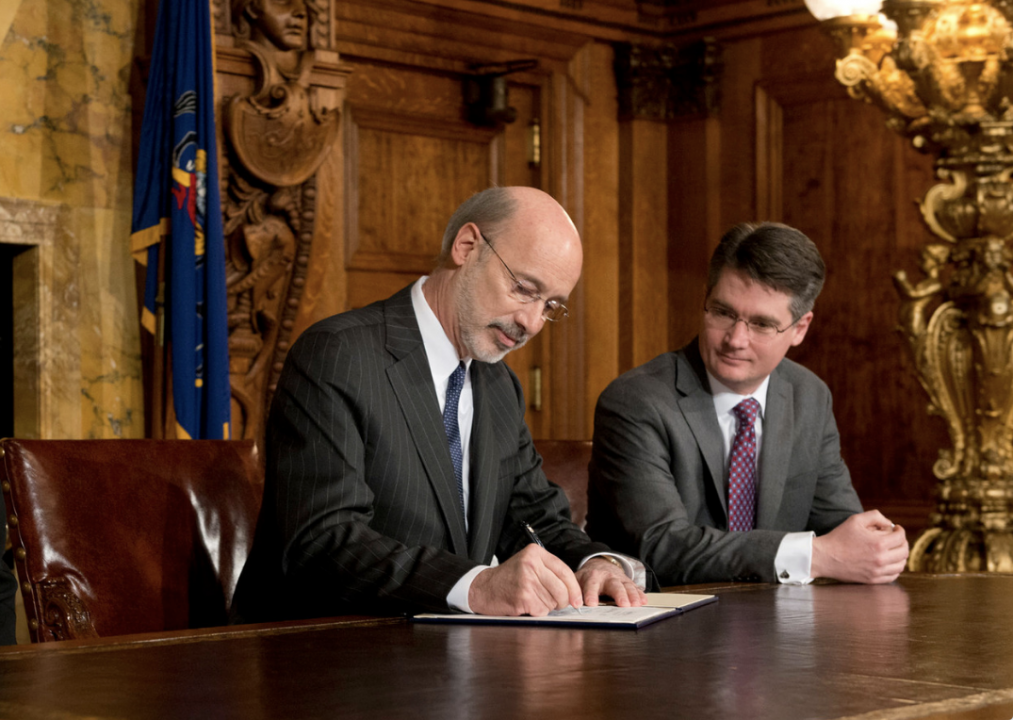
Governor Tom Wolf // Flickr
Question #43: Who is the governor of your state now?
Answer #43: Answers will vary. District of Columbia residents should answer that D.C. does not have a governor.
As the head of their state’s government, every U.S. governor acts as the chief executive officer of the territory. Each state governor, who is directly elected by state residents, has a salary that is determined by the state they serve. Like the president, the governor serves four years and has the power to veto proposed legislation from becoming law. Vermont and New Hampshire are the only two states that elect a governor every two years and not four.
Question #44: What is the capital of your state?
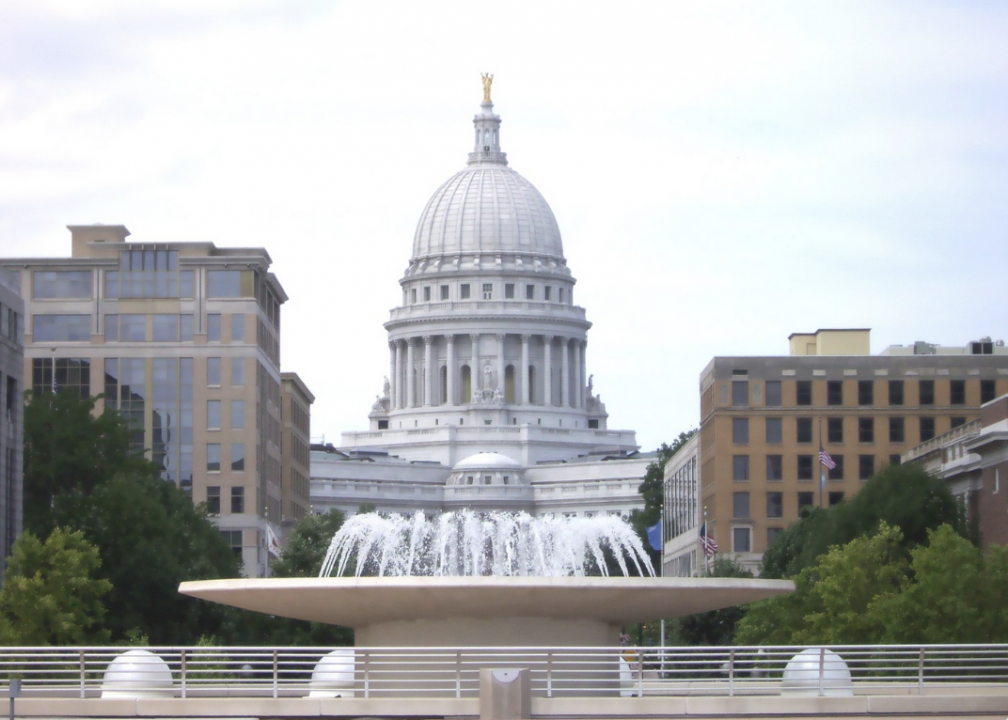
MuZemeke // Wikimedia Commons
Question #44: What is the capital of your state?
Answer #44: Answers will vary. District of Columbia residents should answer that D.C. is not a state and does not have a capital. Residents of U.S. territories should name the capital of the territory.
Every state in the U.S. has a capital city and building where federal government business takes place. It is the location where the Senate and House meet to propose, debate, and pass legislation, and where the governor signs or vetoes bills. It is also where many other significant events take place, including important government ceremonies and public policy protests.
Question #45: What are the two major political parties in the United States?
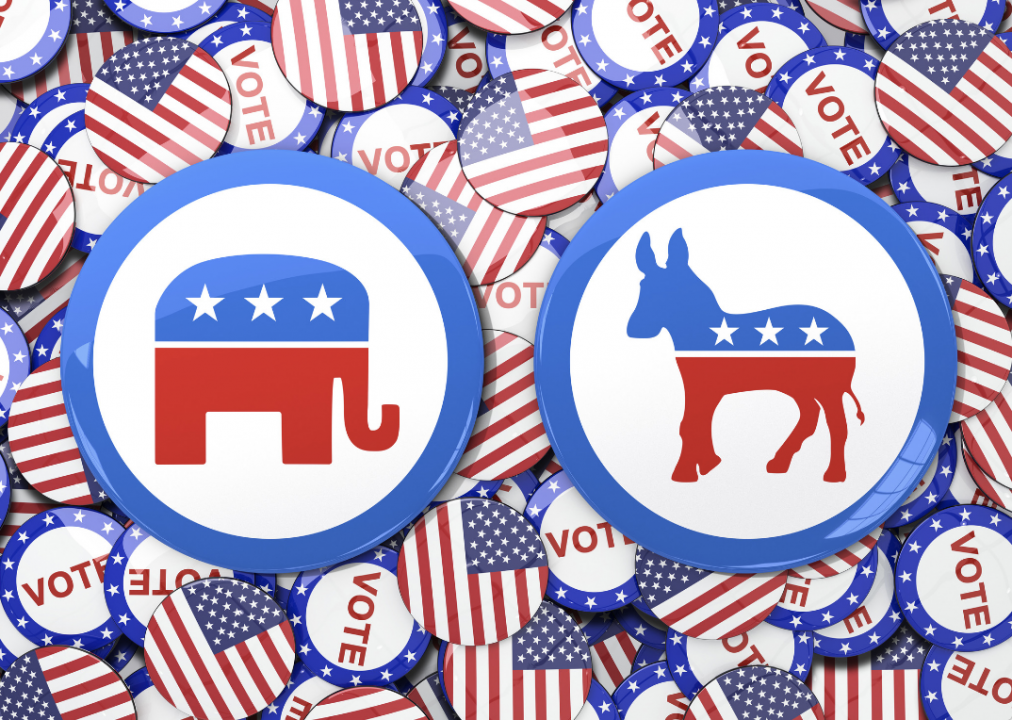
vectorfusionart // Shutterstock
Question #45: What are the two major political parties in the United States?
Answer #45: Democratic and Republican
The Democratic and Republican political parties are the most powerful political parties in the U.S. The Democratic party has a more liberal view of public policy and economic equality where the Republican party, also referred to as the Grand Old Party (GOP), has a more conservative view and supports free-market capitalism. There have been more GOP presidents than Democratic presidents in U.S. history.
Question #46: What is the political party of the president now?
You may also like: States with the highest and lowest Trump approval ratings
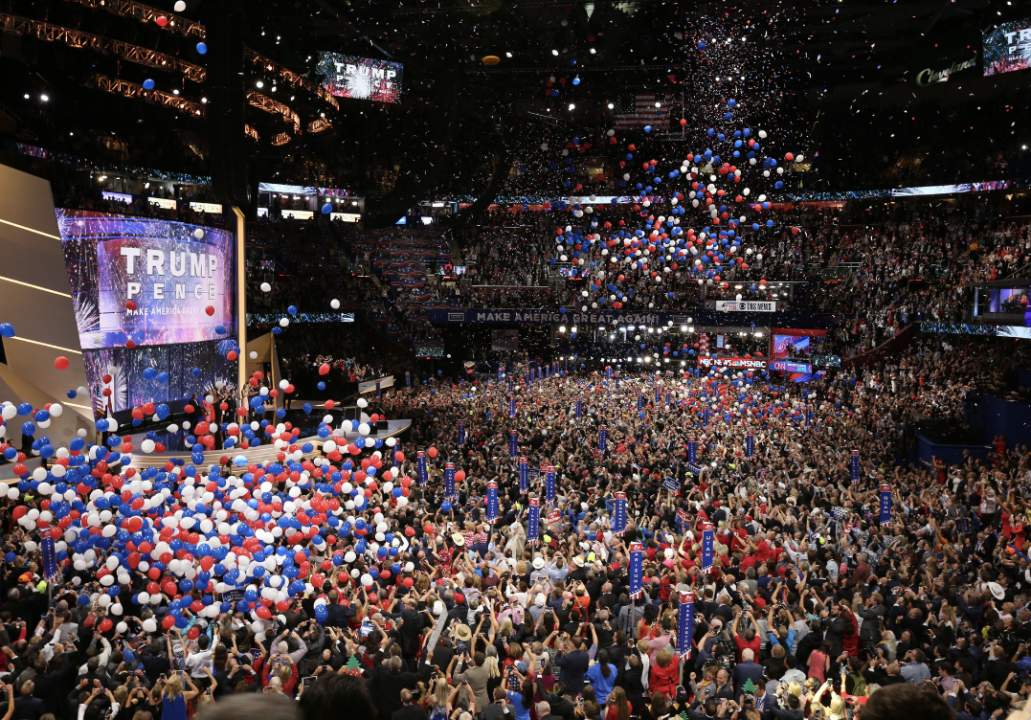
mark reinstein // Shutterstock
Question #46: What is the political party of the president now?
Answer #46: Democratic
President Joe Biden is a Democrat. Before him, former President Donald Trump was a Republican. The first U.S. president, George Washington, was neither a Democrat nor a Republican when he served for two terms. At the time, neither of the current major parties existed. The Democratic party was founded in 1828, and the GOP was founded in 1854.
Question #47: What is the name of the speaker of the House of Representatives now?
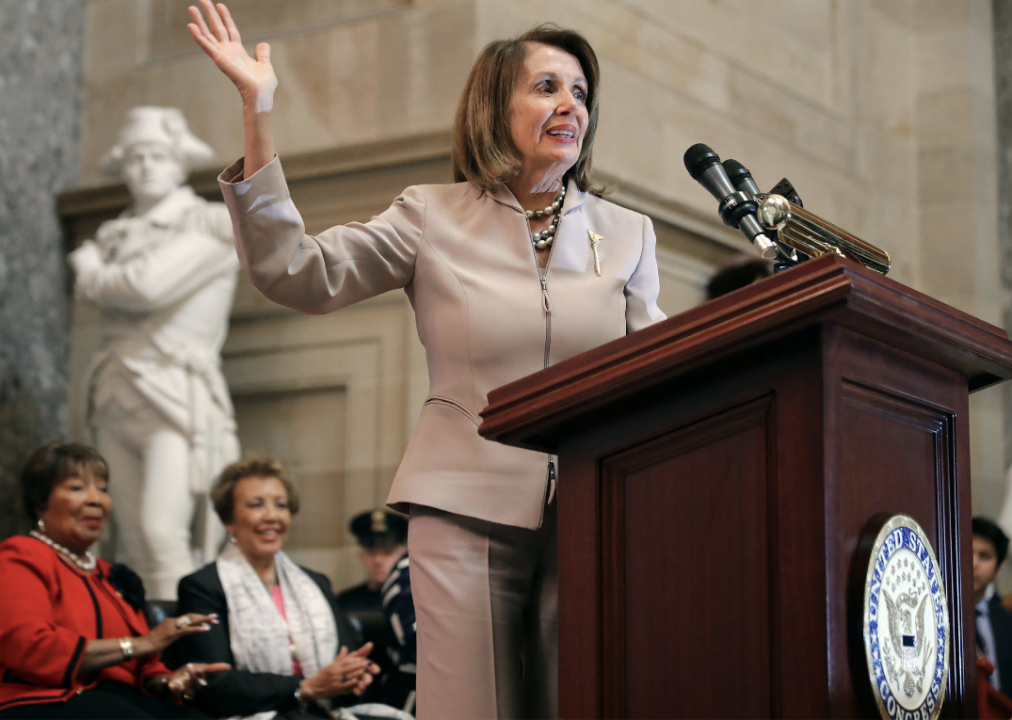
Chip Somodevilla // Getty Images
Question #47: What is the name of the speaker of the House of Representatives now?
Answer #47: Visit uscis.gov/citizenship/testupdates for the name of the speaker of the House of Representatives.
The speaker of the House is Democrat Nancy Pelosi. The first speaker of the House, Frederick Muhlenberg of Pennsylvania, presided over the first meeting of Congress. Every speaker of the House controls the Rules Committee, which determines which bills move past committee to continue to the floor for debate.
Question #48: There are four amendments to the Constitution about who can vote. Describe one of them.
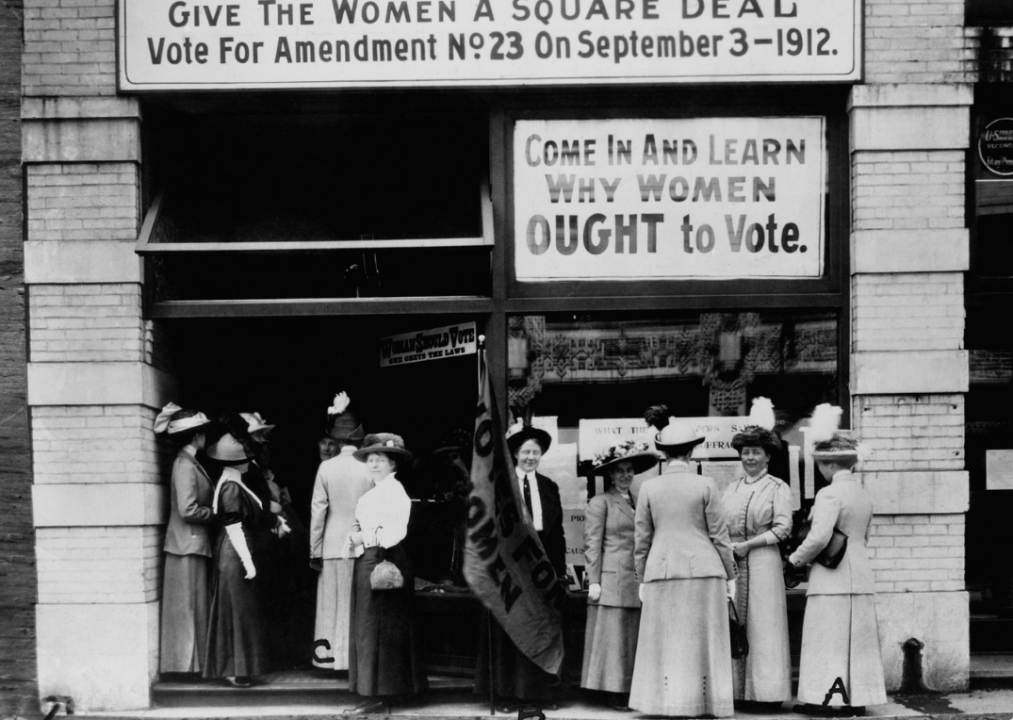
Everett Historical // Shutterstock
Question #48: There are four amendments to the Constitution about who can vote. Describe one of them.
Answer #48: Citizens 18 and older can vote; You don’t have to pay a poll tax to vote; Any citizen can vote (women and men can vote); A male citizen of any race can vote.
A U.S. citizen must be 18 years old in order to vote, thanks to the Twenty-Sixth Amendment to the U.S. Constitution. Other disenfranchised groups, including African American men and women of all races, were not allowed to vote before two subsequent amendments were passed. White women were granted suffrage by the Nineteenth Amendment while the Fifteenth Amendment gave African Americans the right to vote, though access to polling places continues to be limited by systemic voter suppression.
Question #49: What is one responsibility that is only for United States citizens?
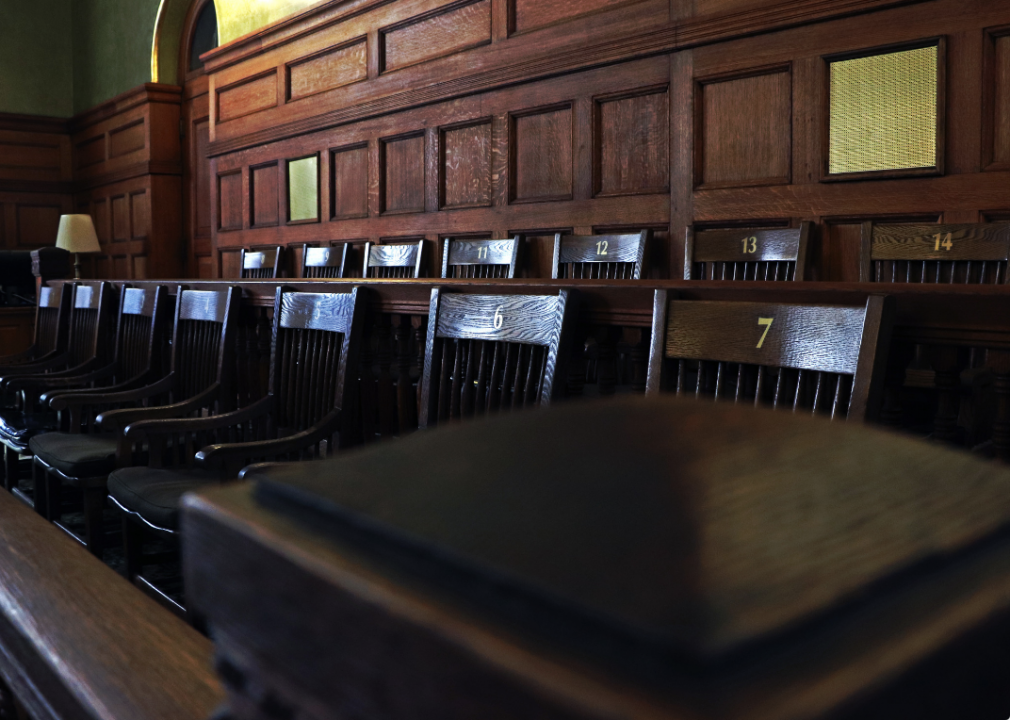
Crazy City Lady // Shutterstock
Question #49: What is one responsibility that is only for United States citizens?
Answer #49: Serve on a jury; vote in a federal election.
U.S. citizens have the sole responsibility of serving on a jury and voting in a federal election. The basis of the U.S. Constitution, “All men are created equal,” allows for any rightful citizen above the age 18 to serve with a panel of their peers in court and vote in a federal election for candidates and public policy.
Question #50: Name one right only for United States citizens.
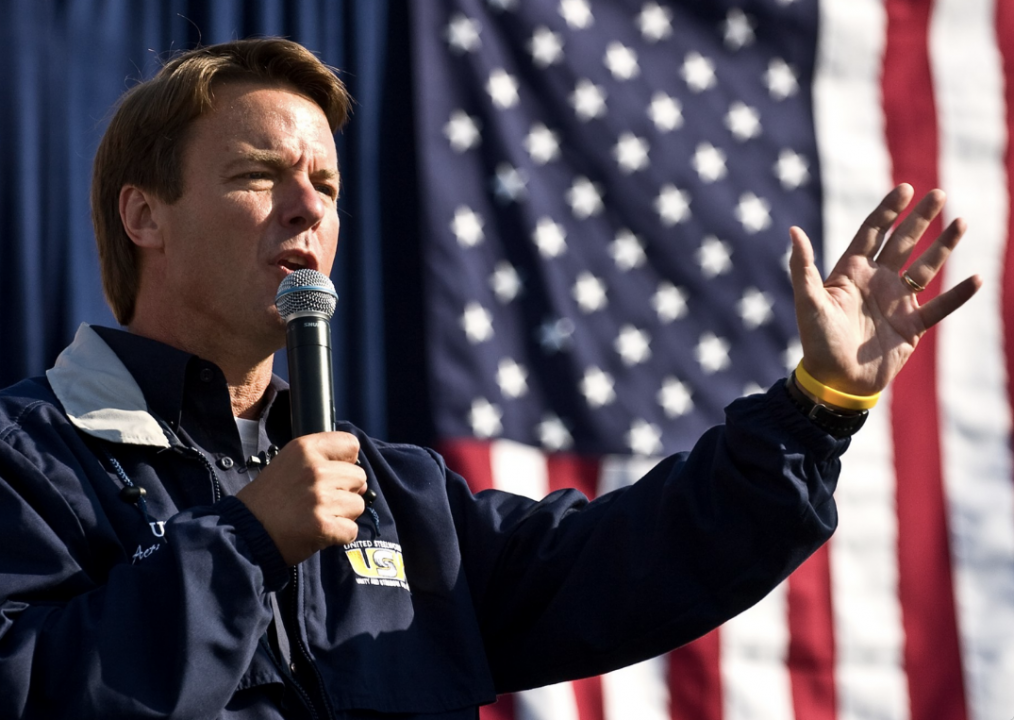
Mike Murphy // Wikimedia Commons
Question #50: Name one right only for United States citizens.
Answer #50: Vote in a federal election; run for federal office.
Any U.S. citizen who has not committed a felony can vote in a federal election or run for federal office. Unlike in many other countries, an elected official from the U.S. does not have to be born into influence or money, or be a specific gender, to lead the people if directly elected.
Question #51: What are two rights of everyone living in the United States?
You may also like: Youngest heads of state in the world right now

Pixabay
Question #51: What are two rights of everyone living in the United States?
Answer #51: Freedom of expression; freedom of speech; freedom of assembly; freedom to petition the government; freedom of religion; the right to bear arms.
The Bill of Rights, which includes the first 10 amendments to the U.S. Constitution, allows for certain personal freedoms including expression, speech, assembly, petition, religion, and the right to bear arms. The freedoms of expression, speech, assembly, and petition the government all lie in the First Amendment, whereas the right to bear arms is in the Second Amendment.
Question #52: What do we show loyalty to when we say the Pledge of Allegiance?
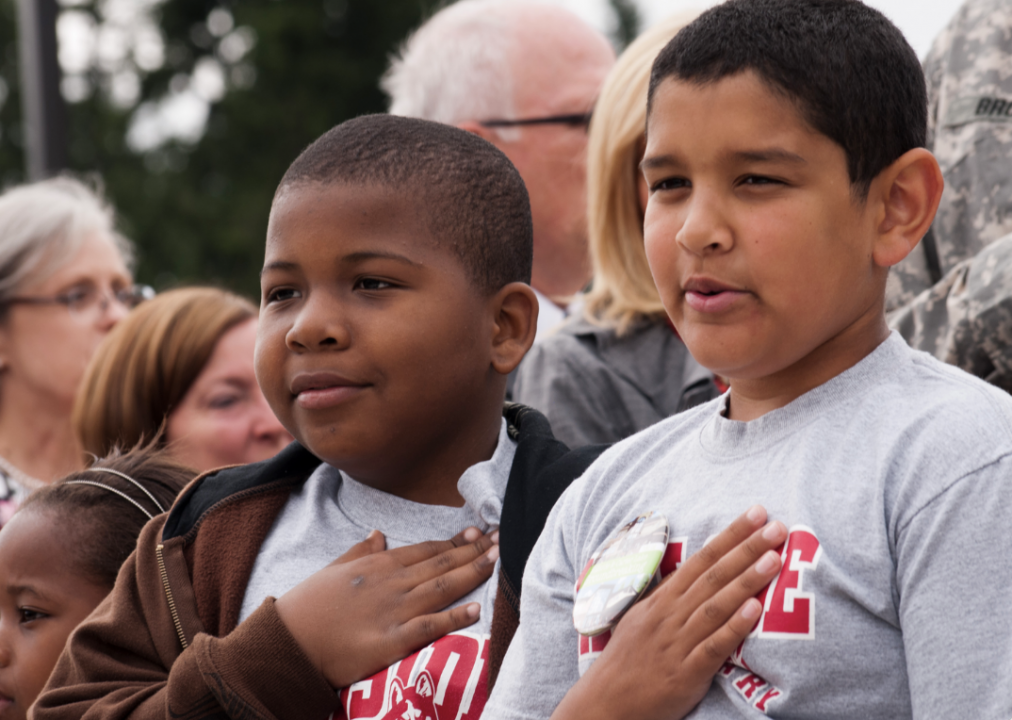
Bernardo Fuller // Wikimedia Commons
Question #52: What do we show loyalty to when we say the Pledge of Allegiance?
Answer #52: The United States; the flag.
The Pledge of Allegiance, written by minister Francis Bellamy in 1892, is the official solemn promise of loyalty to the U.S. After the phrase “under God,” was added to the pledge at the request of President Dwight D. Eisenhower in 1954, the oath became controversial, with some suggesting it violated their First Amendment rights to freedom of religion. In 2014, the Massachusetts Supreme Court ruled that the Pledge of Allegiance was not religious and the phrase “under God,” remains.
Question #53: What is one promise you make when you become a United States citizen?
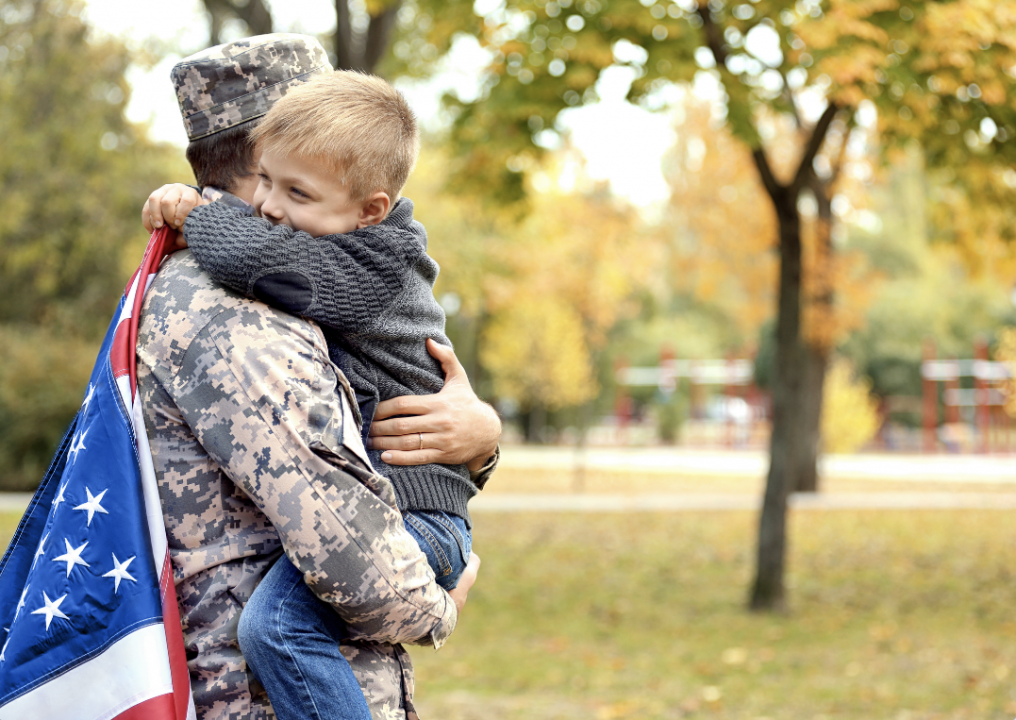
Africa Studeio // Shutterstock
Question #53: What is one promise you make when you become a United States citizen?
Answer #53: Give up loyalty to other countries; defend the Constitution and laws of the United States; obey the laws of the United States; serve in the U.S. military (if needed); serve (do important work for) the nation (if needed); be loyal to the United States.
Of the many promises made by U.S. citizens, defending the U.S. Constitution is an especially significant vow because the nation was founded on the U.S. Constitution. By upholding the U.S. Constitution and its laws, a citizen exhibits their loyalty to the nation.
Question #54: How old do citizens have to be to vote for president?
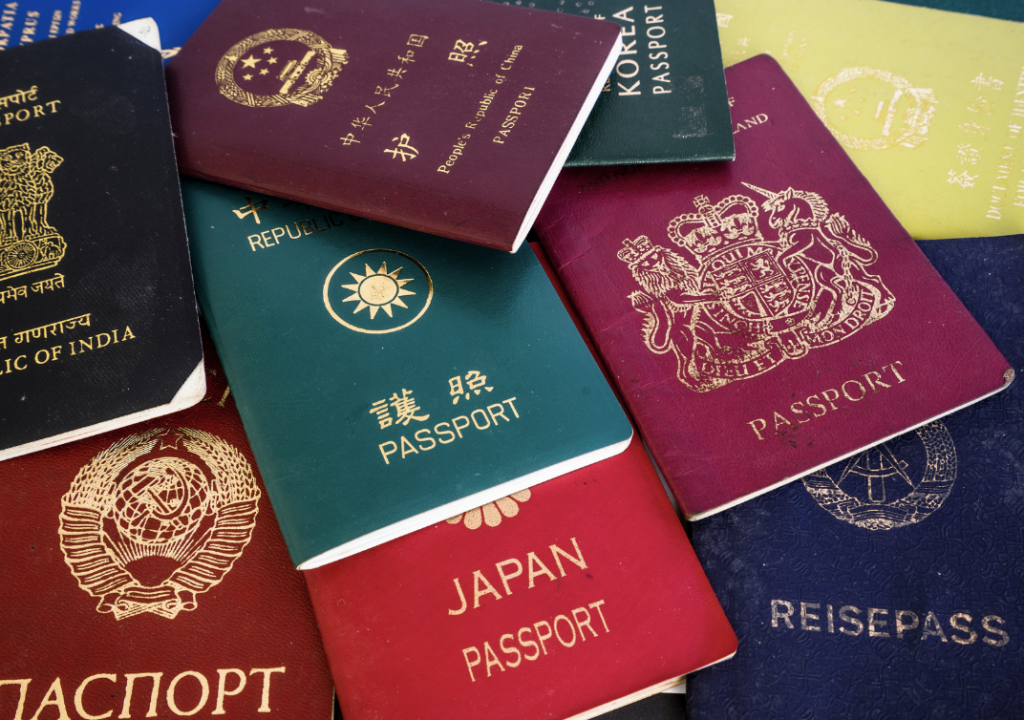
Chintung Lee // Shutterstock
Question #54: How old do citizens have to be to vote for president?
Answer #54: 18 and older.
A U.S. citizen must be at least 18 years old to vote in a federal election; however, that was not always the case. Before 1971, a U.S. citizen had to be 21 years old to vote, but after the U.S. Constitution adopted the Twenty-Sixth Amendment, President Richard M. Nixon signed the change into law. While the Senate voted 94-0 for the change, the House voted 401-19.
Question #55: What are two ways that Americans can participate in their democracy?
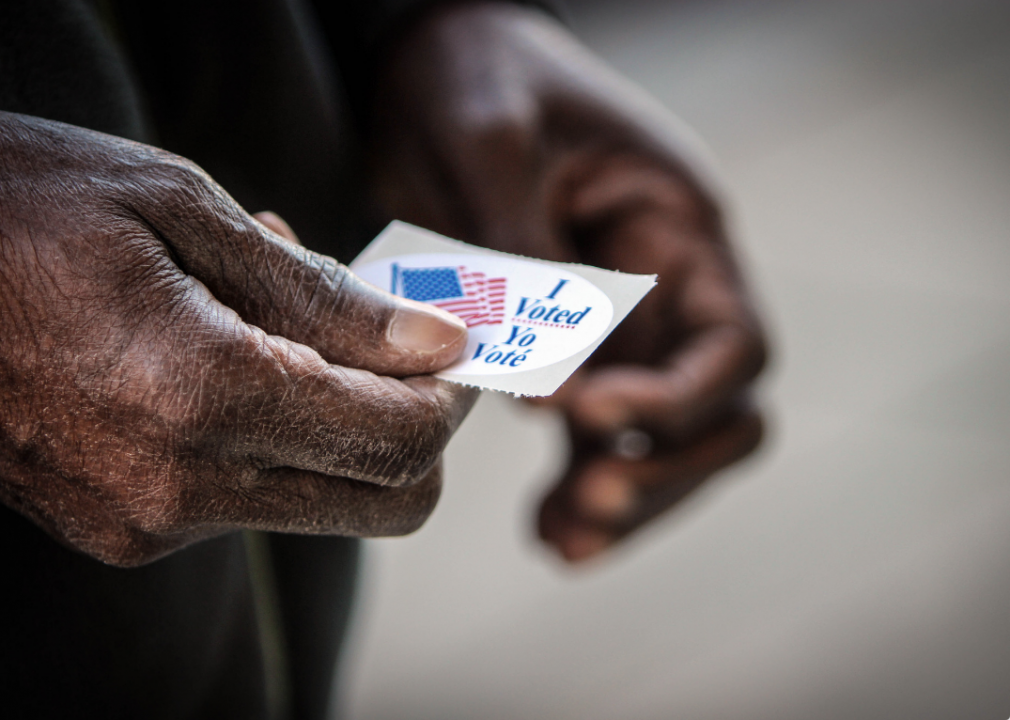
Eileen Salazar // Shutterstock
Question #55: What are two ways that Americans can participate in their democracy?
Answer #55: Vote; join a political party; help with a campaign; join a civic group; join a community group; give an elected official your opinion on an issue; call senators and representatives; publicly support or oppose an issue or policy; run for office; write to a newspaper.
There are several ways a citizen can participate in their democracy, which range from voting to running for federal office. Citizens can also participate in their democracy by attending local government meetings, sending a letter to the editor of a newspaper, or holding a protest against an existing or proposed public policy.
Question #56: When is the last day you can send in federal income tax forms?
You may also like: 25 terms you should know to understand the climate change conversation
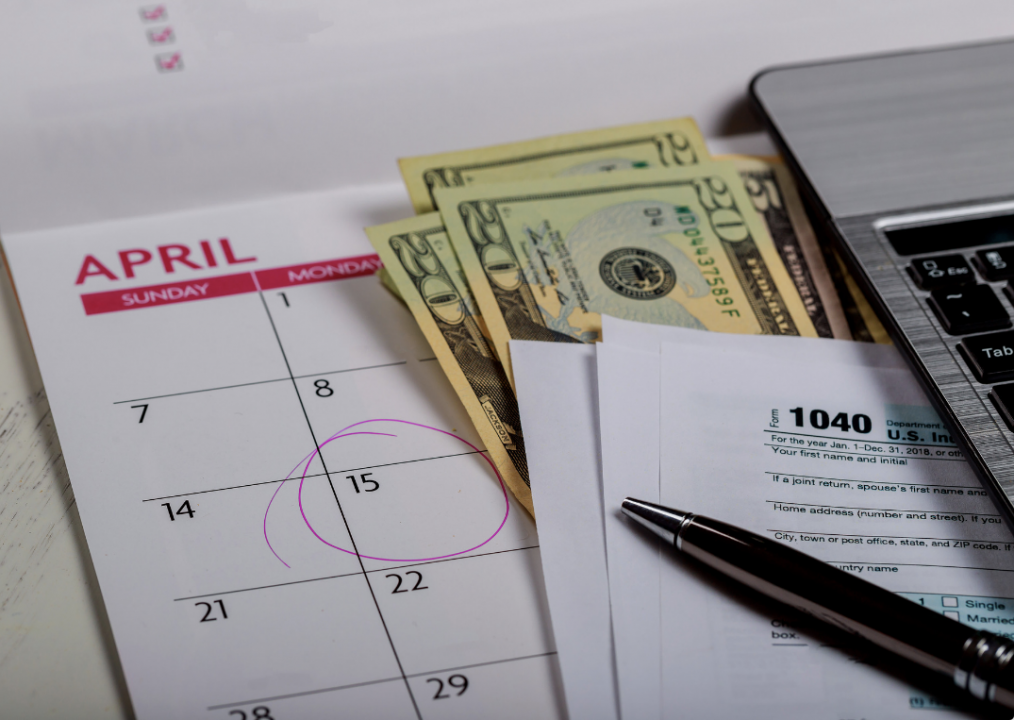
ungvar // Shutterstock
Question #56: When is the last day you can send in federal income tax forms?
Answer #56: April 15.
The last day any U.S. citizen can file their federal tax forms is April 15 of any given year. If a citizen needs more time to file their taxes, they can request additional time by submitting an IRS Form 4868. By registering for an extension, citizens can avoid penalties otherwise incurred for not filing and paying on time. There are penalties for tax fraud and evasion in the U.S., which include fines and possible imprisonment.
Question #57: When must all men register for the Selective Service?
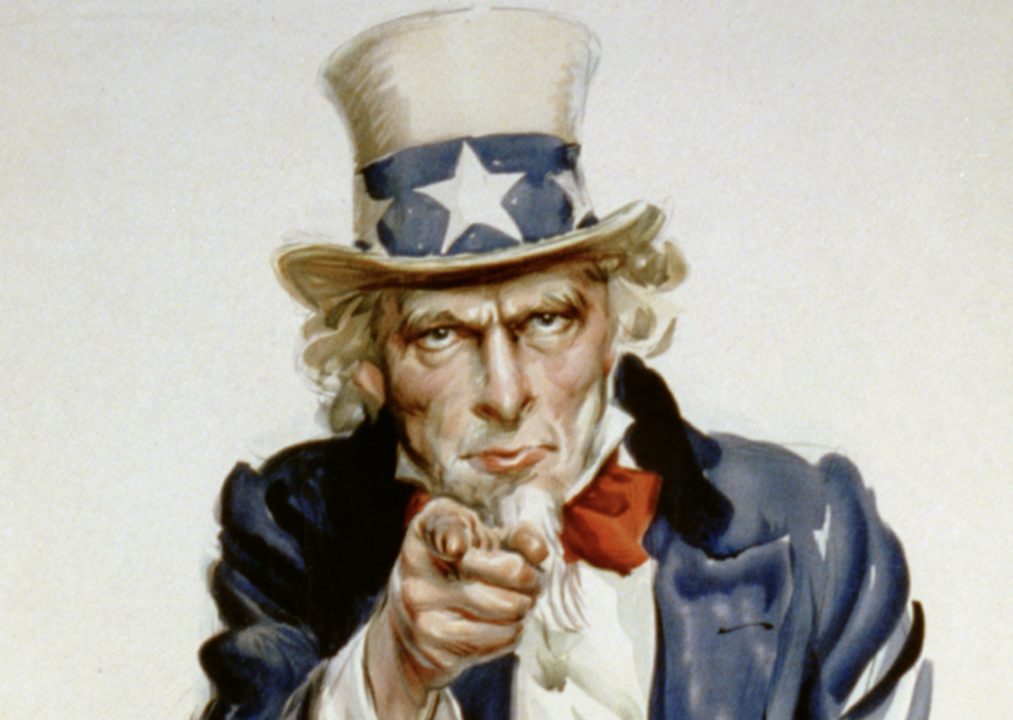
Everett Historical // Shutterstock
Question #57: When must all men register for the Selective Service?
Answer #57: At age 18; between 18 and 26.
All men of the 18 in the U.S. must register for the Selective Service within the first 30 days of turning 18, and remain recorded until the age 26. Just because U.S. men must register does not mean they will necessarily serve in any of the Armed Forces unless a draft is called. The Vietnam War draft was the only time the federal government mandated men to serve their country overseas.
Question #58: What is one reason colonists came to America?
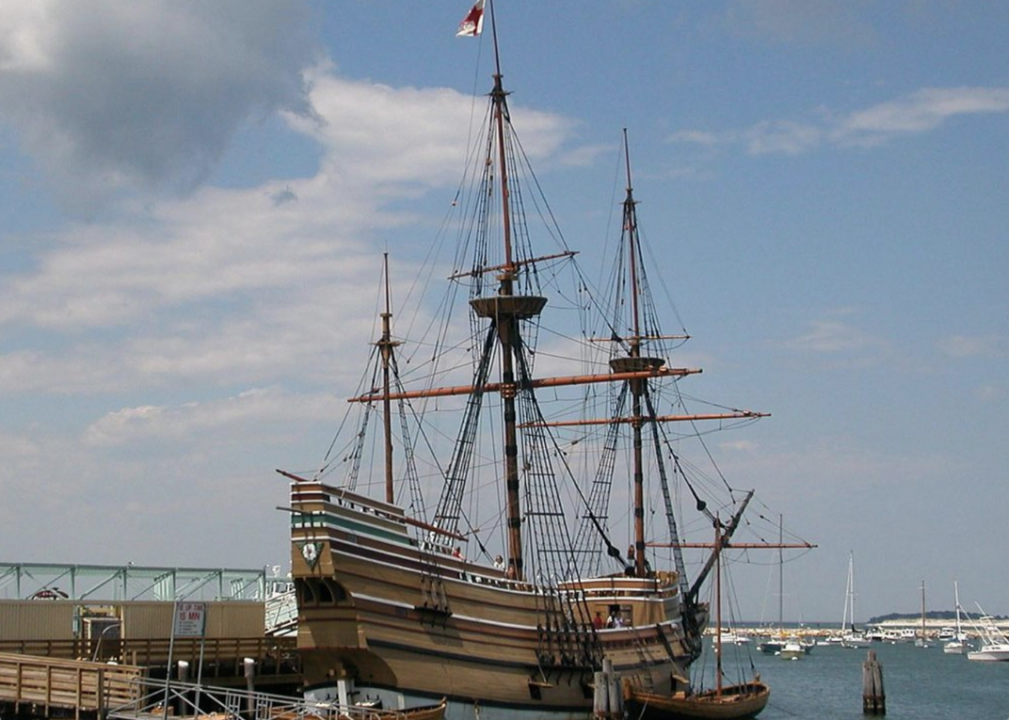
Raime // Wikimedia Commons
Question #58: What is one reason colonists came to America?
Answer #58: Freedom; political liberty; religious freedom; economic opportunity; practice their religion; escape persecution.
Colonists broke from Great Britain to seek religious and political freedom. The first colony founded was in Jamestown, Va., in 1607. Thirteen years later, in 1620, more colonists from Great Britain landed in Plymouth, Mass. The Plymouth Rock, a Dedham Granite boulder, later became a significant symbol of the principles of the first European colonists.
Question #59: Who lived in America before the Europeans arrived?
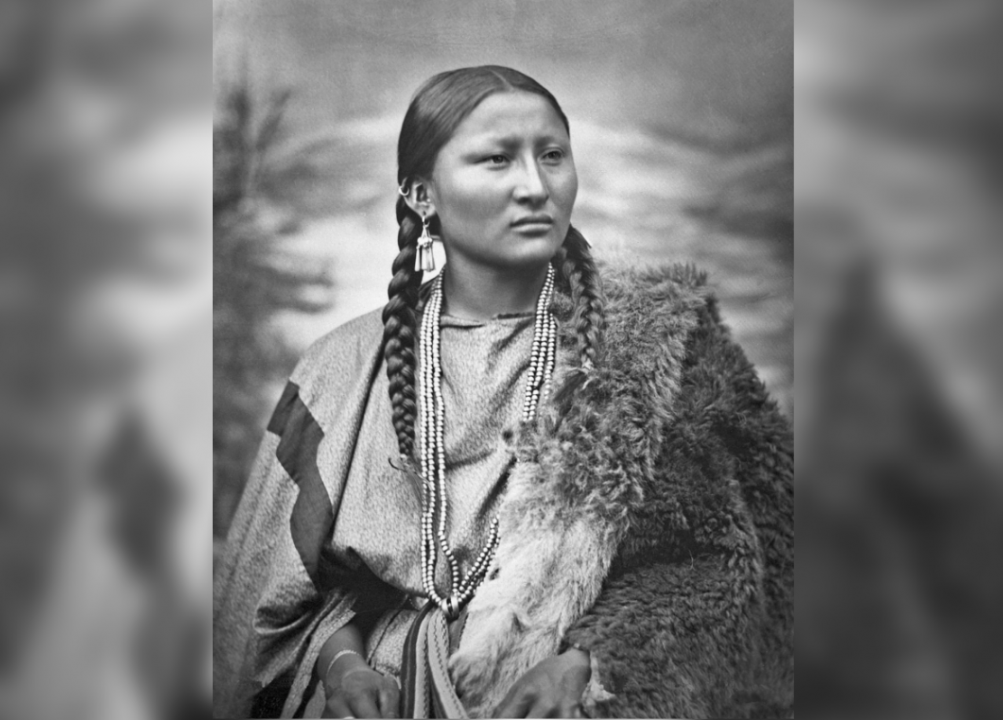
Laton Alton Huffman // Wikimedia Commons
Question #59: Who lived in America before the Europeans arrived?
Answer #59: American Indians; Native Americans.
The Native American Indians were the first people to live in the territory that currently makes up the United States. Also referred to as indigenous people, American Indians built cities, traded goods and information, and developed robust and distinctive cultures for many thousands of years before colonists first settled in the U.S. Existing reservations fall under the federal government Department of the Interior Bureau of Indian Affairs.
Question #60: What group of people was taken to America and sold as slaves?
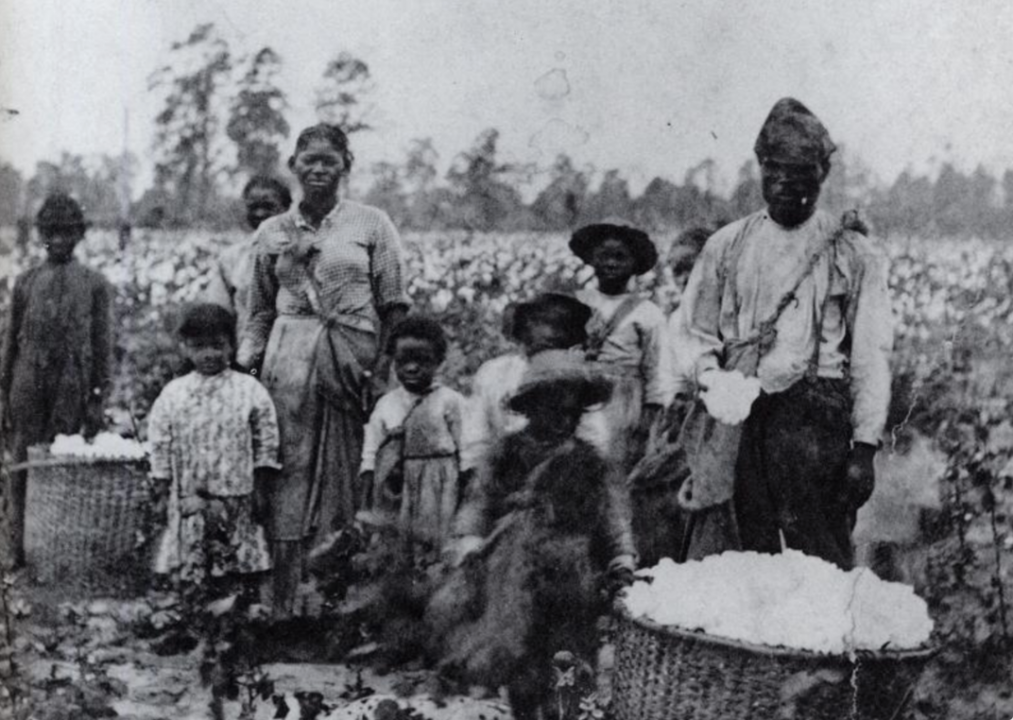
Public Domain // Wikimedia commons
Question #60: What group of people was taken to America and sold as slaves?
Answer #60: Africans; people from Africa.
During the Atlantic slave trade, European and American slavers trafficked and sold people from Western and Central Africa to Americans to perform forced labor. Three hundred years after the first enslaved Africans arrived on North American shores, the Emancipation Proclamation freed all enslaved people in the South. After the Civil War, the Thirteenth Amendment outlawed slavery, except in the case of those convicted of felonies.
Question #61: Why did the colonists fight the British?
You may also like: Do you know the mayors of these major cities?

Nathanial Currier // Wikimedia Commons
Question #61: Why did the colonists fight the British?
Answer #61: Because of high taxes (taxation without representation); because the British army stayed in their houses (boarding, quartering); because they didn’t have self-government.
Taxation without representation and a lack of self-government caused the colonists to rebel against the British crown. Additionally, the Quartering Acts, which required colonists to shelter and feed the British Army in their homes, provoked the American Revolution. The American Revolution ended in 1783, and the U.S. Constitution was formalized in 1789.
Question #62: Who wrote the Declaration of Independence?
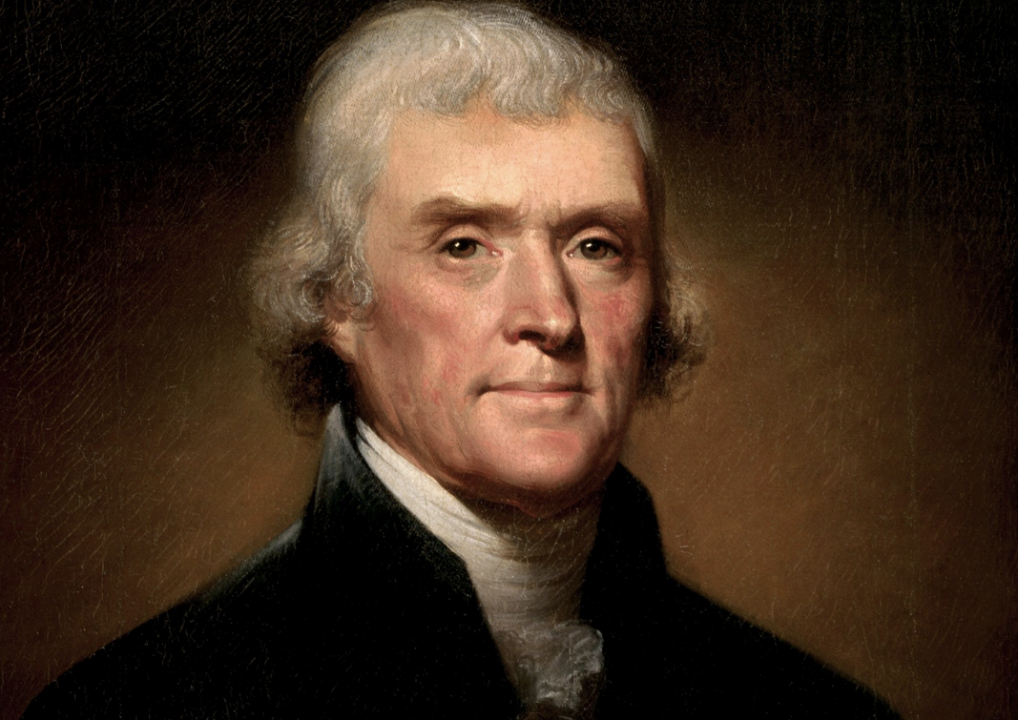
Rembrandt Peale // Wikimedia Commons
Question #62: Who wrote the Declaration of Independence?
Answer #62: Thomas Jefferson
Thomas Jefferson wrote the Declaration of Independence, which was signed by members of the Second Continental Congress. The statement of freedom designated the original 13 American colonies as sovereign states. The most famous line from the Declaration of Independence is “that all men are created equal, that they are endowed by their Creator with certain unalienable Rights, that among these are Life, Liberty and the pursuit of Happiness.”
Question #63: When was the Declaration of Independence adopted?
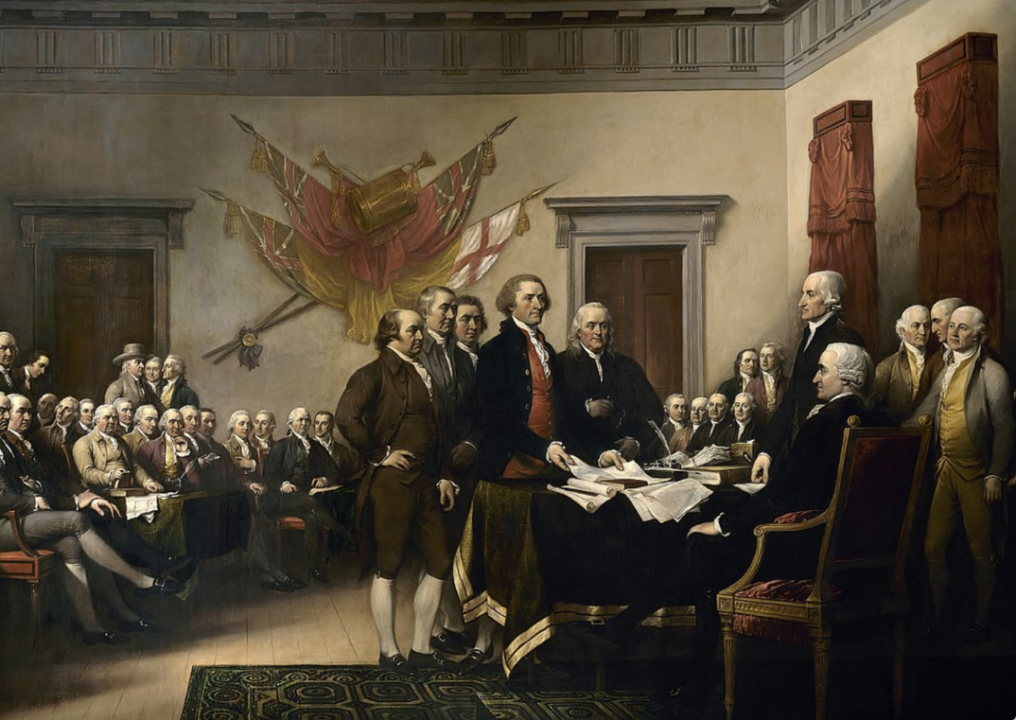
US Capitol // Wikimedia Commons
Question #63: When was the Declaration of Independence adopted?
Answer #63: July 4, 1776
July 4, 1776, is the day the Declaration of Independence was adopted. Considered America’s birthday, the date has become a reason for nationwide celebration annually. Citizens throughout the U.S. traditionally celebrate the federal holiday with long weekends or extended vacations since it falls in the summer season.
Question #64: There were 13 original states. Name three.
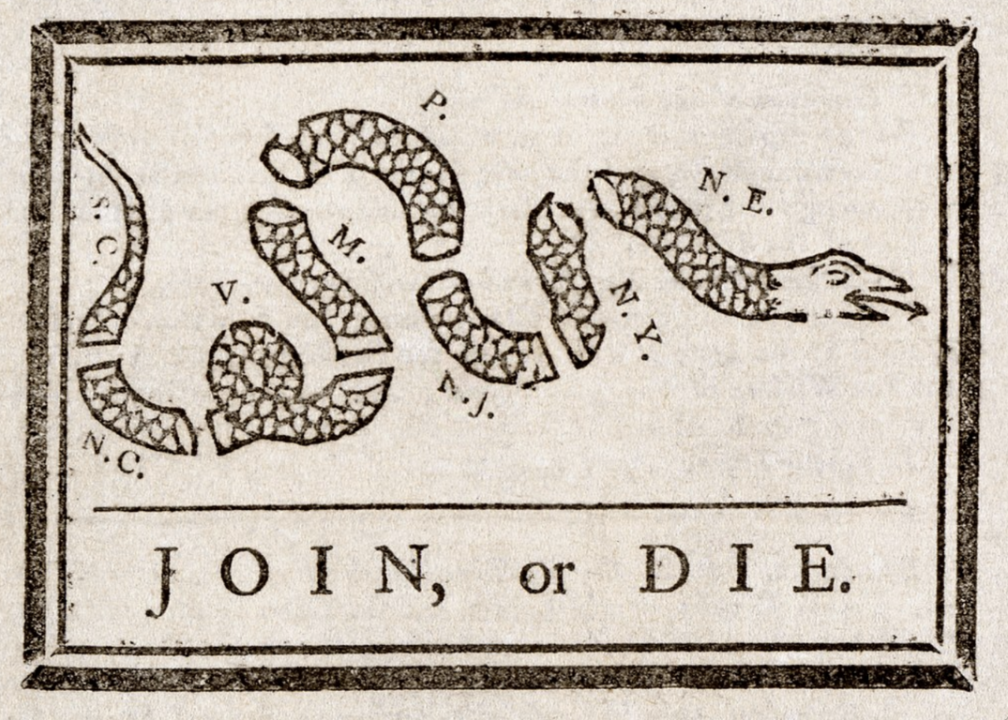
Public Domain // Wikimedia commons
Question #64: There were 13 original states. Name three.
Answer #64: New Hampshire; Massachusetts; Rhode Island; Connecticut; New York; New Jersey; Pennsylvania; Delaware; Maryland; Virginia; North Carolina; South Carolina; Georgia.
Two of the 13 original states are New Hampshire and Massachusetts. The rest of the original states are also on the Northeast coast of the U.S., where the original colonists who fled from Great Britain and King George III landed and settled. The original copy of the document, authored by Thomas Jefferson, remains in the U.S. Library of Congress.
Question #65: What happened at the Constitutional Convention?
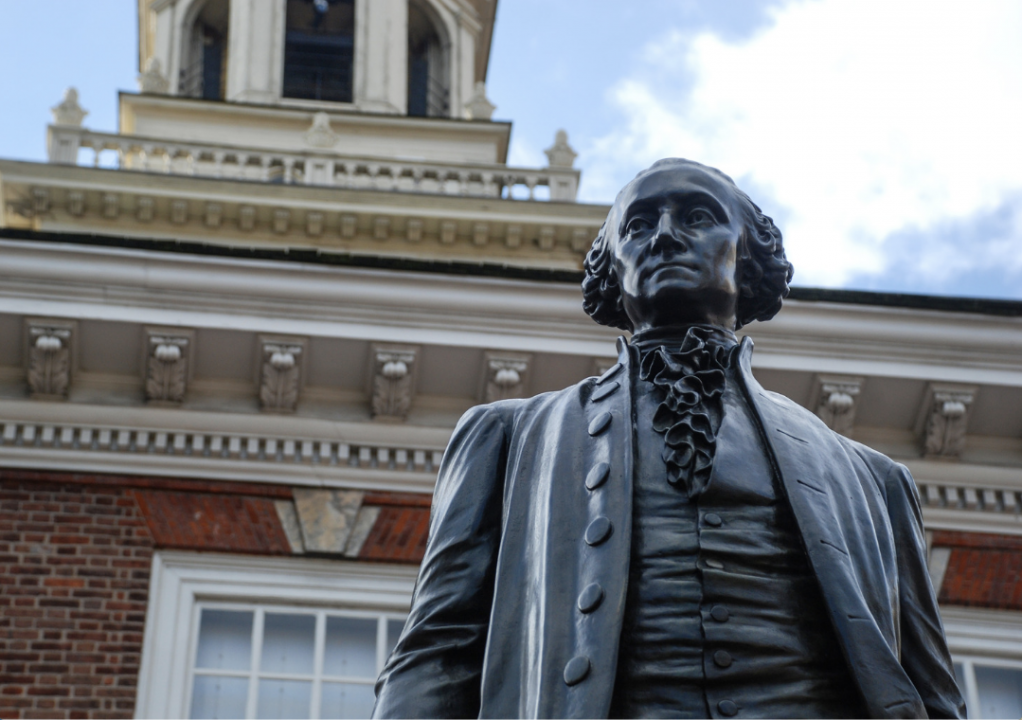
TarnPisessith // Shutterstock
Question #65: What happened at the Constitutional Convention?
Answer #65: The Constitution was written; the Founding Fathers wrote the Constitution.
The Constitutional Convention, also called the Grand Convention at Philadelphia or the Federal Convention, was the gathering of the Founding Fathers in the Pennsylvania Statehouse. The attendants at the Convention wrote the U.S. Constitution between May and September of 1787. Chief leaders of the convention included George Washington, who presided over the event,; James Madison of Virginia; and John Adams of Massachusetts.
Question #66: When was the Constitution written?
You may also like: Most and least popular governors in America
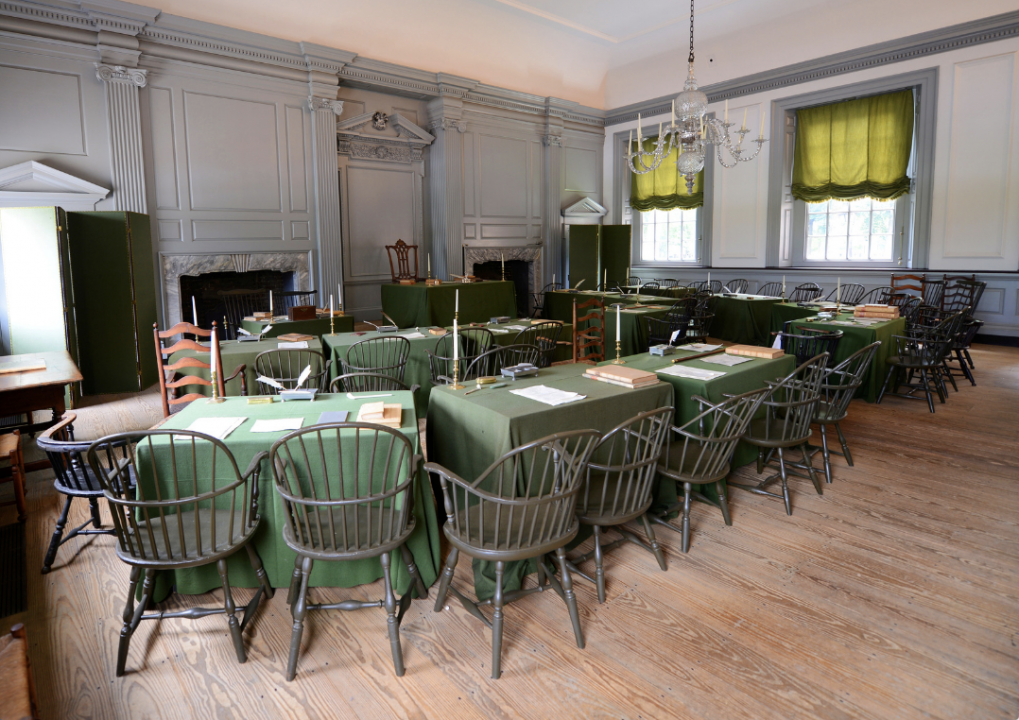
Wangkun Jia // Shutterstock
Question #66: When was the Constitution written?
Answer #66: 1787
The U.S. Constitution, authored by founding fathers James Madison, Thomas Jefferson, Thomas Paine, and John Adams, was written at the Pennsylvania State House in 1787. The amended document created the three branches of the federal government. The preamble to the U.S. Constitution, “We the People,” represents the union of colonists who sought to provide common defense and general welfare for all who broke from Great Britain.
Question #67: The Federalist Papers supported the passage of the U.S. Constitution. Name one of the writers.
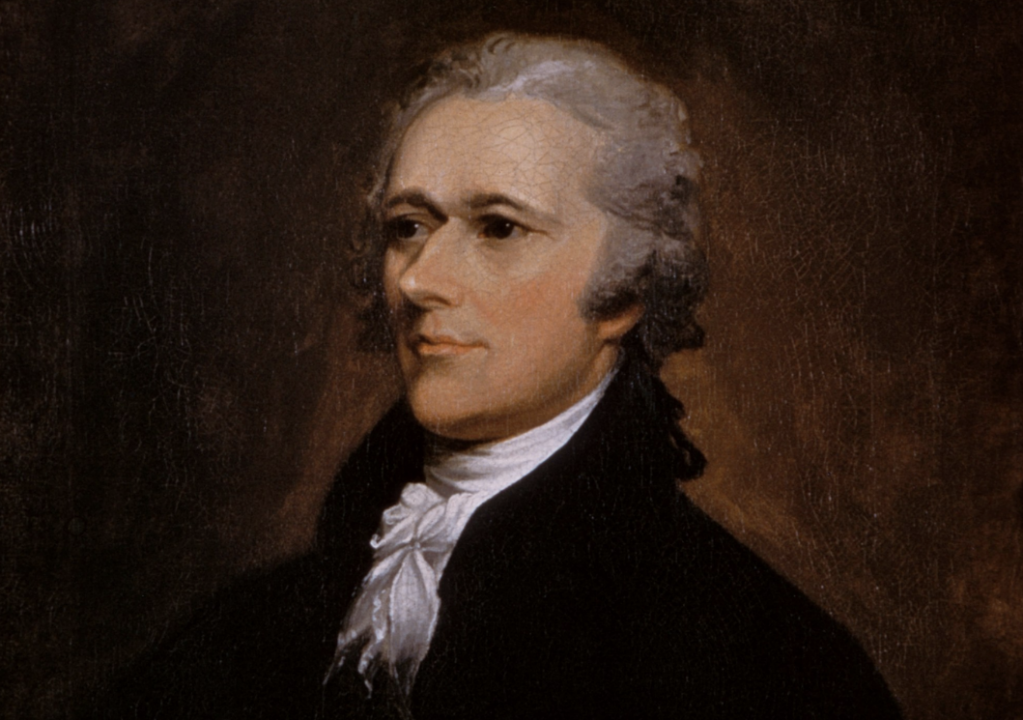
Public Domain // Wikimedia Commons
Question #67: The Federalist Papers supported the passage of the U.S. Constitution. Name one of the writers.
Answer #67: (James) Madison; (Alexander) Hamilton; (John) Jay or “Publius.”
The Federalists Papers, a two-volume collection of articles and essays, were partly authored by James Madison, a lawyer and diplomat who was also one of the authors of the U.S. Constitution and the fourth American president. The collection of articles and essays was initially titled “The Federalist” and did not name any of the three authors due to their fear of persecution.
Question #68: What is one thing Benjamin Franklin is famous for?
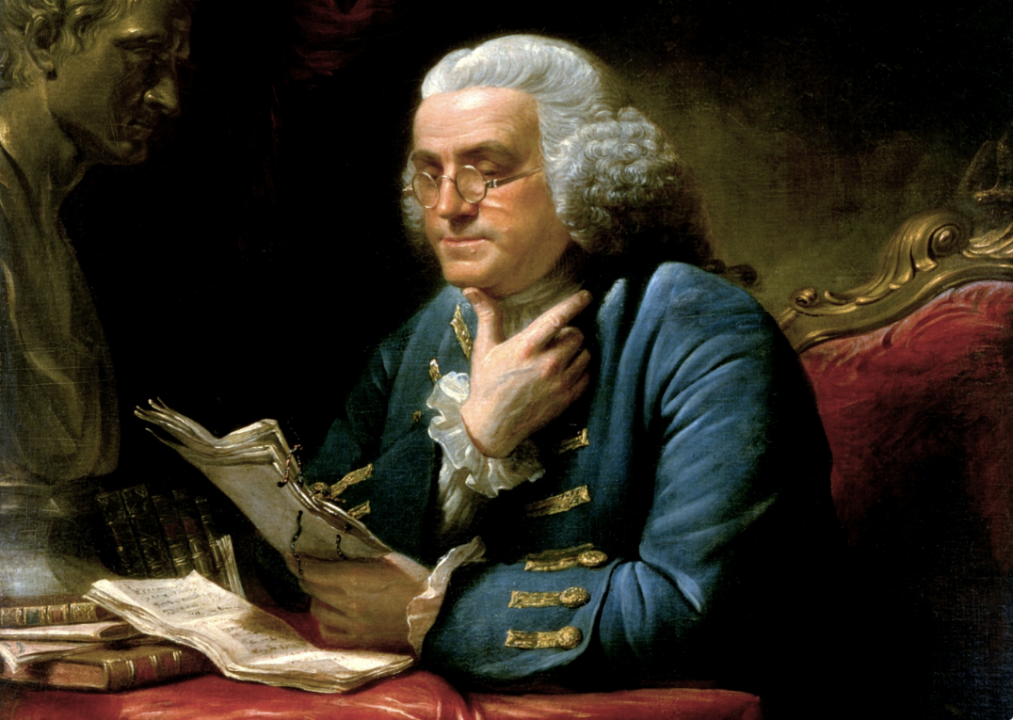
Public Domain // Wikimedia Commons
Question #68: What is one thing Benjamin Franklin is famous for?
Answer #68: U.S. diplomat; oldest member of the Constitutional Convention; first postmaster general of the United States; writer of “Poor Richard’s Almanac”; started the first free libraries.
Though famous for the many roles he had as a founding father, Benjamin Franklin is renowned for being the first postmaster general of the United States, appointed by the Continental Congress in 1775. Franklin had served in the same post in British Parliament and later became the first to take the position in America. After Benjamin Franklin, Samuel Osgood became the second postmaster general of the United States of America.
Question #69: Who is the “Father of Our Country”?
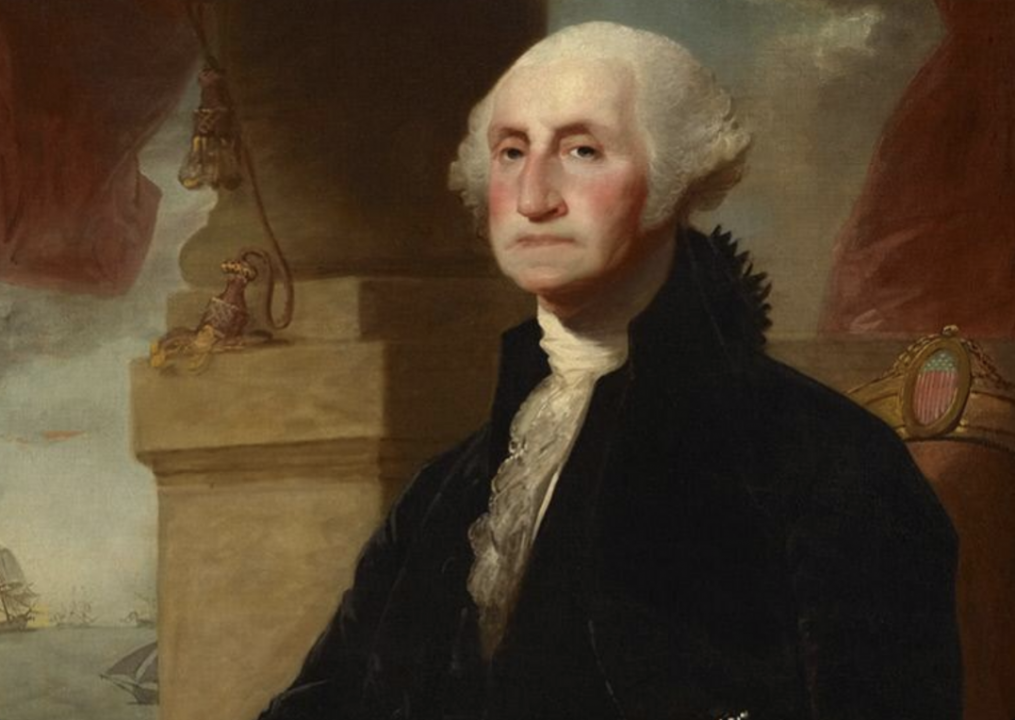
Public Domain // Wikimedia Commons
Question #69: Who is the “Father of Our Country”?
Answer #69: (George) Washington
George Washington is considered the “Father of Our Country.” Presiding over the Continental Congress, Washington, who was also the commander-in-chief of the Continental Army during the American Revolutionary War, became the first president of the U.S. He served two terms and later died on Dec. 14, 1799. The capital city of the U.S. is named after Washington.
Question #70: Who was the first president?
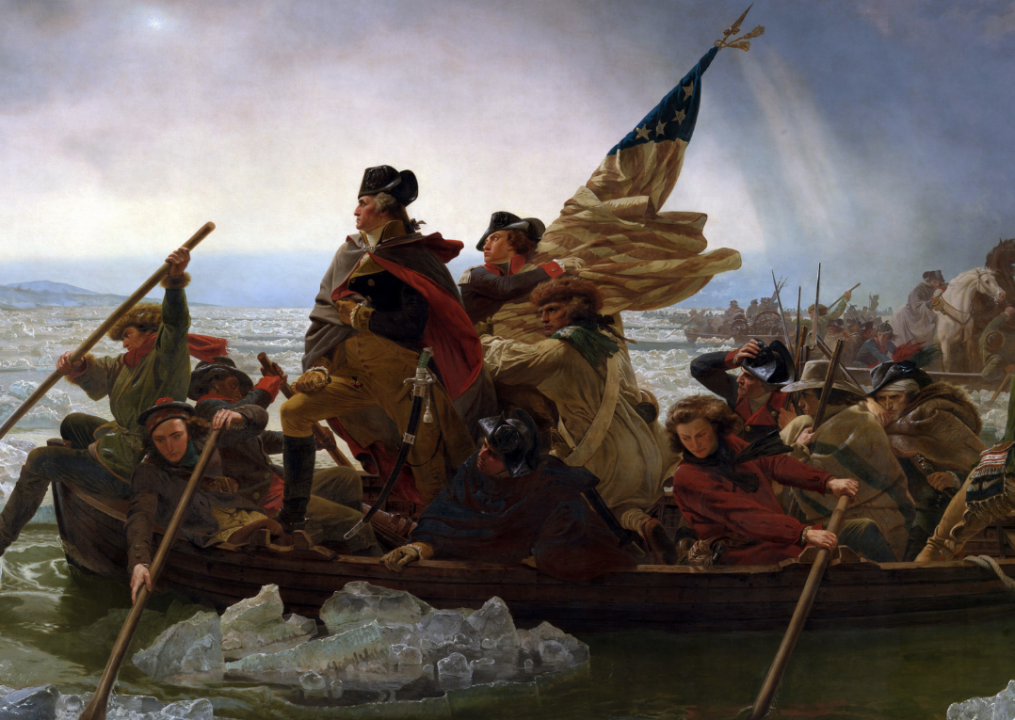
Public Domain // Wikimedia Commons
Question #70: Who was the first president?
Answer #70: (George) Washington
George Washington was the first U.S. president. Washington served two terms between 1789 and 1797 with John Adams as his vice president. Born in 1732 in Virginia to Augustine Sr. and Mary Ball Washington, he later fought in the French and Indian War in 1754 before becoming the commander-in-chief of the Continental Army in 1775.
Question #71: What territory did the United States buy from France in 1803?
You may also like: The only 7 countries that are on track to meet the Paris Agreement—and how they’re doing it
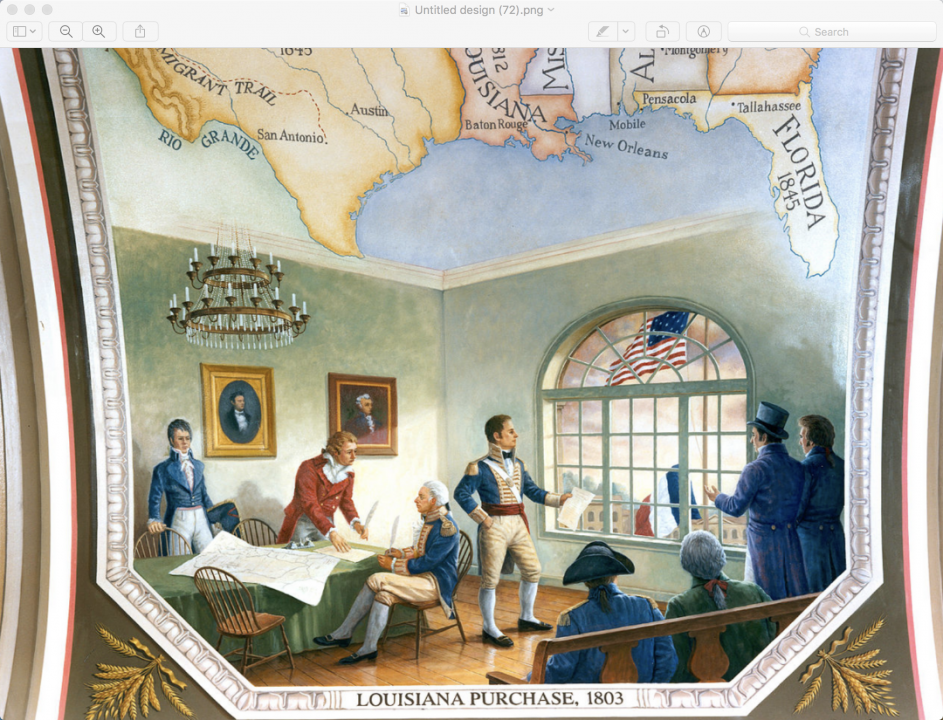
U.S. Capitol // Wikimedia Commons
Question #71: What territory did the United States buy from France in 1803?
Answer #71: The Louisiana Territory; Louisiana.
The Louisiana Purchase was the 1803 land deal between France and the U.S. that transferred ownership of formerly French territories to the U.S., including the districts of St. Louis, St. Charles, St. Genevieve, Cape Girardeau, and New Madrid. The Louisiana Territory was renamed the Missouri Territory in 1812 in order to avoid confusion with the newly announced State of Louisiana.
Question #72: Name one war fought by the United States in the 1800s.
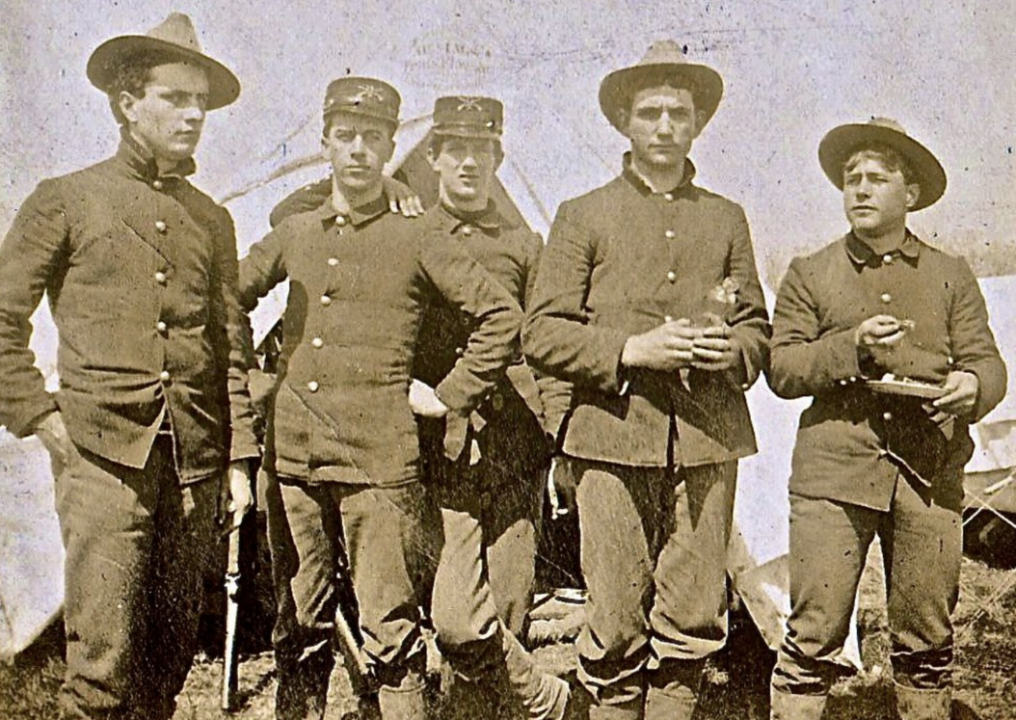
Public Domain // Wikimedia Commons
Question #72: Name one war fought by the United States in the 1800s.
Answer #72: War of 1812; Mexican-American War; Civil War; Spanish-American War.
The Spanish-American War took place in 1898. The war, which lasted three months, three weeks, and two days, resulted in an American victory and the Treaty of Paris that would end the Spanish Empire. The treaty gave the U.S. all rights to Cuba, Puerto Rico, Guam, and the Philippines, expanding its colonial influence in the Pacific.
Question #73: Name the U.S. war between the North and the South.
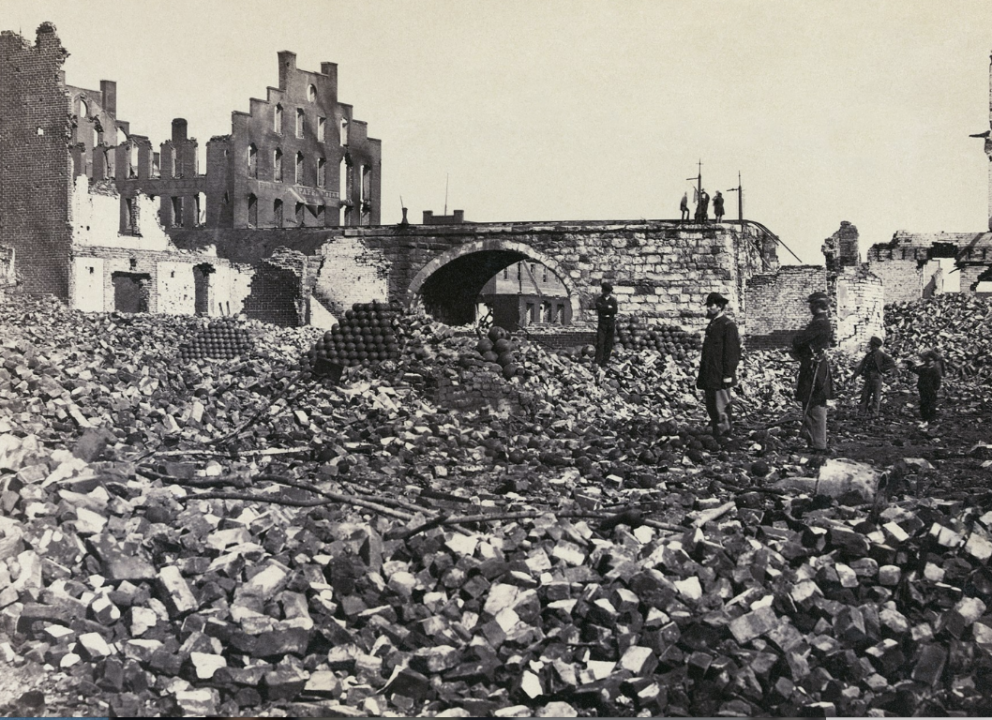
Andrew J. Russell // Wikimedia Commons
Question #73: Name the US war between the North and the South.
Answer #73: The Civil War; the War between the States.
States’ rights, westward expansion, and slavery were all critical reasons for the Civil War, also known as the War Between the States, fought between 1861 and 1865. Some southern states and Texas seceded and revolted against the northern states after President Abraham Lincoln was elected in 1860 and struggled to abolish slavery during the Civil War. The Battle of Gettysburg is considered the bloodiest fight in the Civil War.
Question #74: Name one problem that led to the Civil War.
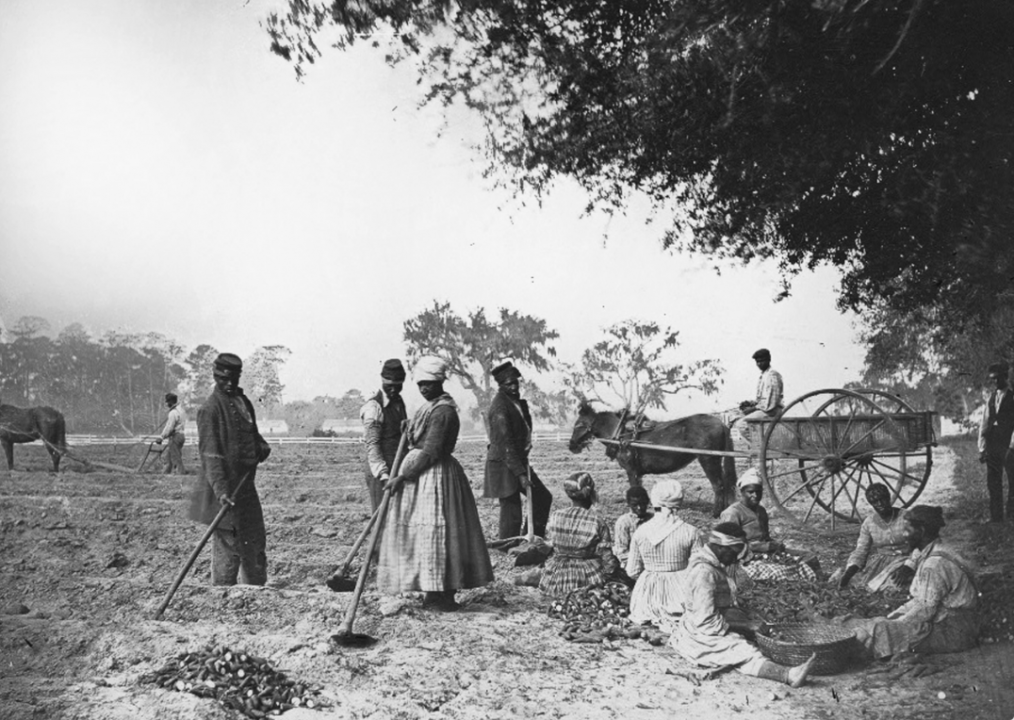
Henry P. Moore // Wikimedia Commons
Question #74: Name one problem that led to the Civil War.
Answer #74: Slavery; economic reasons; states’ rights.
Slavery is a notorious reason that led to the Civil War. The tensions between the northern and southern states, including enslaving African Americans, questions about state versus federal powers, and economic disagreements, came to a head when the Confederate Army attempted to seize Fort Sumter in South Carolina. After that, the Civil War continued for four years between 1861 to 1865, killing approximately 620,000.
Question #75: What was one important thing that Abraham Lincoln did?
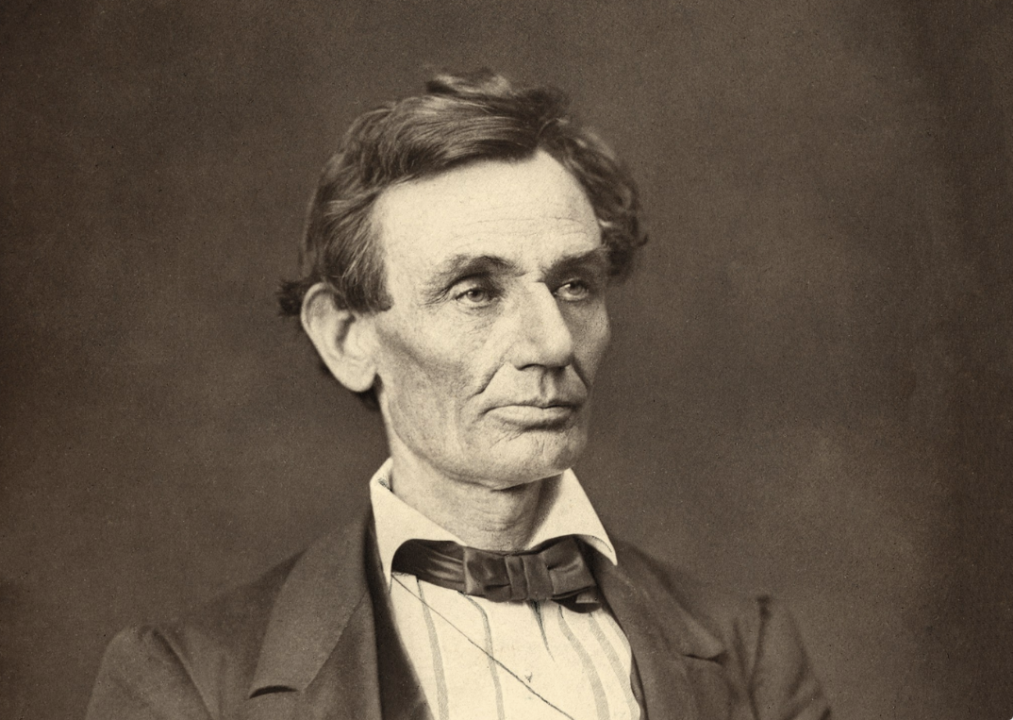
Alexander Hessler // Wikimedia Commons
Question #75: What was one important thing that Abraham Lincoln did?
Answer #75: Freed the slaves (Emancipation Proclamation); saved (or preserved) the Union; led the United States during the Civil War.
Abraham Lincoln was the 16th president and the commander-in-chief during the Civil War. Lincoln preserved the Union by ending the war and simultaneously freed the slaves by signing the Emancipation Proclamation. His accomplishments, especially abolishing slavery, make Lincoln one of the most famous presidents of all time. His 1865 assassination by John Wilkes Booth is an infamous event in U.S. History.
Question #76: What did the Emancipation Proclamation do?
You may also like: Most dangerous countries for journalists
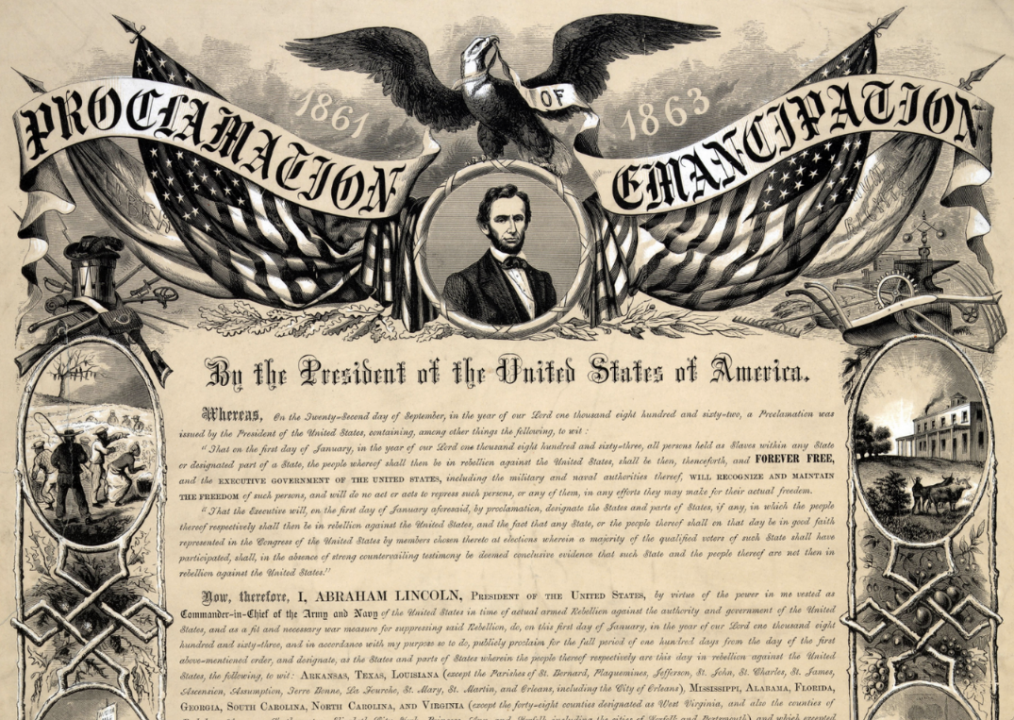
Public Domain // Wikimedia Commons
Question #76: What did the Emancipation Proclamation do?
Answer #76: Freed the slaves; freed slaves in the Confederacy; freed slaves in the Confederate states; freed slaves in most southern states.
The Emancipation Proclamation was the first proposal to free African American men and women from slavery since they and their ancestors had been brought to the U.S. against their will. In 1863, during the Civil War, President Abraham Lincoln issued the Emancipation Proclamation, which changed the status of African Americans from slaves to free men and women in some states. The document remains in the National Archives in Washington D.C.
Question #77: What did Susan B. Anthony do?
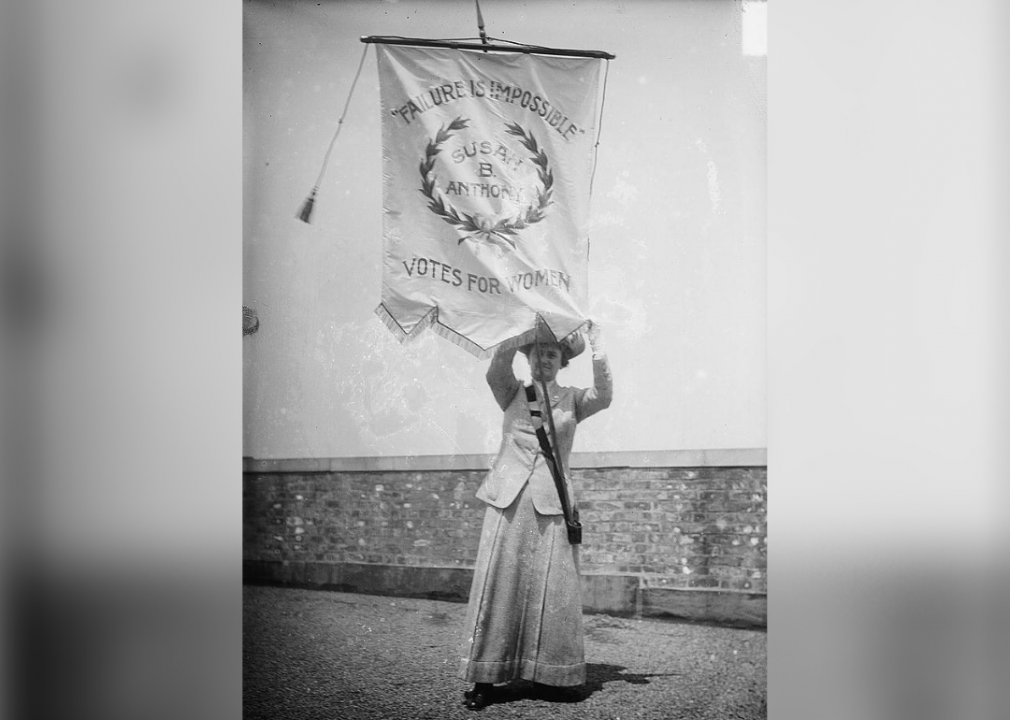
Library of Congress // Flickr
Question #77: What did Susan B. Anthony do?
Answer #77: Fought for women’s rights; fought for civil rights.
Most known for her activism for women’s rights, Susan B. Anthony, who was born in 1820 and died in 1906, was a leader of the women’s suffrage movement. Anthony greatly opposed the amendment to the U.S. Constitution that allowed for African American men to vote, but still barred women from casting ballots. A U.S. dollar coin was minted in her honor during 1979–81 and again in 1999.
Question #78: Name one war fought by the United States in the 1900s.
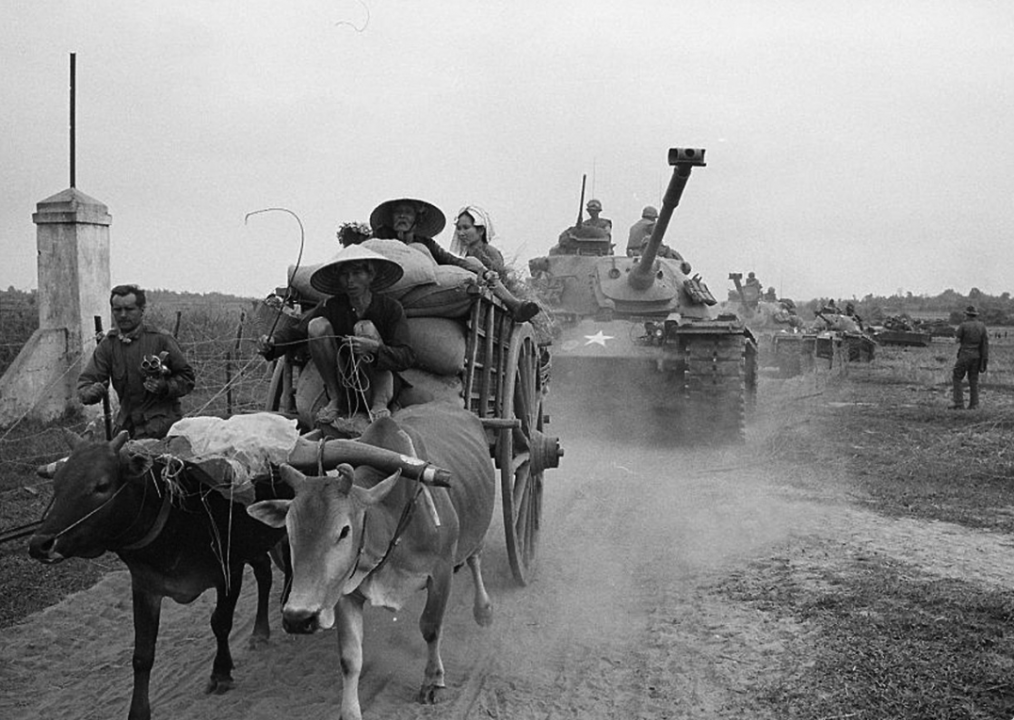
manhahi // Flickr
Question #78: Name one war fought by the United States in the 1900s.
Answer #78: World War I; World War II; Korean War; Vietnam War; (Persian) Gulf War.
The Vietnam War, caused by the conflict between North and South Vietnam, was fought between 1955 and 1975. As an ally to South Vietnam, the U.S. sent troops overseas to fight on behalf of South Vietnamese civilians. More than 3 million people died in the entirety of the Vietnam War. The Fall of Saigon marked the end of the war and a major loss for the US military. Almost 60,000 Americans died in the Vietnam War.
Question #79: Who was president during World War I?
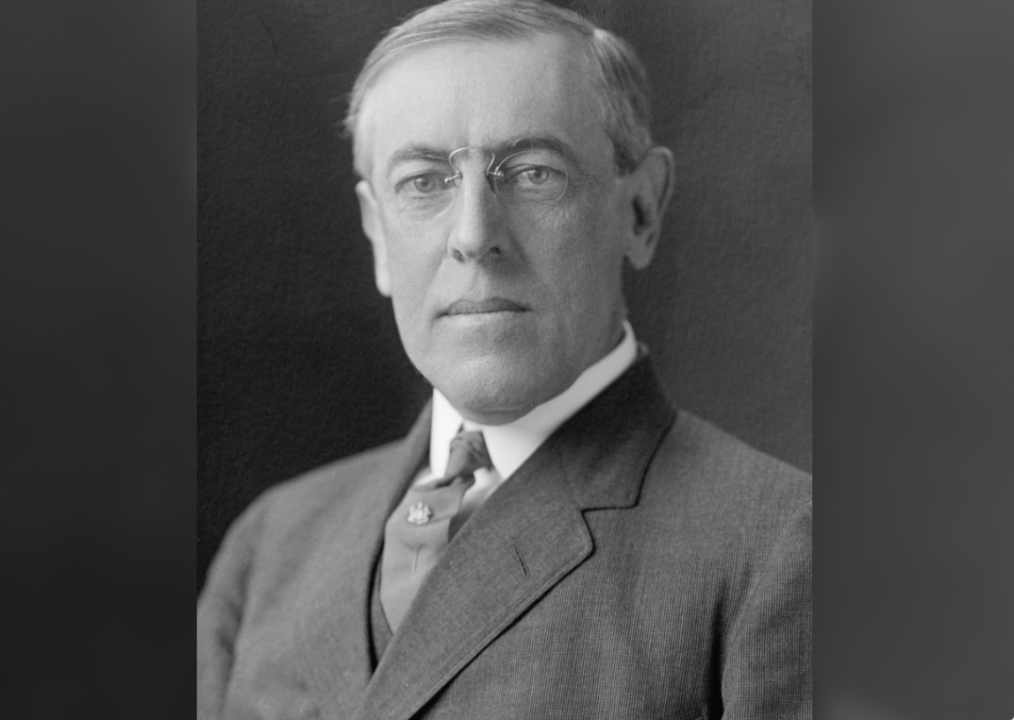
Harris & Ewing // Wikimedia Commons
Question #79: Who was president during World War I?
Answer #79: (Woodrow) Wilson
President Woodrow Wilson, who served two consecutive terms from 1913 to 1921, led the nation during World War I, also known as the Great War. Fought between 1914 and 1918, the war has been called “the war to end all wars,” due to the mobilization of tens of millions of soldiers in an armed conflict; however, World War II occurred 20 years later. The Treaty of Versailles ended World War I.
Question #80: Who was president during the Great Depression and World War II?
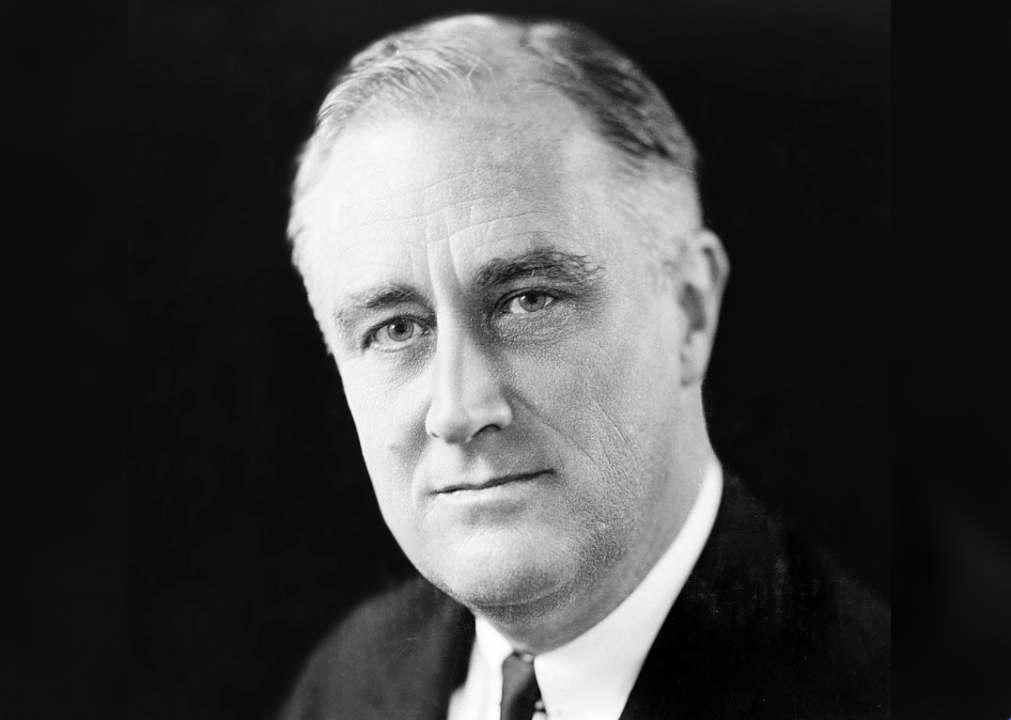
Elias Goldensky // Wikimedia Commons
Question #80: Who was president during the Great Depression and World War II?
Answer #80: (Franklin) Roosevelt
Franklin Delano Roosevelt, often called FDR, was the 32nd president and served during both the Great Depression and World War II. During the Great Depression, Roosevelt proposed the New Deal, a domestic agenda that offered financial reform and relief after a stock market crash led to the worst depression in U.S. history.
Question #81: Who did the United States fight in World War II?
You may also like: How well do you remember 1969?
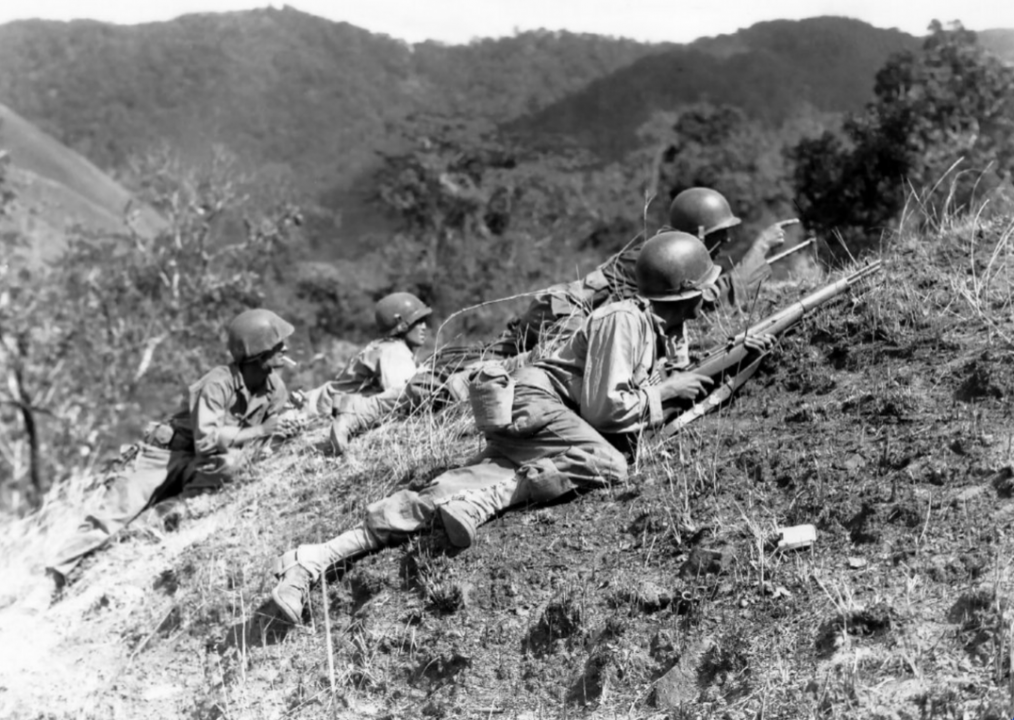
Public Domain // Wikimedia Commons
Question #81: Who did the United States fight in World War II?
Answer #81: Japan, Germany, and Italy.
The U.S. fought Japan, Germany, and Italy in World War II between 1939 and 1945. During the war, the bombing of Pearl Harbor, a surprise attack on a U.S. Naval base in Hawaii, killed thousands of American soldiers and civilians. In total, approximately 55 million people died in World War II during the six years it lasted. War-related famine and disease killed millions more after the war officially ended.
Question #82: Before he was president, Eisenhower was a general. What war was he in?
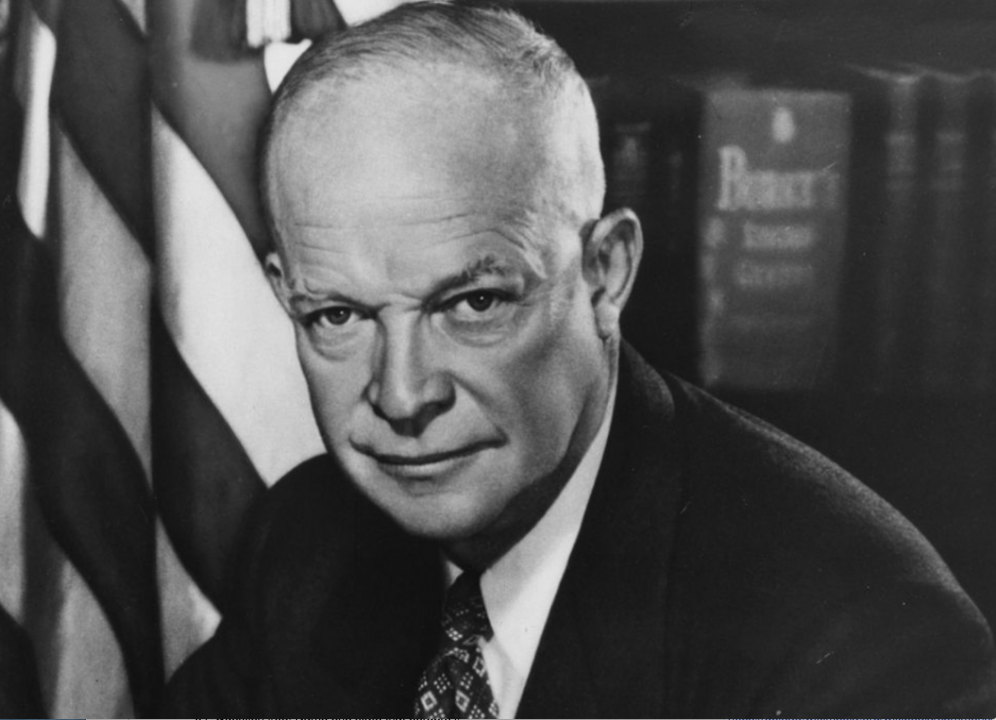
Public Domain // Wikimedia Commons
Question #82: Before he was president, Eisenhower was a general. What war was he in?
Answer #82: World War II
The 34th president, Dwight D. Eisenhower, was also a five-star general in the U.S. Army during World War II. Often referred to as Ike, Eisenhower became the supreme commander of the Allied Expeditionary Force in December 1943, spearheading the invasion of Nazi-occupied Europe by Allied troops. Upon arriving home to America in 1945, Ike served as U.S. Army chief of staff until 1948 when he left active duty. He would serve as president of Columbia University in New York City and take command of the North Atlantic Treaty Organization forces in Europe at the request of President Harry S. Truman before serving as U.S. president from 1953–61.
Question #83: During the Cold War, what was the main concern of the United States?
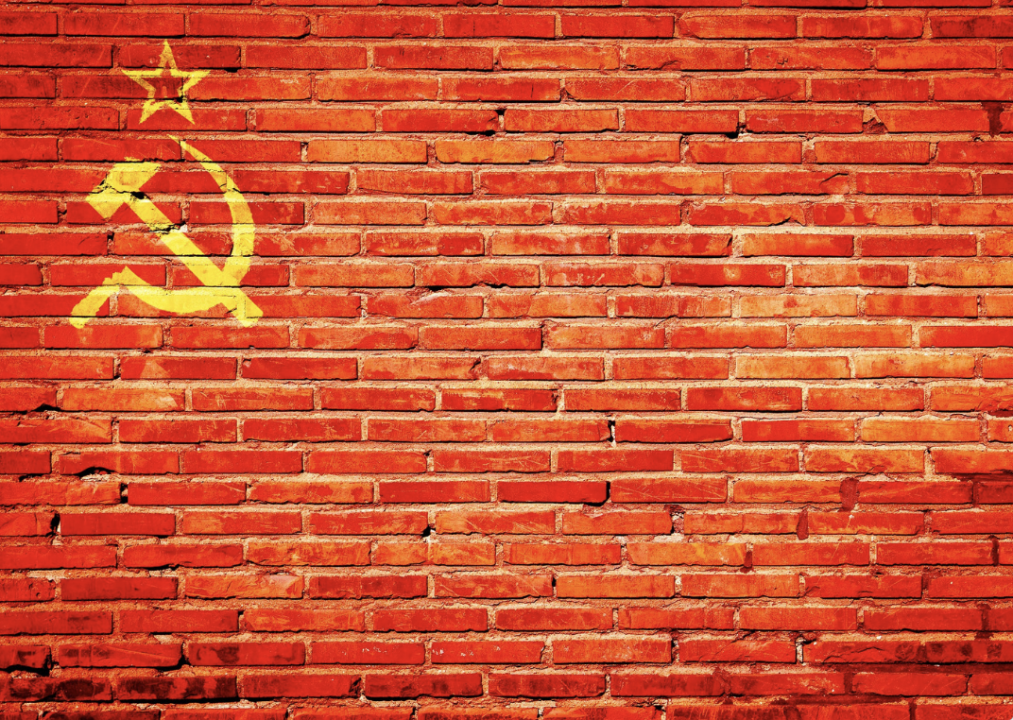
Pixabay
Question #83: During the Cold War, what was the main concern of the United States?
Answer #83: Communism
Soviet Union communism, based on an ideal of a classless political and economic society, was the main concern the U.S. had during the Cold War. Russian leader Joseph Stalin ran an oppressive and murderous regime while the threat of nuclear war grew throughout the world.
Question #84: What movement tried to end racial discrimination?
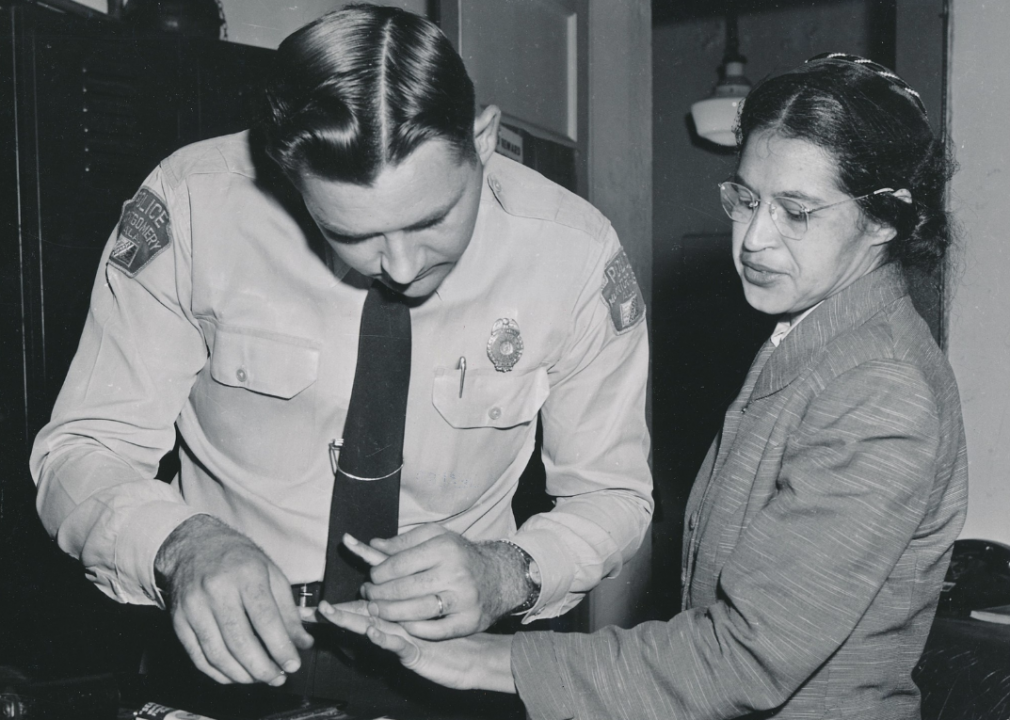
Associated Press // Wikimedia Commons
Question #84: What movement tried to end racial discrimination?
Answer #84: Civil rights (movement).
The fight for constitutional rights for African Americans gained national prominence with the Civil Rights movement, which occurred during the 1950s and 1960s. Rosa Parks, an African American activist who refused to sit in the back of a segregated bus in 1955, became a symbol of the strategy of civil disobedience in protest of oppressive and exclusionary laws.
Question #85: What did Martin Luther King Jr. do?
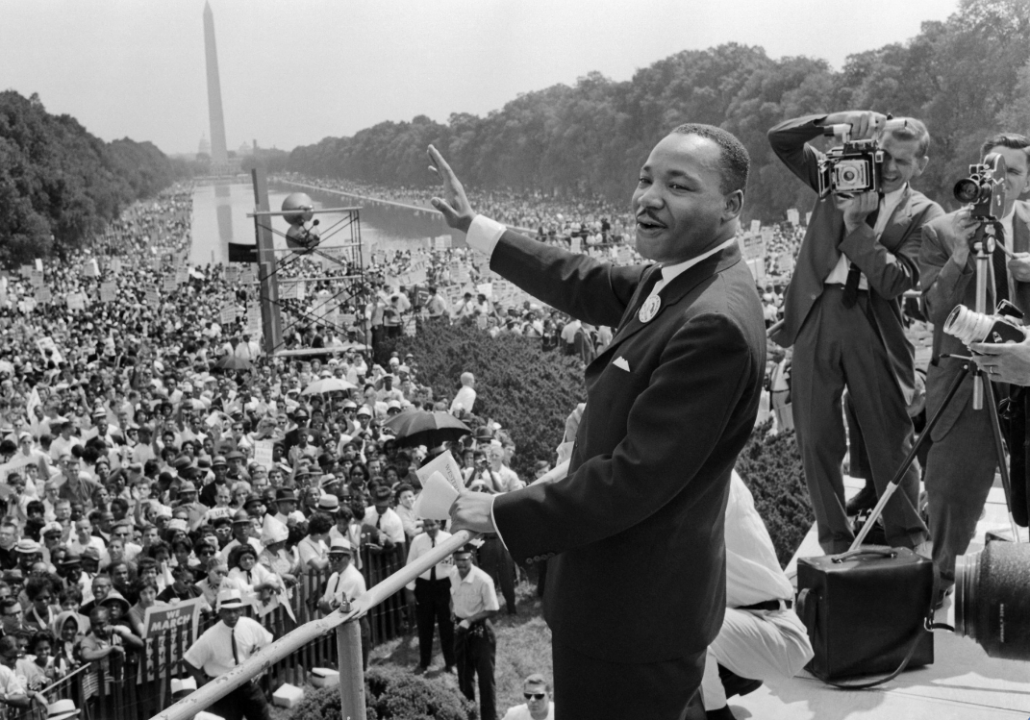
AFP // Getty Images
Question #85: What did Martin Luther King Jr. do?
Answer #85: Fought for civil rights; worked for equality for all Americans.
Martin Luther King Jr. was a prominent leader of the civil rights movement. The American Baptist minister challenged existing civil structures during the movement from 1954 to 1968 and advocated for complete racial equality in the United States. After King’s assassination in 1968, President Ronald Reagan signed legislation in 1983 memorializing the third Monday in January as the federal holiday called Martin Luther King Jr. Day.
Question #86: What major event happened on Sept. 11, 2001, in the United States?
You may also like: Oldest cities in America

Mario Tama // Getty Images
Question #86: What major event happened on Sept. 11, 2001, in the United States?
Answer #86: Terrorists attacked the United States.
Sept. 11, 2001, was the single deadliest terrorist attacks on U.S. soil. The attack was carried out by the radical Islamic group al-Qaida, led by Osama bin Laden. Four planes hijacked by terrorists crashed into the World Trade Center, the Pentagon, and a field in Pennsylvania, killing approximately 3,000 people almost simultaneously. Thousands of others were injured, and many cleanup volunteers developed related respiratory disease due to airborne toxins at the World Trade Center site.
Question #87: Name one American Indian tribe in the United States.
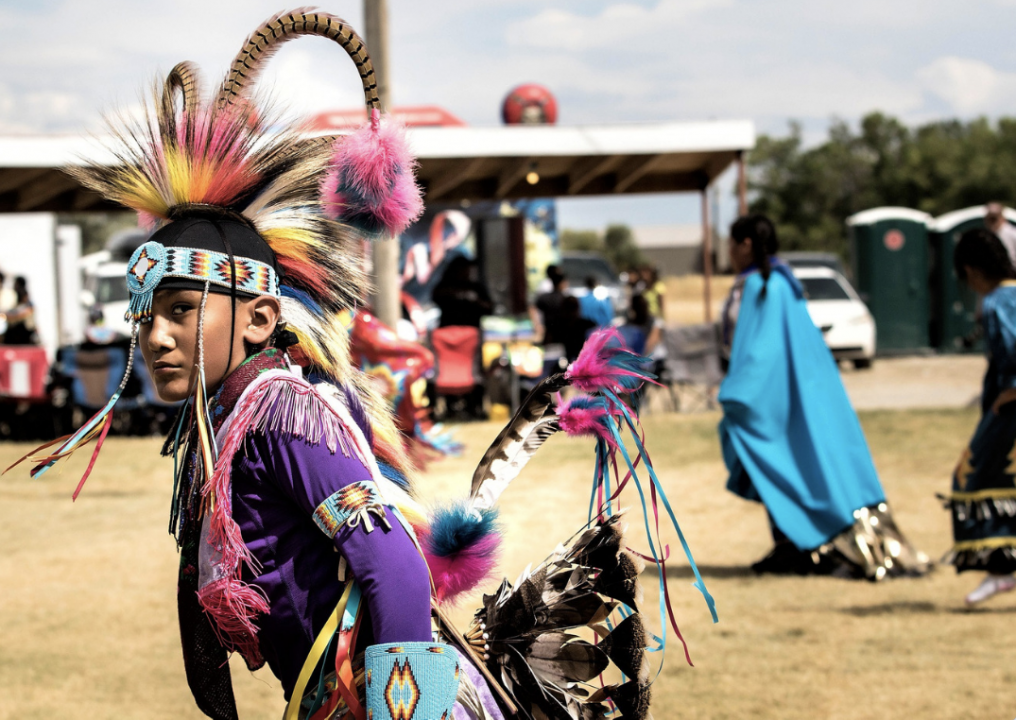
Pixabay
Question #87: Name one American Indian tribe in the United States.
Answer #87: [USCIS Officers will be supplied with a list of federally recognized American Indian tribes.]; Cherokee; Navajo; Sioux; Chippewa; Choctaw; Pueblo; Apache; Iroquois; Creek; Blackfeet; Seminole; Cheyenne; Arawak; Shawnee; Mohegan; Huron; Oneida; Lakota; Crow; Teton; Hopi; Inuit.
The Cherokee Indian tribe is currently the largest tribe by membership in the United States. Some of the most populous and powerful Native tribes on the continent during the pre-colonial period were the Iroquois in the Northeast, the Blackfeet in the North-Midwest, and the Seminole in the Southeast; members of these and many other tribes are still fighting for the rights of Native Americans throughout the country.
Question #88: Name one of the two longest rivers in the United States.
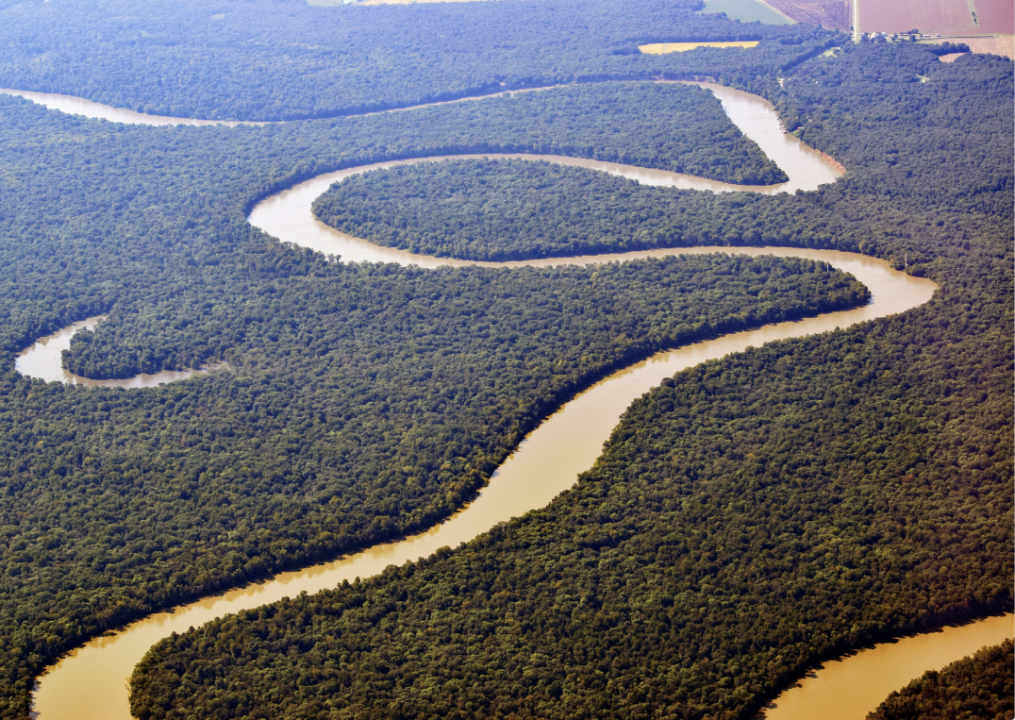
Tracy Burroughs Brown // Shutterstock
Question #88: Name one of the two longest rivers in the United States.
Answer #88: Missouri; Mississippi.
The Mississippi River is the second longest in the U.S., with its headwater Lake Itasca in northern Minnesota. The Mississippi River, which courses through 10 states, was an important geographic feature to the Chickasaw, Choctaw, Natchez, and Seminole Native American tribes of that region, among others. They and later American colonists used the river system for transportation, water, and food. After the War of 1812, the primary river system would play a significant part in the industrial revolution in America until approximately 1840.
Question #89: What ocean is on the West Coast of the United States?
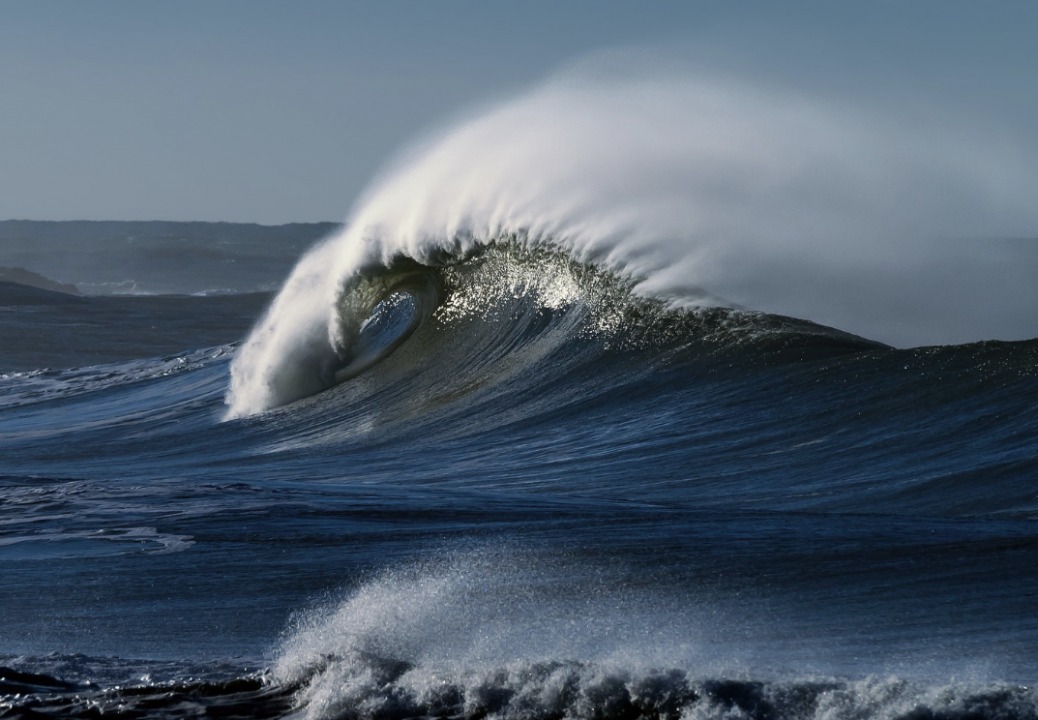
Pixabay
Question #89: What ocean is on the West Coast of the United States?
Answer #89: Pacific Ocean
The Pacific Ocean is the on the West Coast of the U.S. As the largest and deepest ocean in the world, the Pacific covers almost 63 million square miles of the earth’s surface. The deepest part of the Pacific, also named Challenger Deep or the Marianas Trench, is near the Marianas Islands Group and was discovered between 1872 and 1876 by the small British Royal Navy warship and vessel HMS Challenger.
Question #90: What ocean is on the East Coast of the United States?
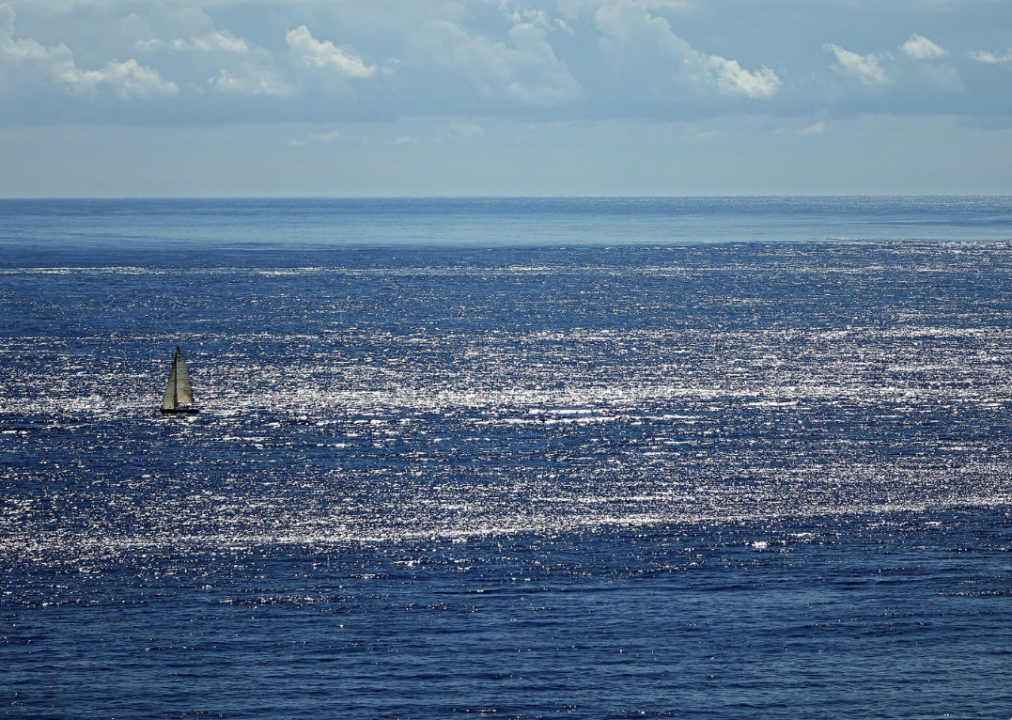
Pixabay
Question #90: What ocean is on the East Coast of the United States?
Answer #90: Atlantic Ocean
The Atlantic Ocean is on the East Coast of the U.S. The Atlantic, the second largest body of water on Earth after the Pacific Ocean, separates “The Old World” of Africa, Asia, and Europe from the “The New World” of the Americas. The Panama Canal, owned by the Republic of Panama, is the only human-made waterway connecting the Atlantic and Pacific Oceans.
Question #91: Name one U.S. territory.
You may also like: Countries that have mandatory voting
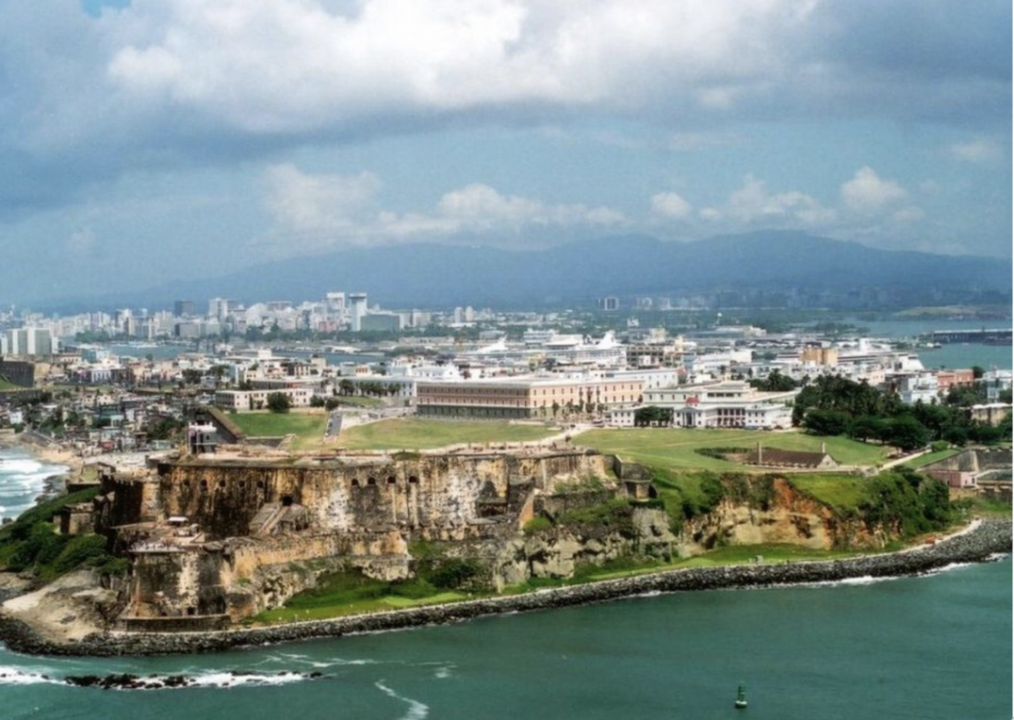
U.S. National Park Service // Wikimedia Commons
Question #91: Name one US territory.
Answer #91: Puerto Rico; U.S. Virgin Islands; American Samoa; Northern Marianas Islands; Guam.
One well-known U.S. territory is Puerto Rico. The island in the Caribbean Sea, acquired by American in the Treaty of Paris at the end of the 1800s, is not represented by any member of U.S. Congress. President Woodrow Wilson signed the Jones-Shafroth Act, giving Puerto Ricans U.S. citizenship regardless of their lack of say in the federal government.
Question #92: Name one state that borders Canada.
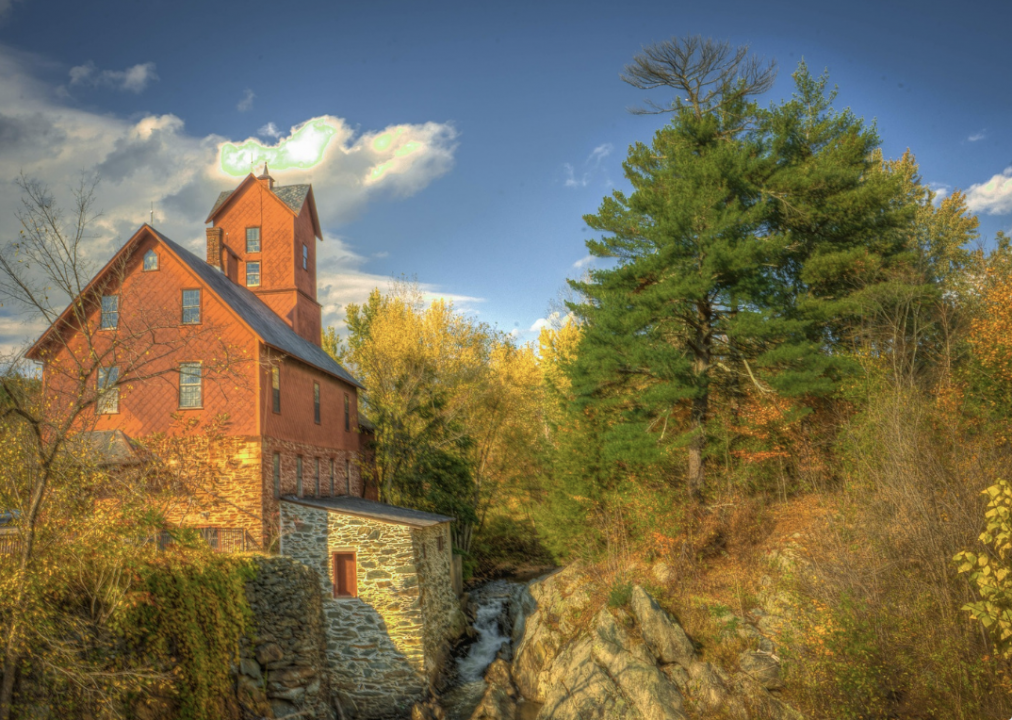
Pixabay
Question #92: Name one state that borders Canada.
Answer #92: Maine; New Hampshire; Vermont; New York; Pennsylvania; Ohio; Michigan; Minnesota; North Dakota; Montana; Idaho; Washington; Alaska.
New York State borders the Canadian Provinces of Montreal and Quebec by 445 miles. New York has heavily traveled border crossings, including the famous crossing at Buffalo-Niagara Falls. Other small towns in New York State that border Canada are Alexandria Bay, Ogdensburg, and Massena. To enter Canada from New York, travelers must have a Passport or a New York State Enhanced License.
Question #93: Name one state that borders Mexico.
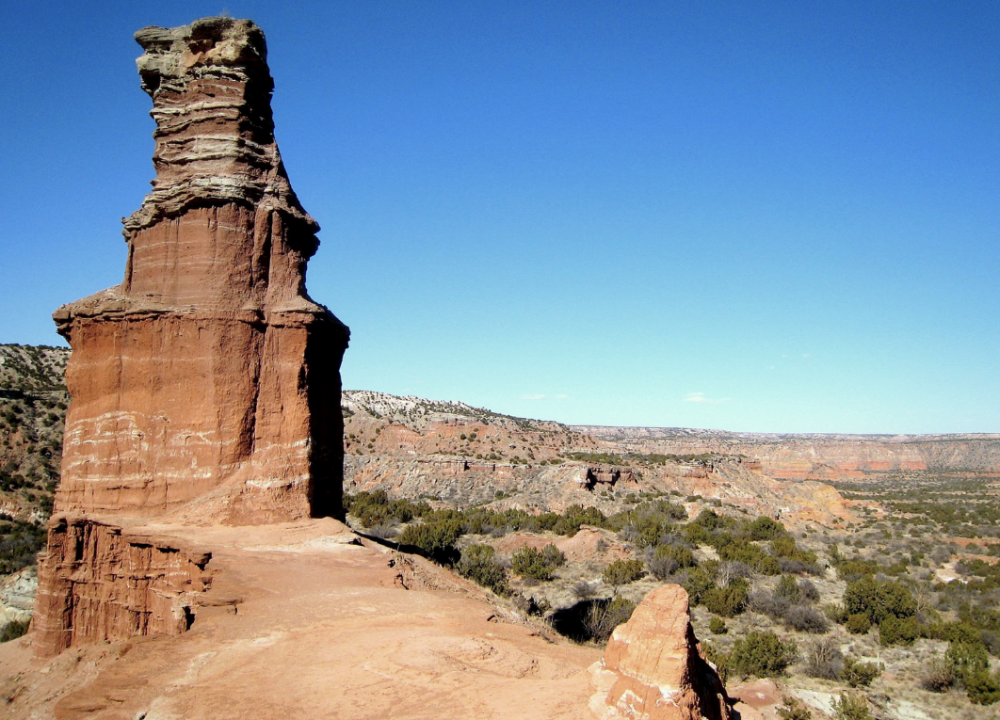
Peter Fitzgerald // Wikimedia Commons
Question #93: Name one state that borders Mexico.
Answer #93: California; Arizona; New Mexico; Texas.
The state of California borders Mexico. The U.S.-Mexico border, which is 1,933 miles long, has a fence on approximately 700 miles of its length. The border fence between San Diego, Calif., and Mexico extends into the Pacific Ocean while the Rio Grande waterway border between Texas acts as a natural barrier to crossing.
Question #94: What is the capital of the United States?
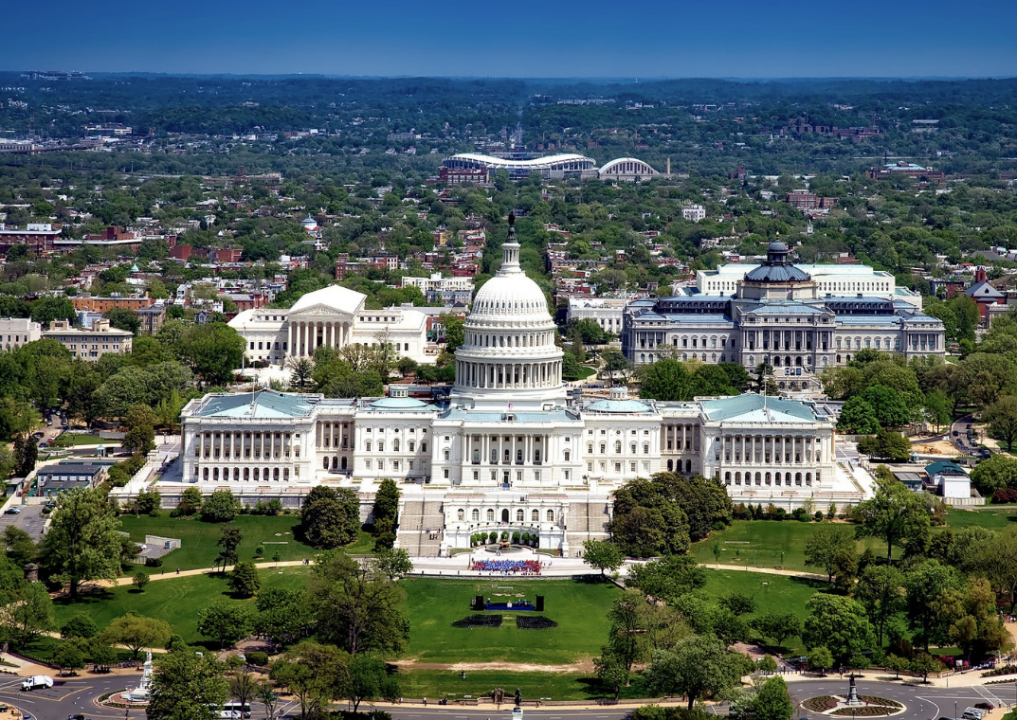
Pixabay
Question #94: What is the capital of the United States?
Answer #94: Washington D.C.
Washington D.C. is the capital of the U.S. Named after President George Washington, who is considered the “Father of Our Country,” the city is where all presidents live and conduct federal business during their tenure. The White House, where the U.S. president works and resides, and the U.S. Capitol, where U.S. Congress passes the law, are both in Washington D.C.
Question #95: Where is the Statue of Liberty?
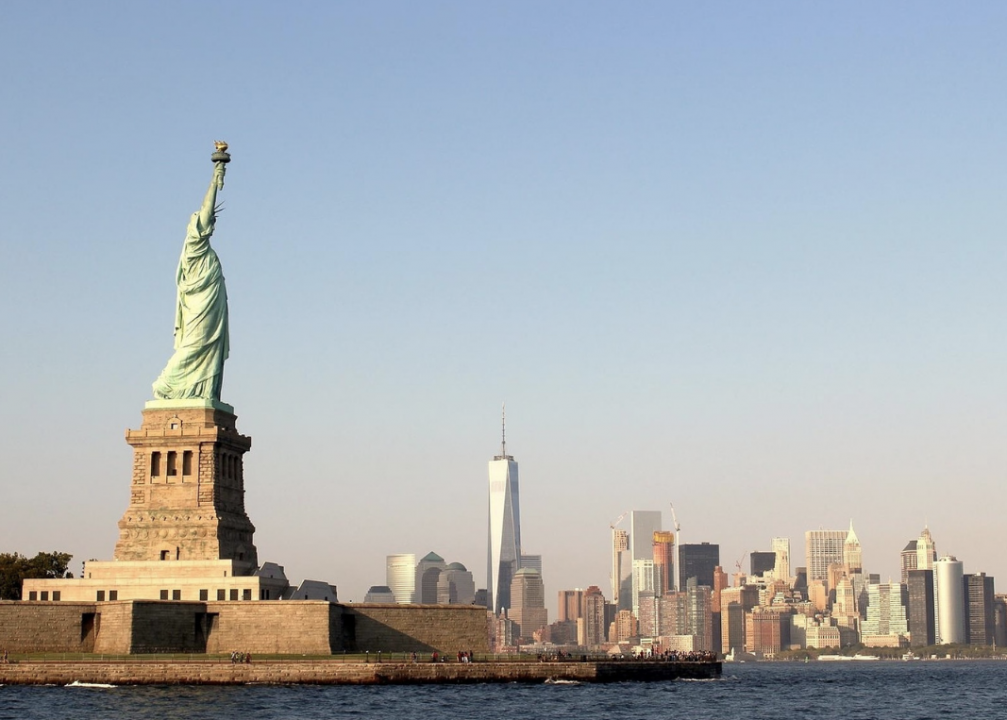
Pixabay
Question #95: Where is the Statue of Liberty?
Answer #95: New York (Harbor); Liberty Island; Also acceptable are New Jersey, near New York City, and on the Hudson (River).
The Statue of Liberty national monument, located on Liberty Island in New York Harbor, was a gift from France to the United States in 1886. The statue, sometimes referred to as Lady Liberty, is a copper sculpture of a Roman liberty goddess holding a tablet with America’s birthdate, July 4, 1776, in one hand and a torch in another. The famous neoclassical sculpture is a universal sign of freedom around the world.
Question #96: Why does the flag have 13 stripes?
You may also like: 10 most common items polluting the ocean
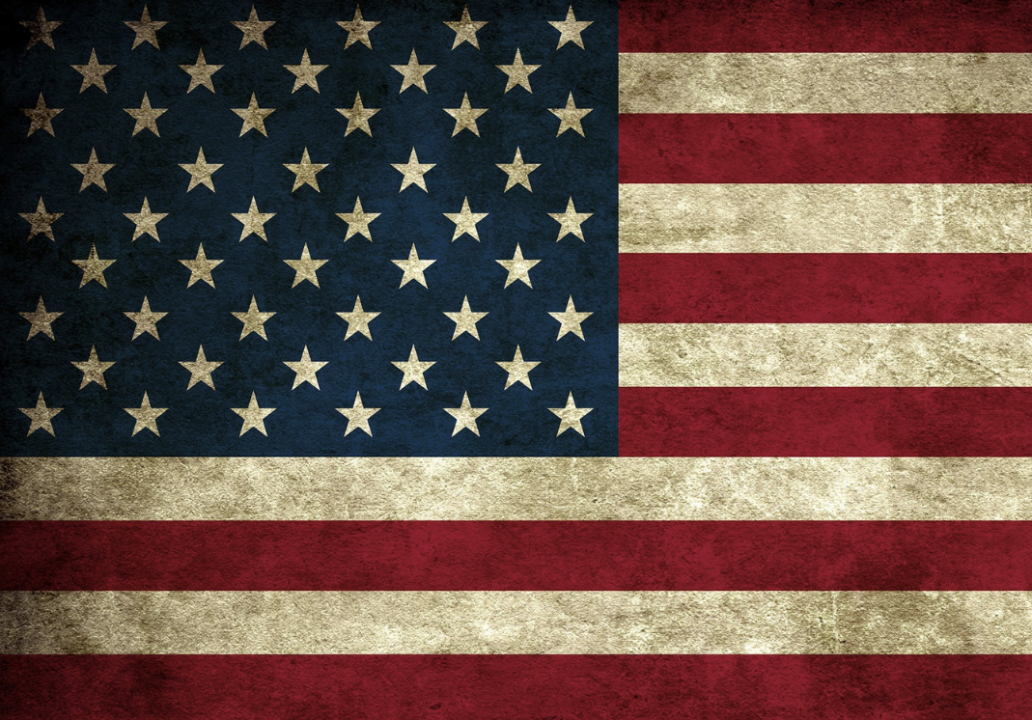
Pixabay
Question #96: Why does the flag have 13 stripes?
Answer #96: Because there were 13 original colonies; because the stripes represent the original colonies.
The American flag has 13 stripes to represent the original colonies, also known as the Thirteen British Colonies. The original provinces and state capitals in alphabetical order include: Hartford, Connecticut; Dover, Delaware; Atlanta, Georgia; Annapolis, Maryland; Boston, Massachusetts; Trenton, New Jersey; Albany, New York; Concord, New Hampshire; Raleigh, North Carolina; Harrisburg, Pennsylvania; Providence, Rhode Island; Columbia, South Carolina; and Richmond, Virginia.
Question #97: Why does the flag have 50 stars?
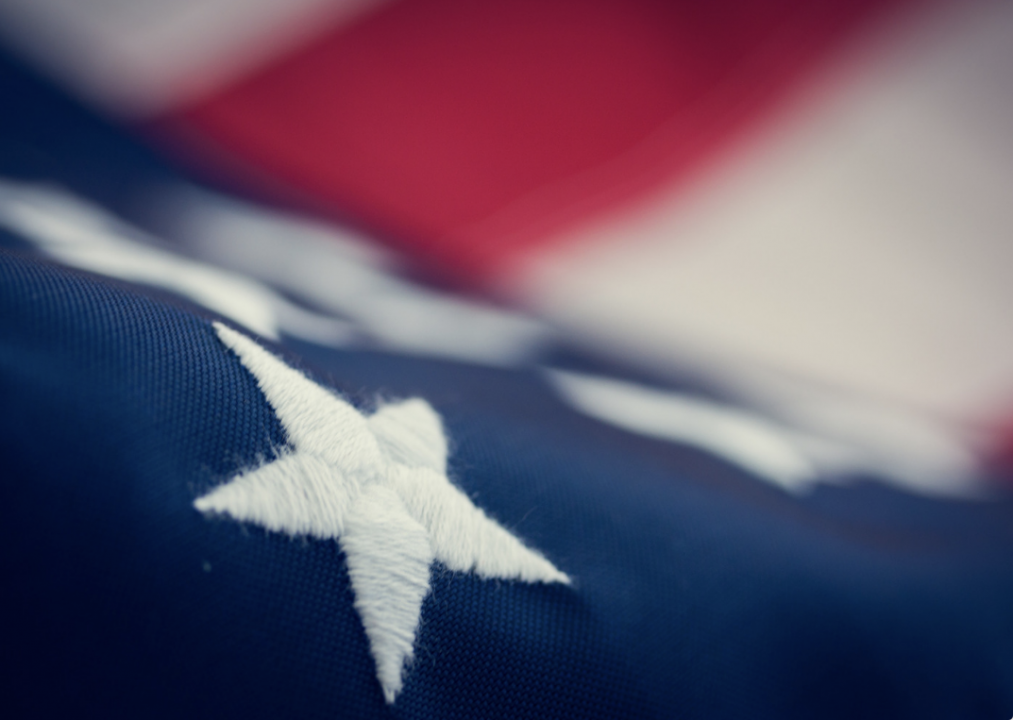
Nchi // Shutterstock
Question #97: Why does the flag have 50 stars?
Answer #97: Because there is one star for each state; because each star represents a state; because there are 50 states.
Referred to as Stars and Stripes or Old Glory, the flag has 50 stars to represent each of the United States of America. The stripes, which alternate red and white and represent the original 13 colonies of America, were placed on the flag on June 14, 1777, and the 50 stars for 50 states theme was adopted on July 4, 1960. The present version, ordered by President Dwight D. Eisenhower, is the 27th iteration of the American flag.
Question #98: What is the name of the national anthem?
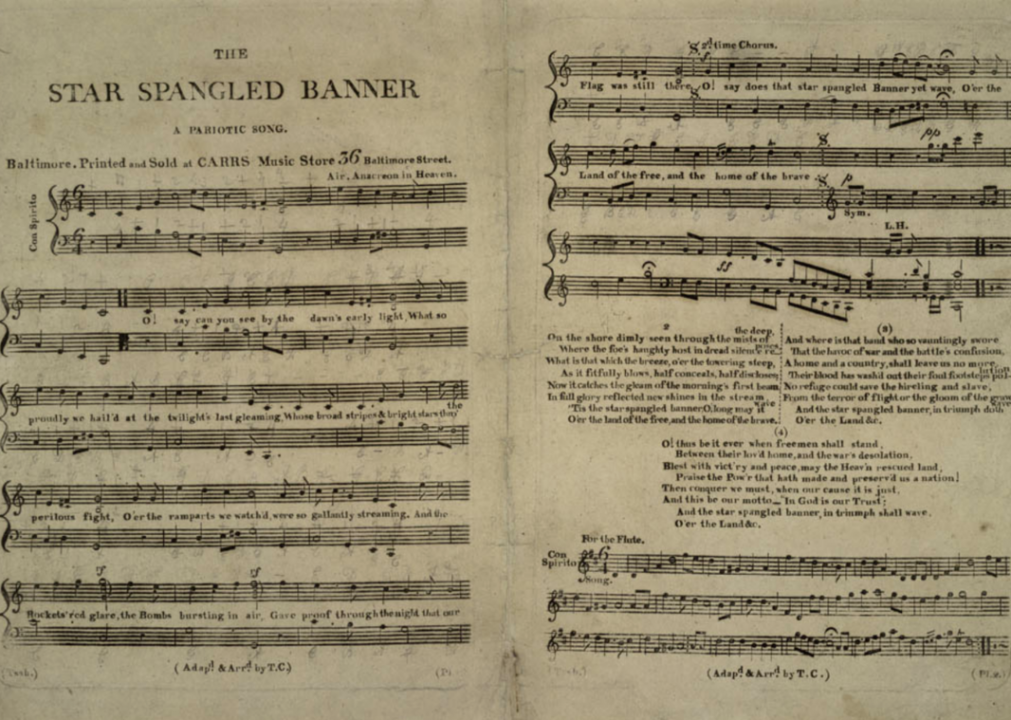
Public Domain // Wikimedia Commons
Question #98: What is the name of the national anthem?
Answer #98: “The Star-Spangled Banner.”
The name of America’s national anthem is “The Star-Spangled Banner,” which was written by lawyer Francis Scott Key in 1814 after he witnessed the Fort Henry bombing in Baltimore, Md., during the War of 1812. John Stafford Smith wrote the music that accompanies the anthem’s lyrics. In 1931, President Herbert Hoover signed the congressional resolution to make the song the official U.S. anthem.
Question #99: When do we celebrate Independence Day?
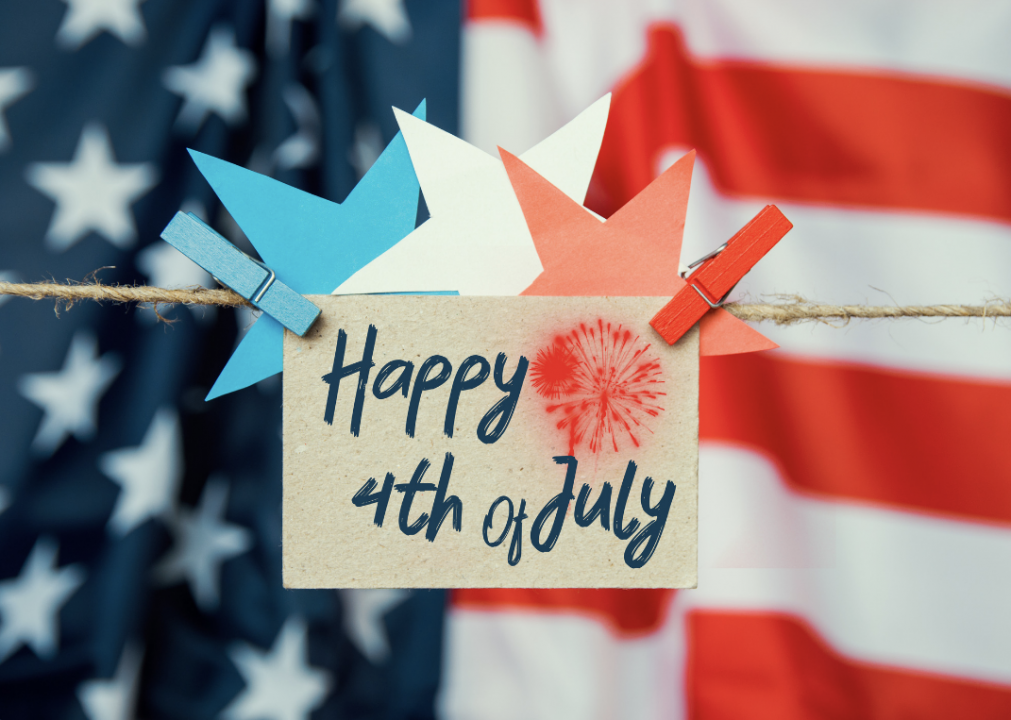
romantitov // Shutterstock
Question #99: When do we celebrate Independence Day?
Answer #99: July 4
We celebrate the federal holiday on July 4 to commemorate the Declaration of Independence, the official document that formalized the break between the U.S. and Great Britain, which was signed on the same day in 1776. Every July for nearly 250 years, Americans nationwide have celebrated the nation’s birthday with parades, picnics, and fireworks to mark the occasion.
Question #100: Name two national U.S. holidays.
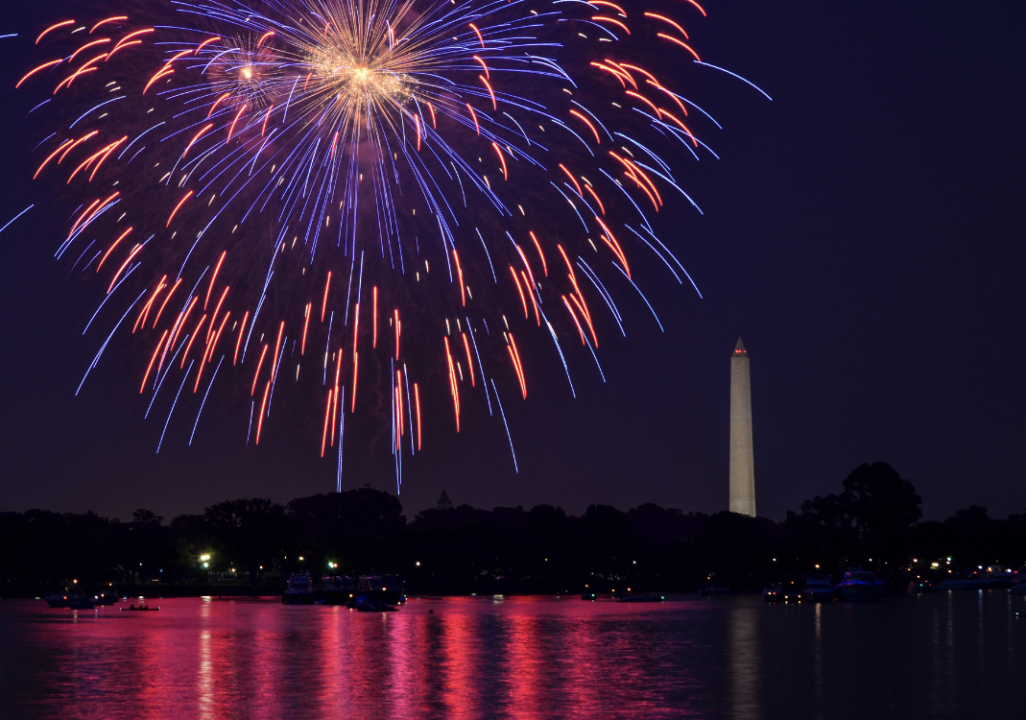
melissmn // Shutterstock
Question #100: Name two national US holidays.
Answer #100: Fourth of July and Memorial Day.
Two national U.S. holidays are 4th of July and Memorial Day. July 4, also called Independence Day, represents America’s birthday, and Memorial Day commemorates the death of all armed forces members who lost their lives while fighting for or defending America’s freedom. The date of Memorial Day changes annually; however, it always falls on the last Monday of May.
You may also like: Most lopsided state legislatures in America
